PETRO, post graffiti in Russia: Creating aesthetics with the power of the mind
Inputs and classical style writing
PETRO was born in 1984 in the town of Zhukovsky situated 25 km away from Moscow, where he still lives and works today. It is the city of aircraft construction, associated with military aviation, institutes and test centers. The city is full of interesting places surrounded by nature where PETRO could find different spots to create his graffiti pieces. In his family some members were artists, his grandmother started to paint at the age of 40, was self-taught, developed her own recognizable style of abstract expressionism, and succeeded in exhibiting her works in Moscow and other European cities. His father painted as well, but for him it was a hobby, and he never aspired to do it professionally. As a child, PETRO drew and painted a lot together with his father, mostly landscapes and still lifes, but the instruments of painting (gouache, watercolor, oil) did not appeal to him very much, painting and drawing seemed to him old-fashioned and not modern enough. At the age of 15, in 2000, PETRO started listening to rap music, and began to study all sides of hip-hop culture. The first graffiti pieces he saw were some rare ones in his city and along the railway tracks, leading to Moscow. Through rap video clips, teenage programs on TV and magazines related to hip-hop he discovered the graffiti culture. In the early 2000s, his father had Internet at work, and could download whole graffiti sites for his son. At that time the only store dedicated to graffiti assortment was in Moscow. PETROs first tags were with his first short-live nickname MAS and in Zhukovsky only five writers were painting at that time. Two of them ended up with PETRO in the same class at school. In 2001, the ZS crew (Zhukovsky Stuff) was formed with KNOCK, STAS, PETRO and they started to exchange information, develop their style and go to various hip-hop festivals. There they met other writers from other cities, exchanged photographs and bought rare videos by foreign writers. Later, the Internet began to appear in private homes and basic information became more accessible, networking between cities for Graffiti writers possible.
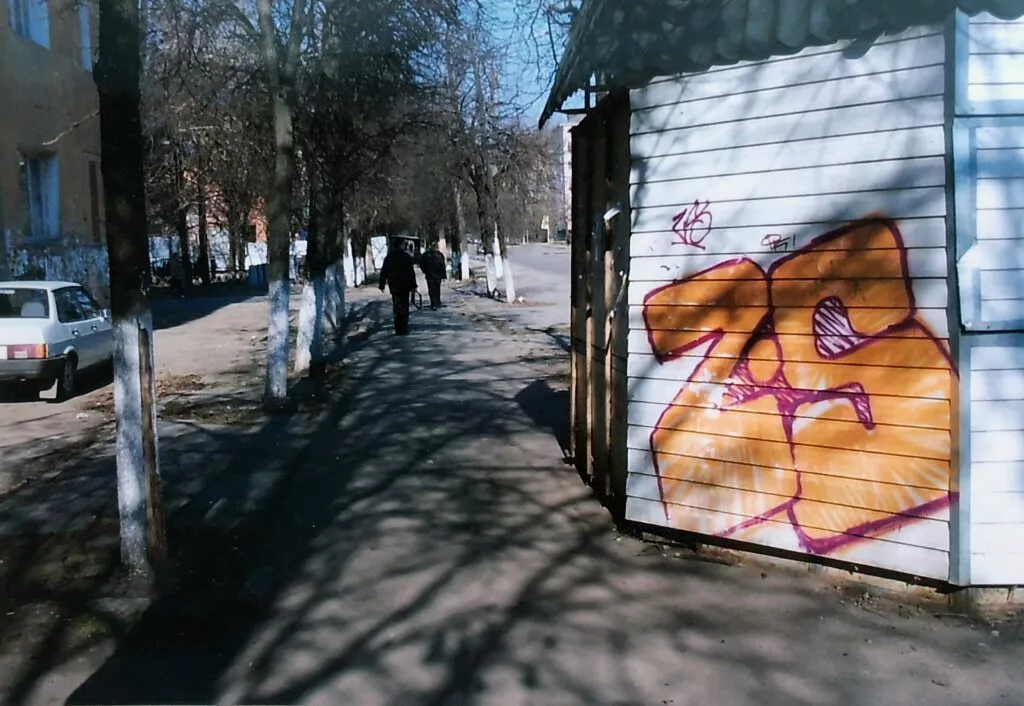

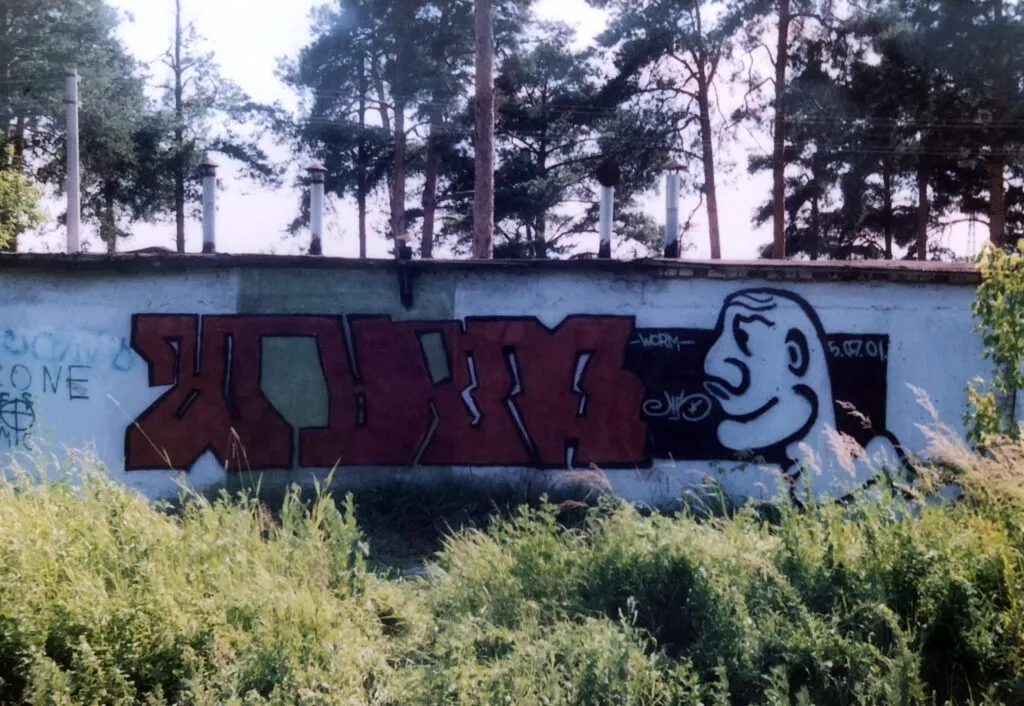

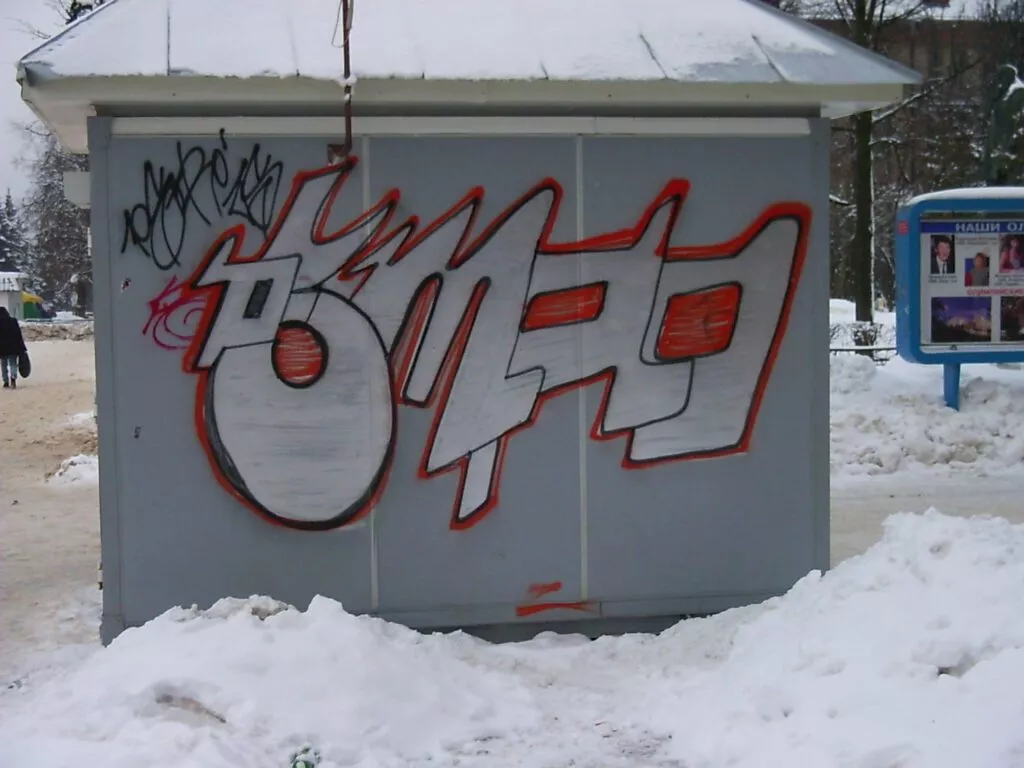
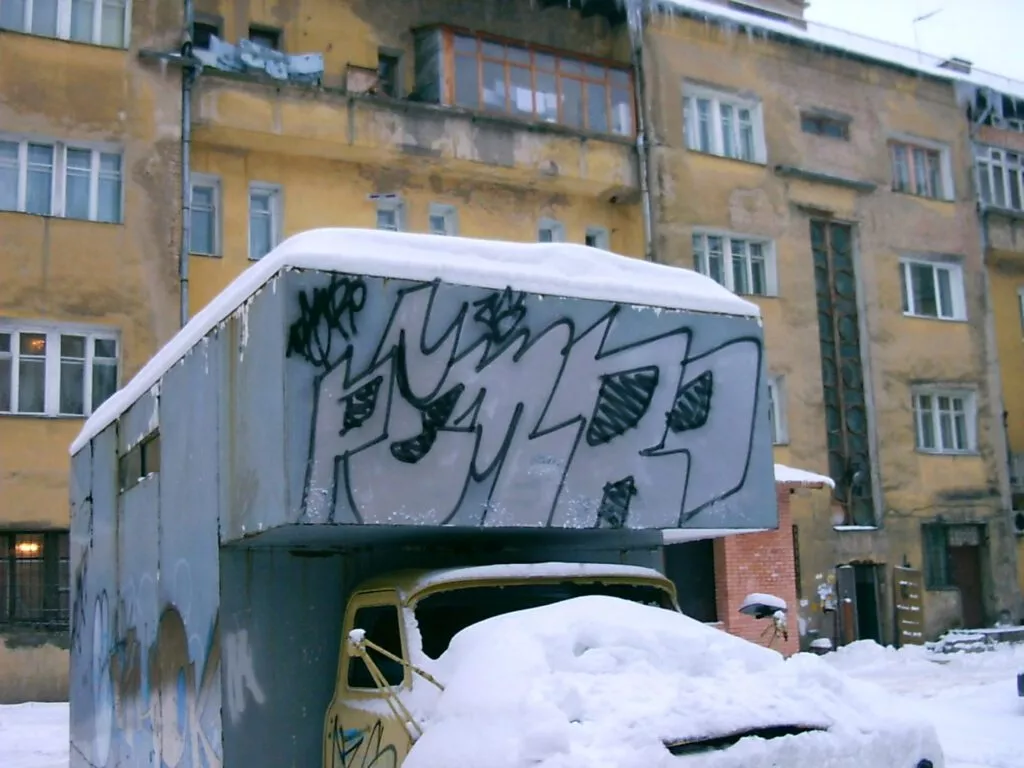
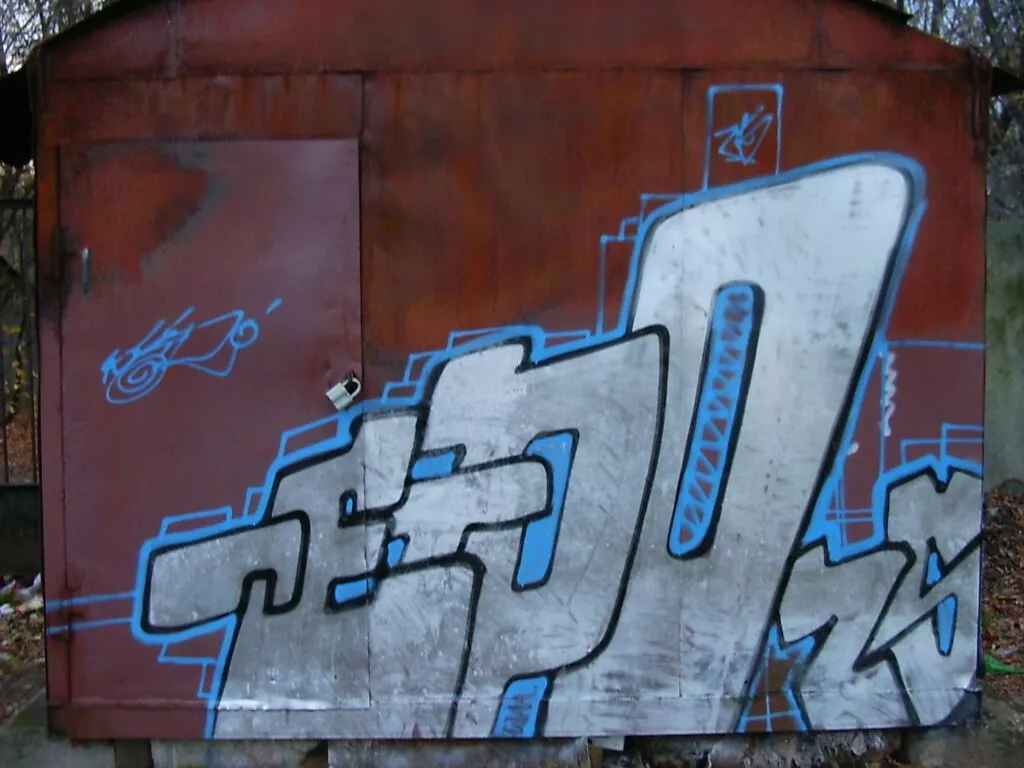
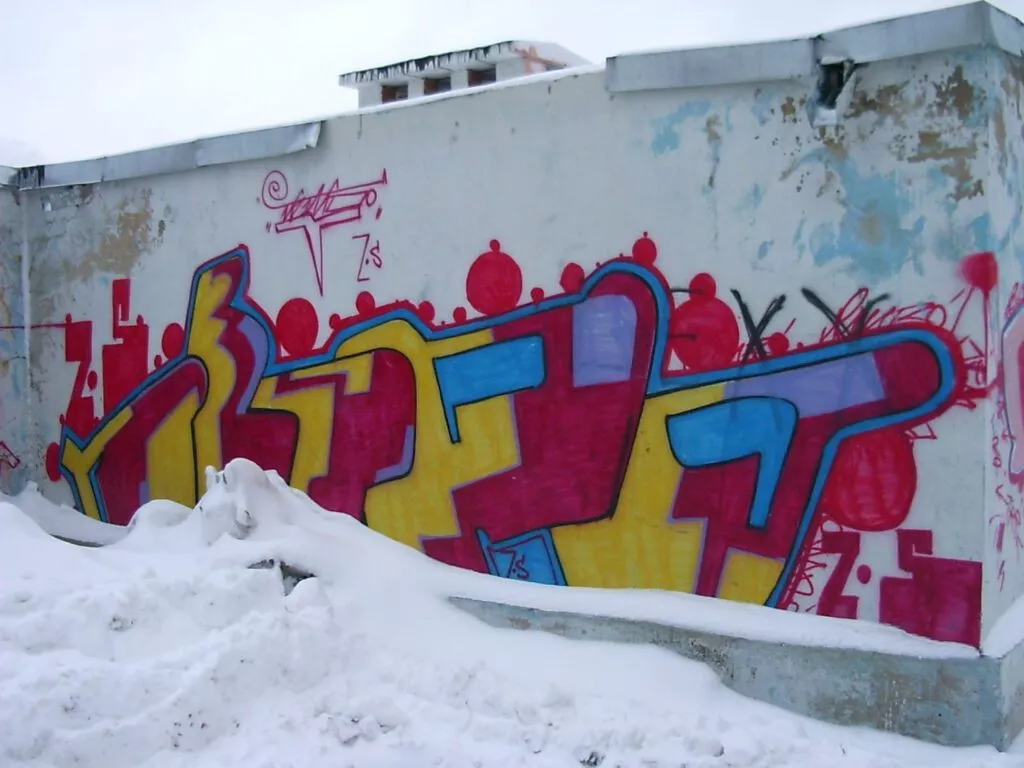
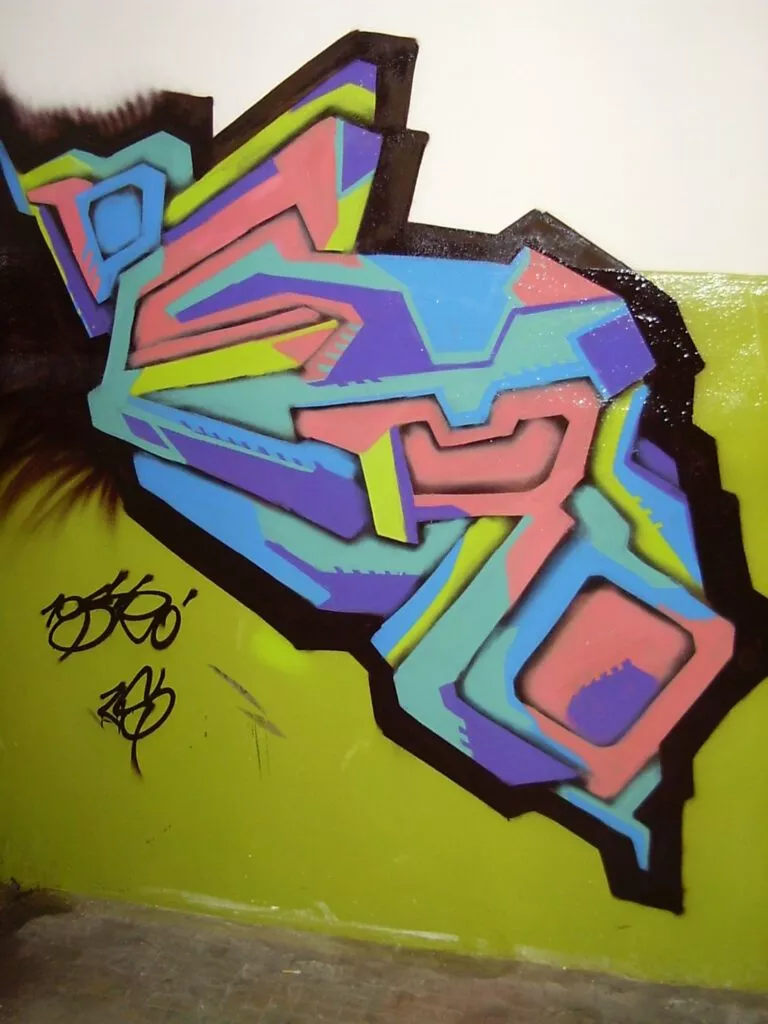
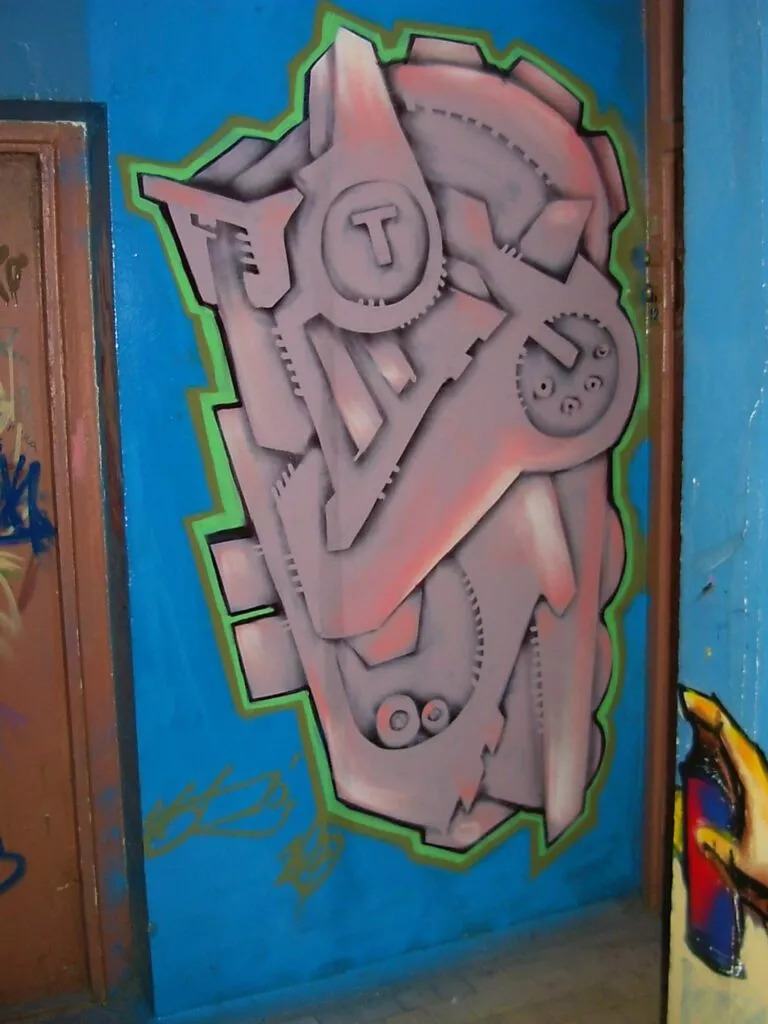
The first few years of style writing by PETRO were about studying the structure of letters, searching its own style, practice and experiment. He was fascinated by lettering, because for him, like handwriting, it is the most authentic and subtle translation of the inner world and the intellectual education of a style writer. In 2004, PETRO founded his first crew AS (Aerosol System) with MBOS and BRAE. The same year he graduated from the animation cinematography lyceum, received a specialty as a decorator artist and as a computer graphic designer in animation. He had not the intention to become an animator, it was an intermediate stage between school and institute, in order to raise the level of classical painting and drawing. After that he was not only engaged in creativity through graffiti, but also did commercial decorations, creating figurative images and using other artistic techniques (wall paintings on city walls, rooms of private houses, restaurants and more), which allowed him to quickly acquire the skill of techniques with aerosol. And at the same time he worked as a journalist for a youth magazine, where he wrote articles about graffiti as about Russian and foreign writers. And at that time, everything related to graffiti influenced his creativity, says PETRO. He was very impressed by various German style writers such as DAIM, ATOM, LOOMIT, DADDY COOL, MrX, RUZD, DEZ, ATARI, as well as the MOAS crew from Russia with ZMOGK, RUS crew, A24, AERO, SINDIK. He wanted to try all directions at once in the beginnings, allowing him to feel different styles and to reach his true own style corresponding to his worldview.
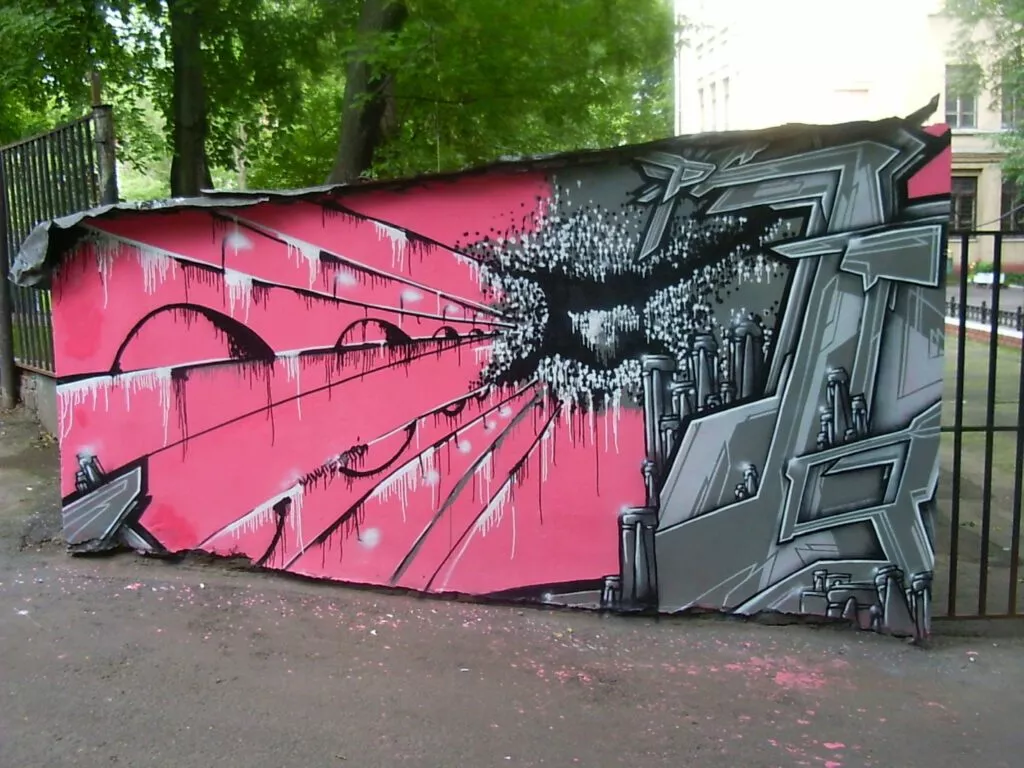
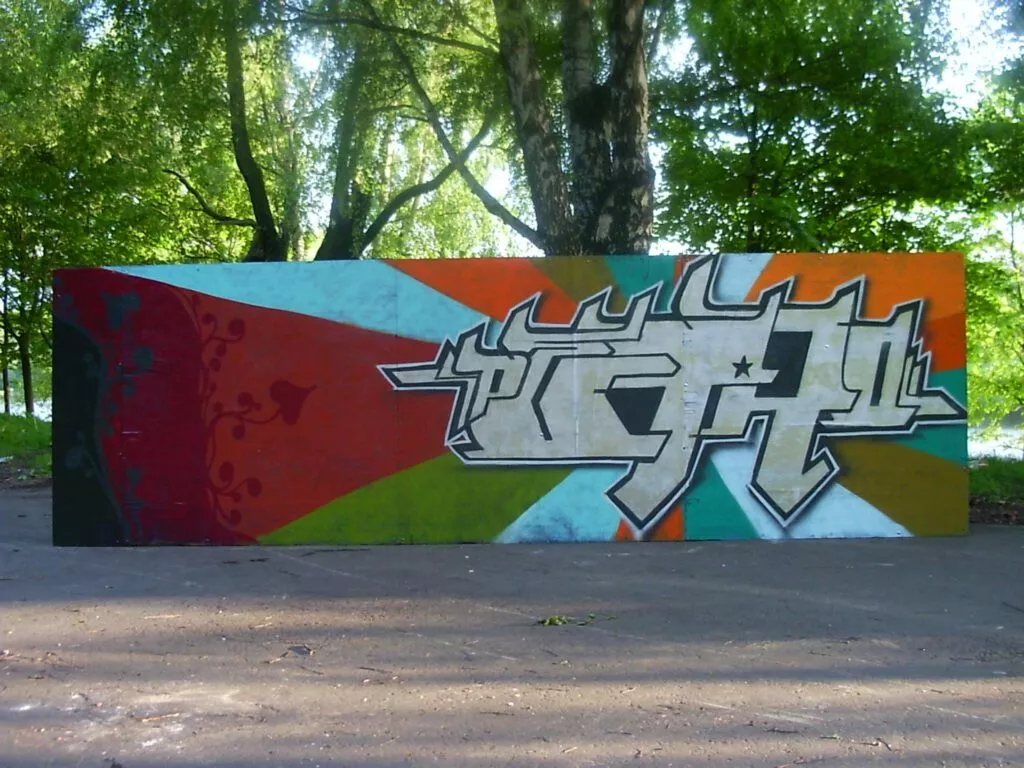
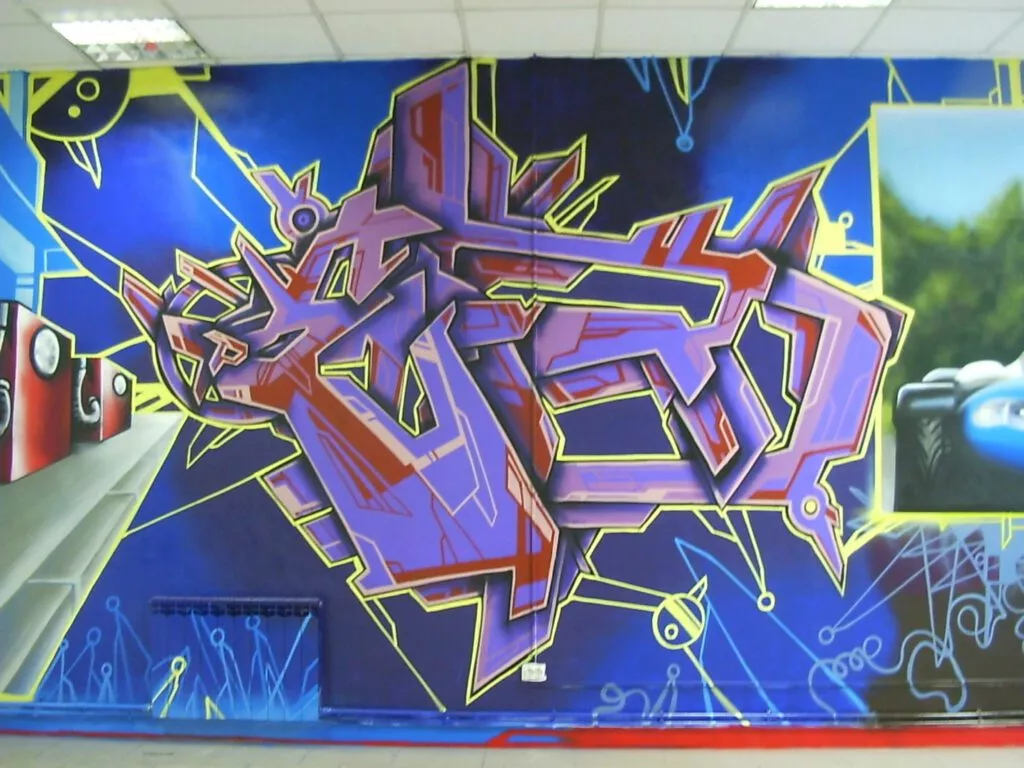
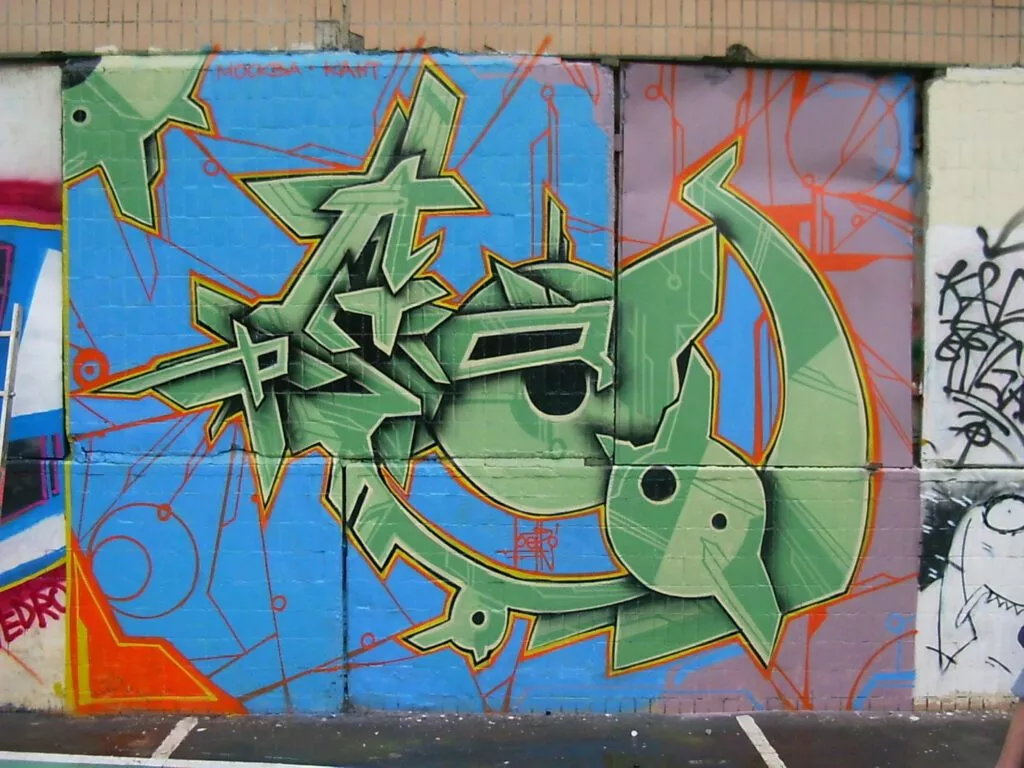
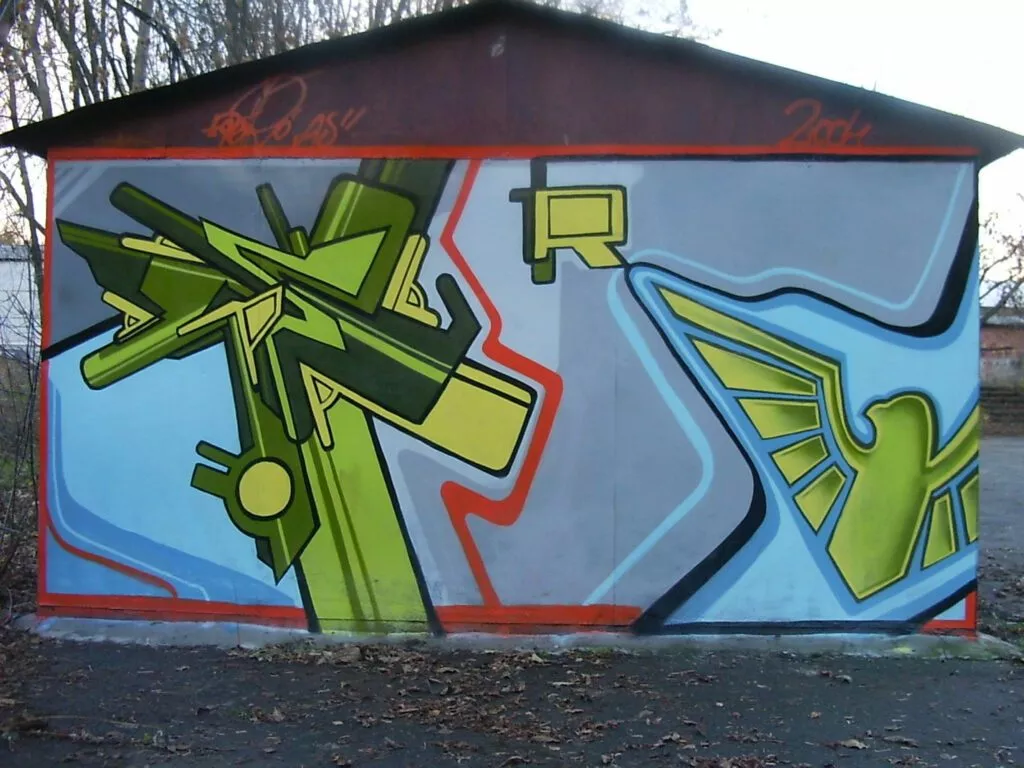
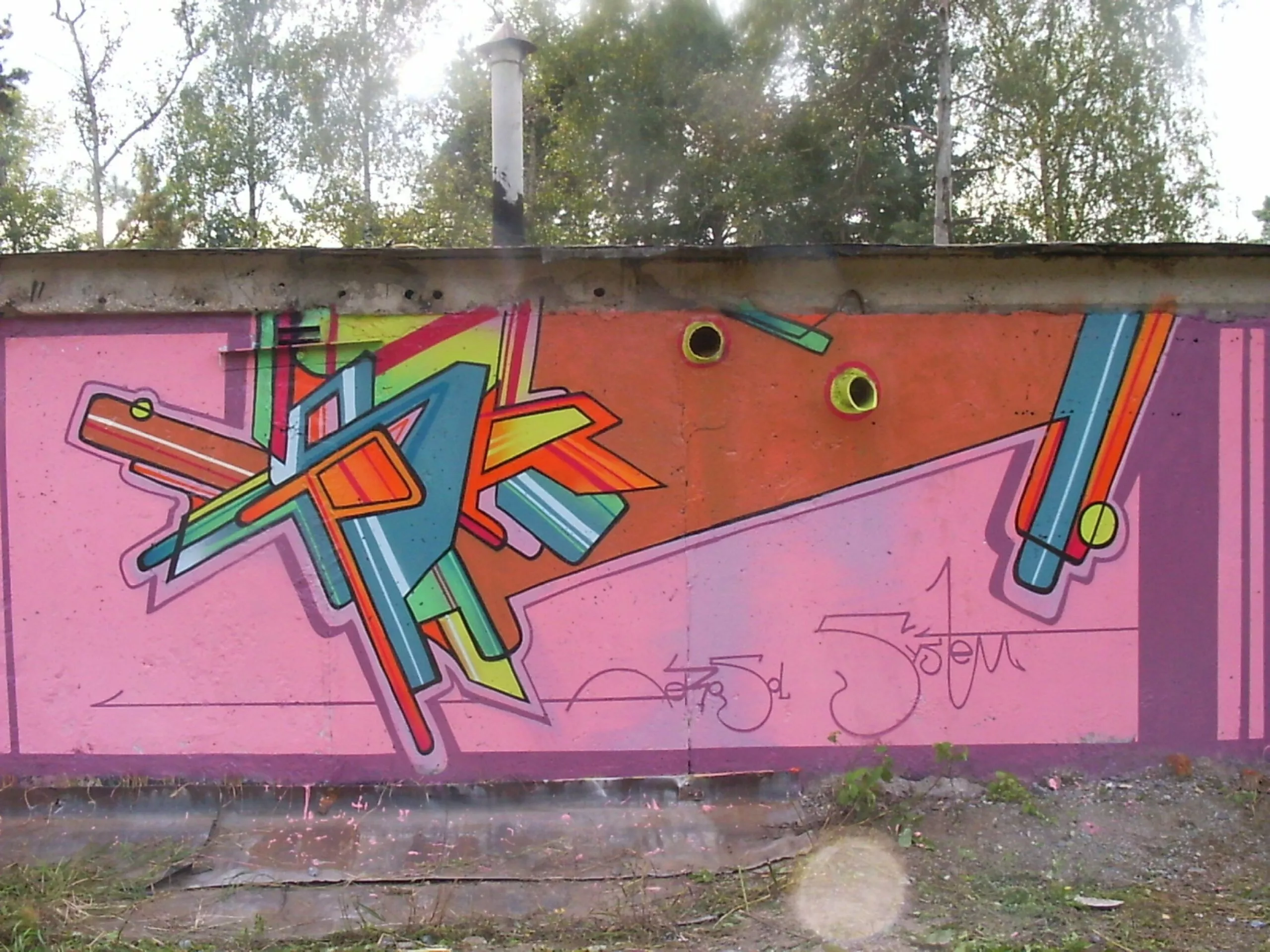
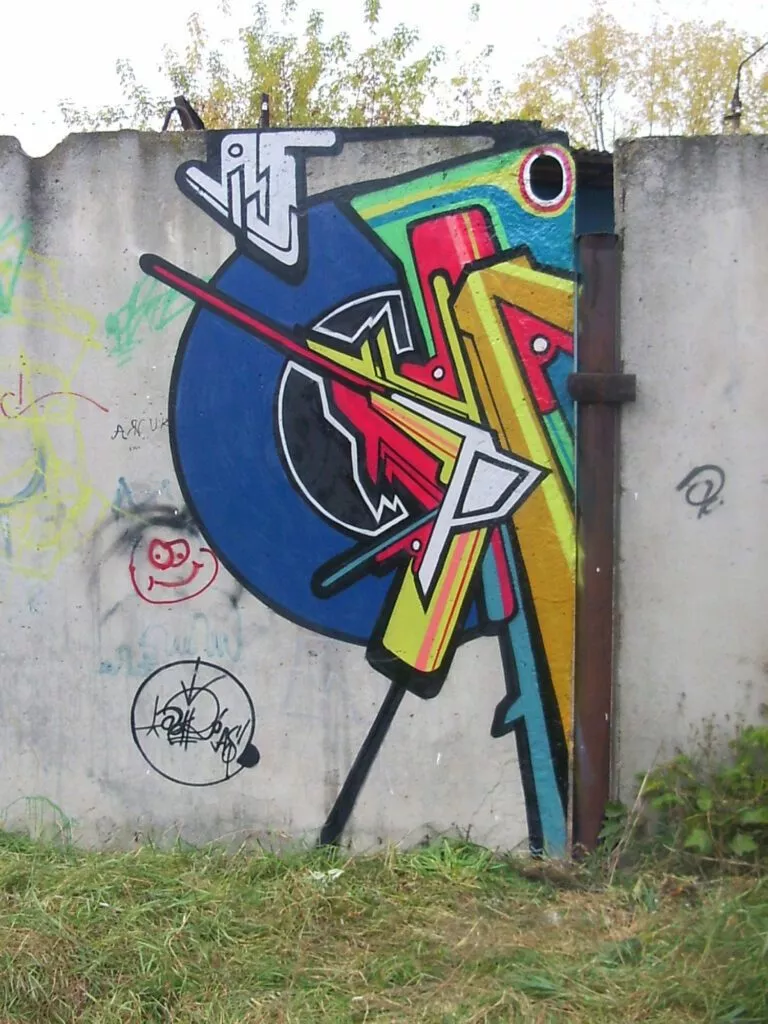
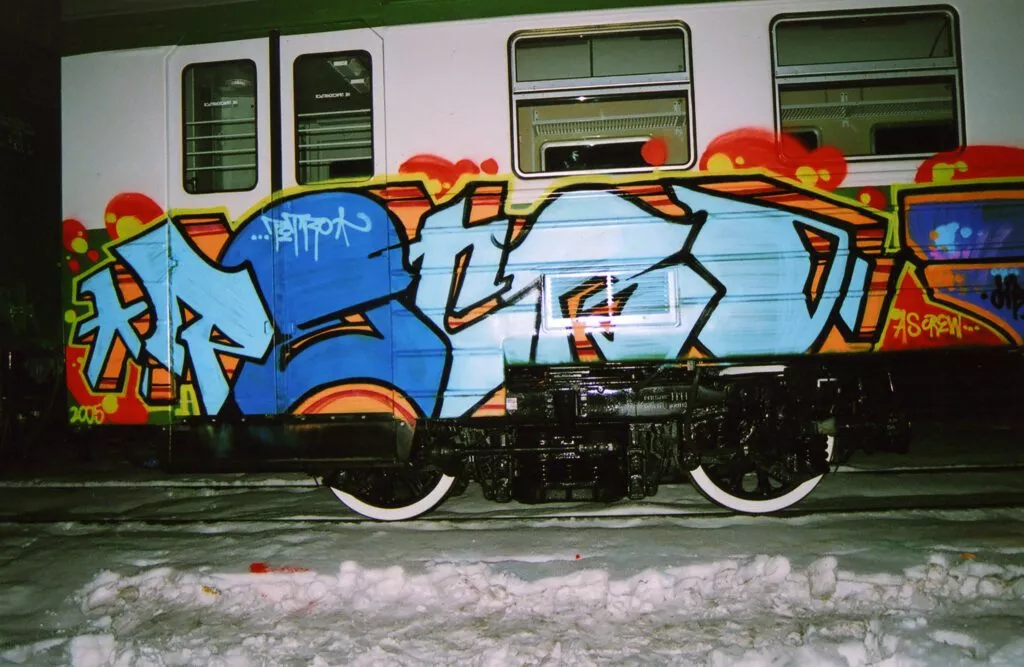
In 2006-2007 he began to reach the level of writing that suited him in style and execution, and continued to work on it to develop further. At this period his crew AES was then composed by MAYPE and SLAK from until 2010. During the first ten years of practice, PETRO developed his recognizable visual style and various painting techniques. He went through the entire classical school of style writing on the street with street bombing and train writing, where in each of them he succeeded in revealing his skills and abilities. In parallel, he took part at several Russian and international graffiti festivals, such as: “Just write my name” (1st place, as the best style writer, 2008), “Write4Gold” (3rd place, as the best graffiti team in Russia and the CIS, 2006 and 2009), Meetings of styles (2004, 2006, 2007, 2008), Faces and Laces (2008, 2009), and Montana-Jams. From 2008 to 2010 PETRO was also a member of the Moscow UFS crew, practicing train writing with DONER, REAL, PIX, PLUS, and NUKE.
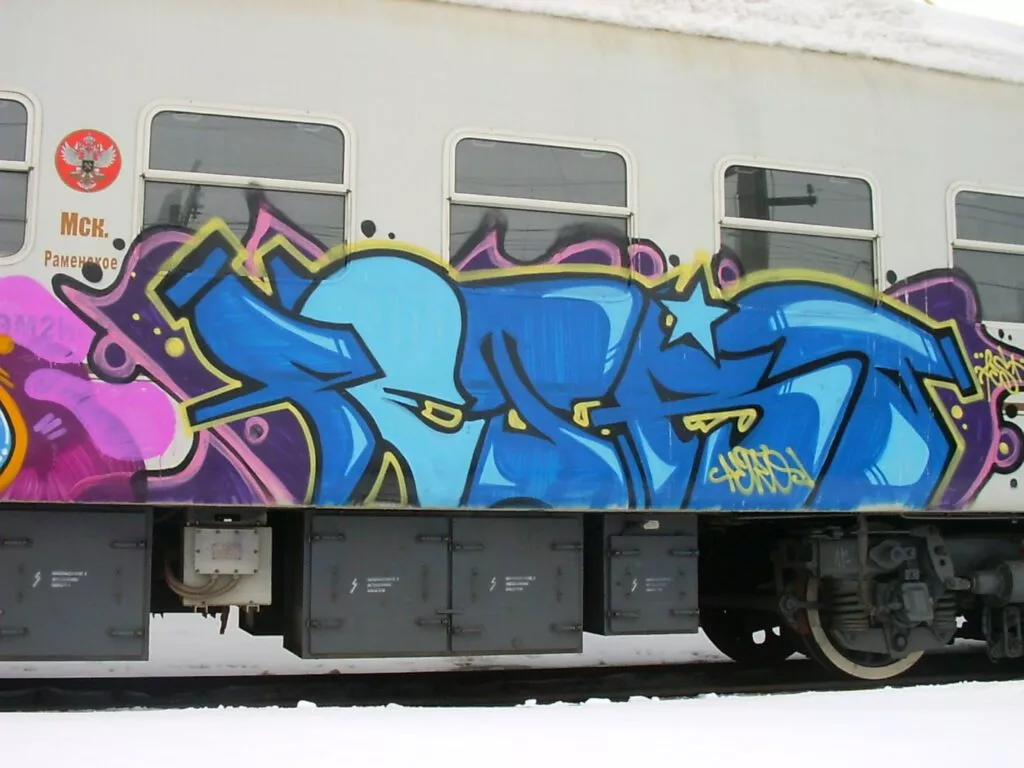
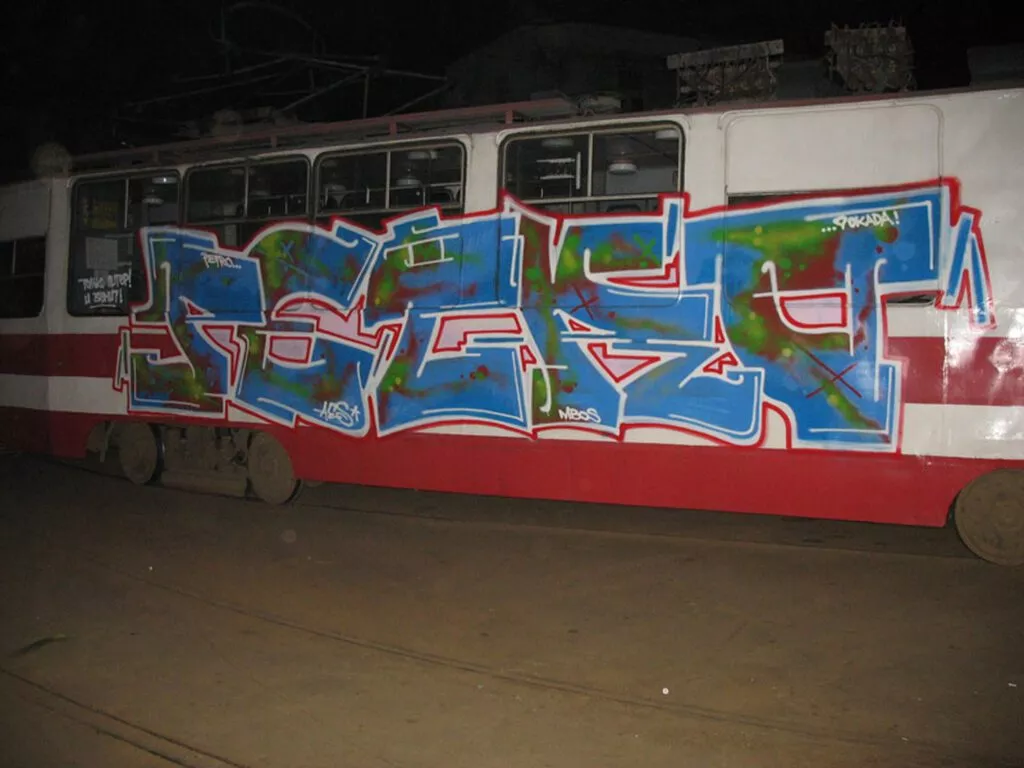
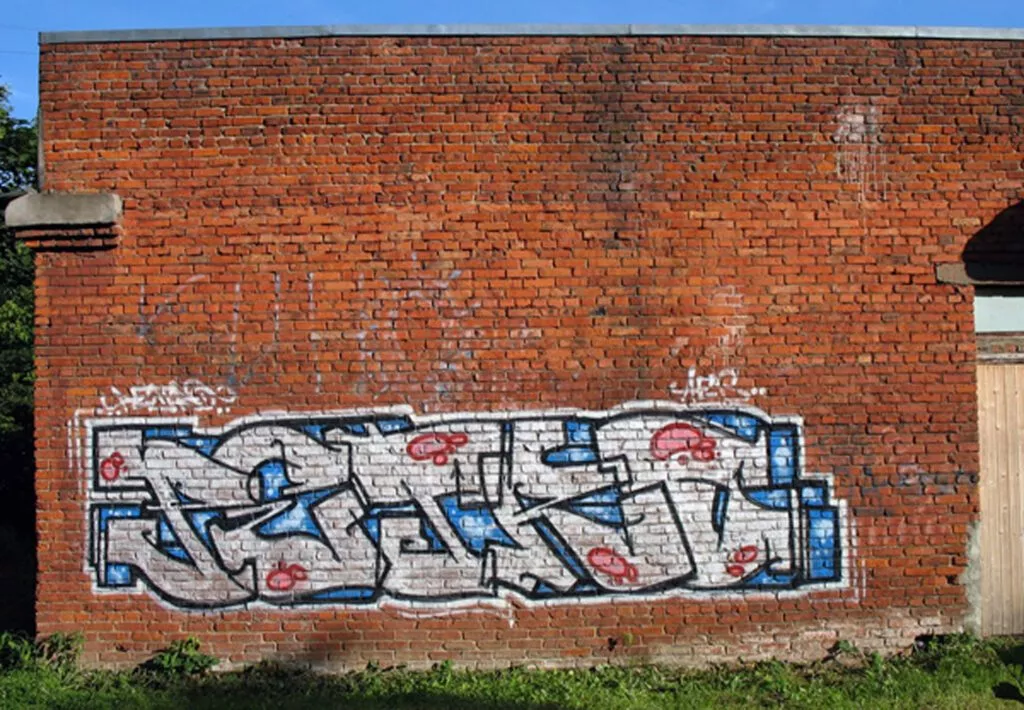
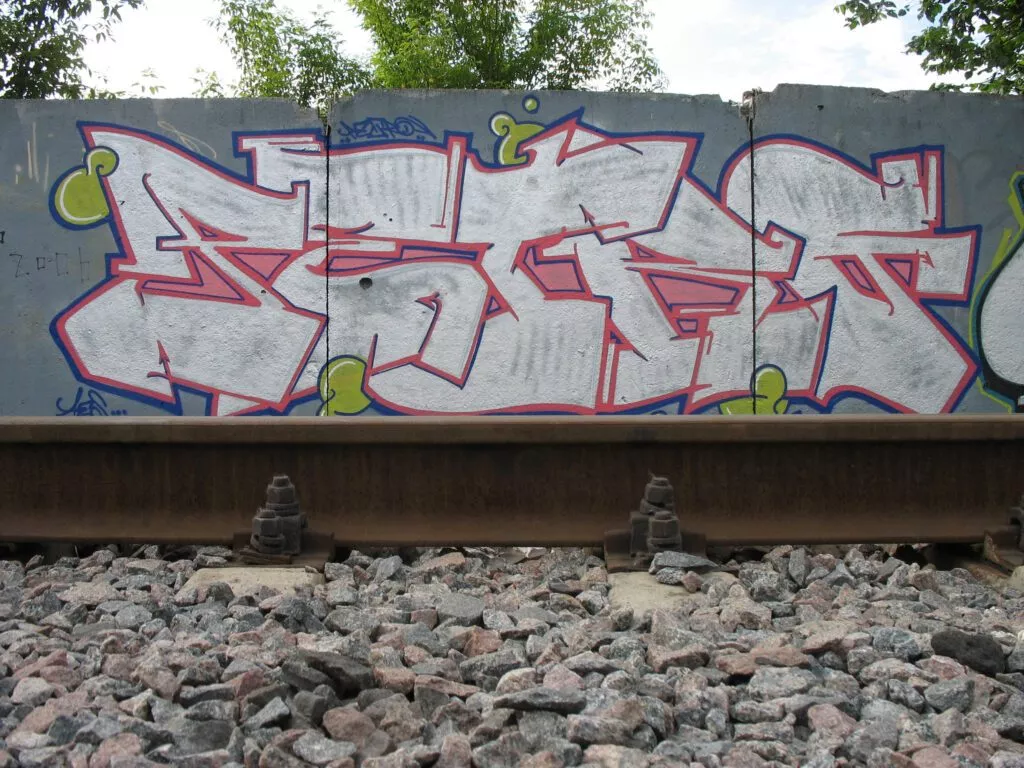
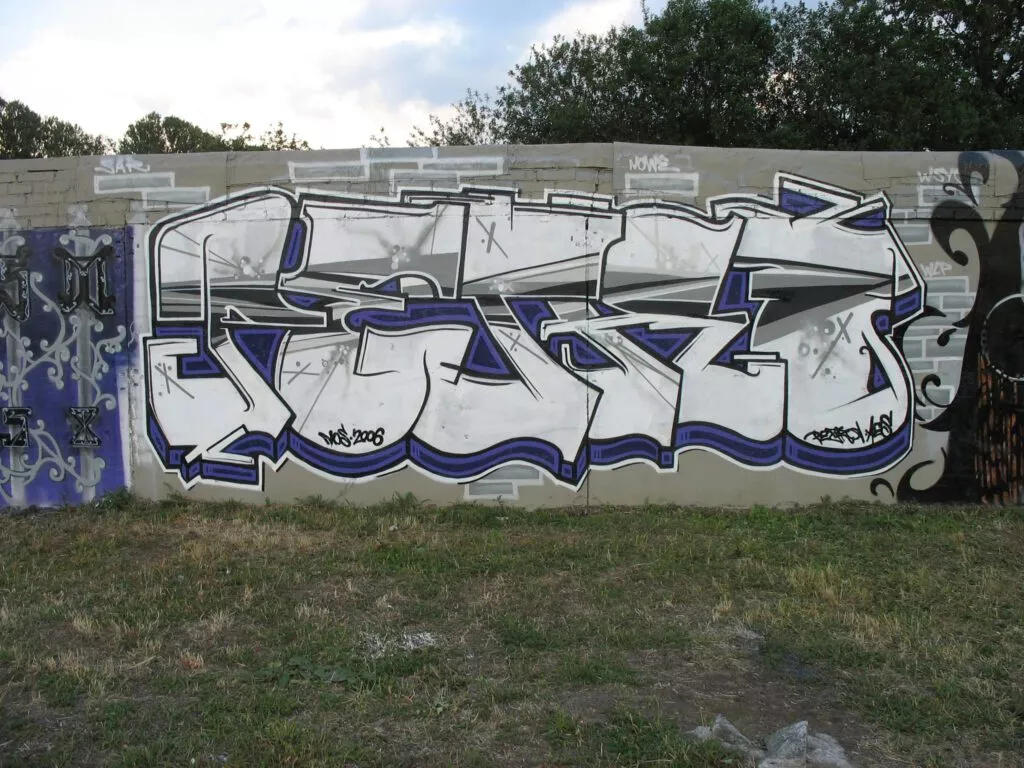
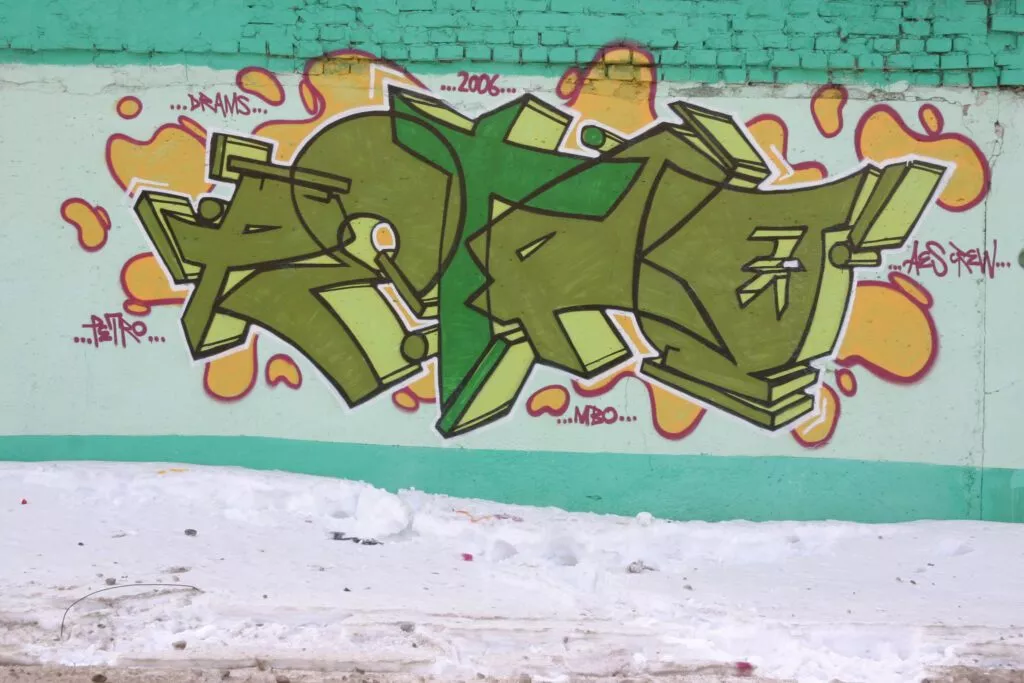
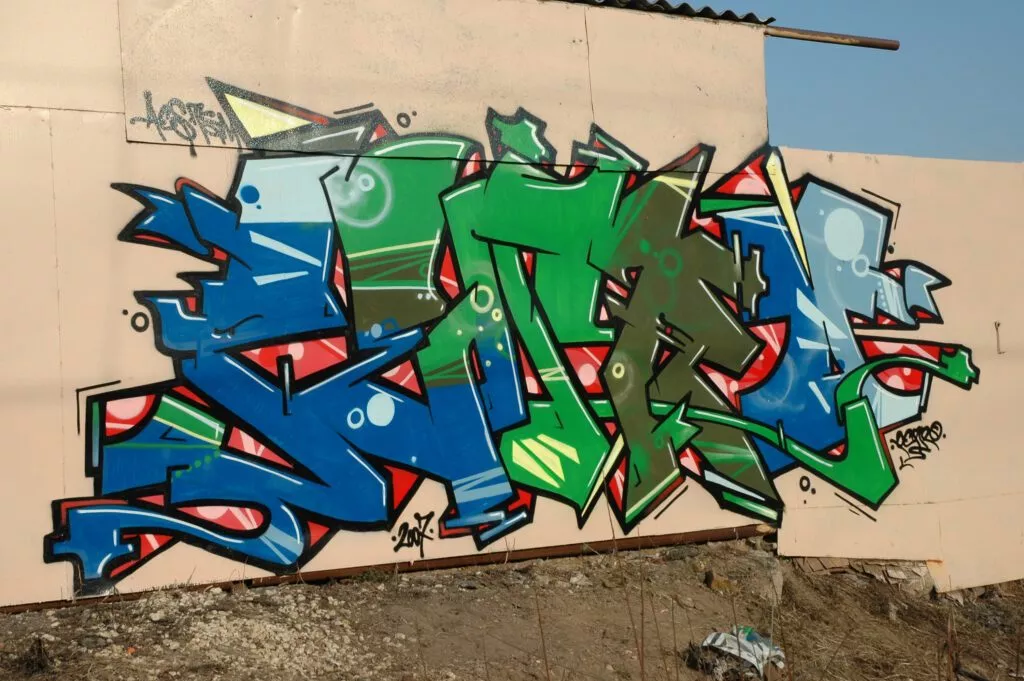
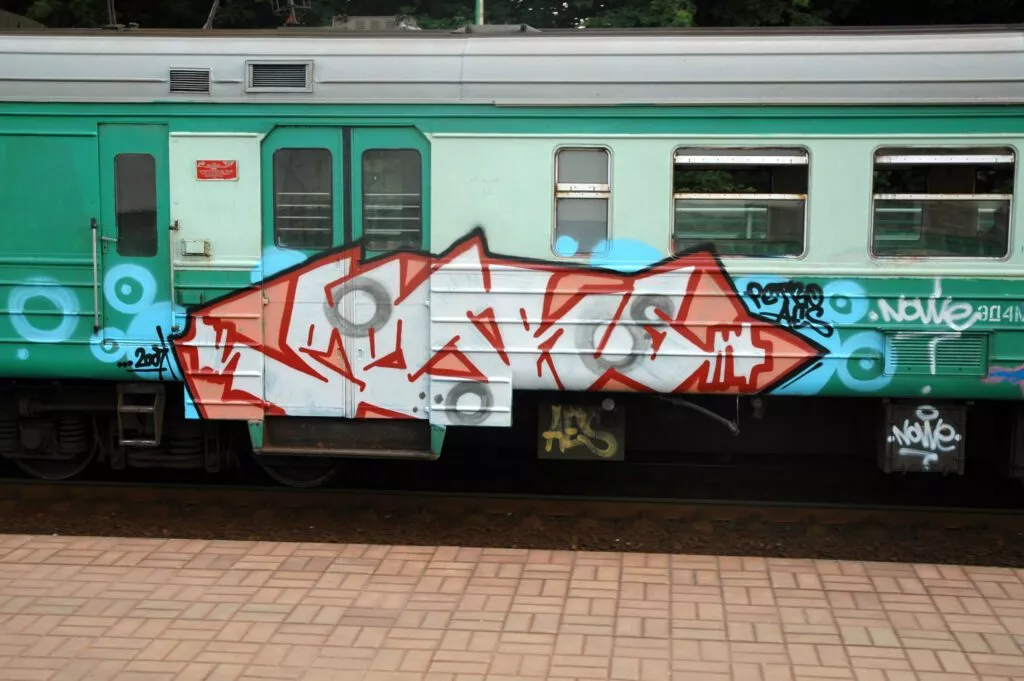
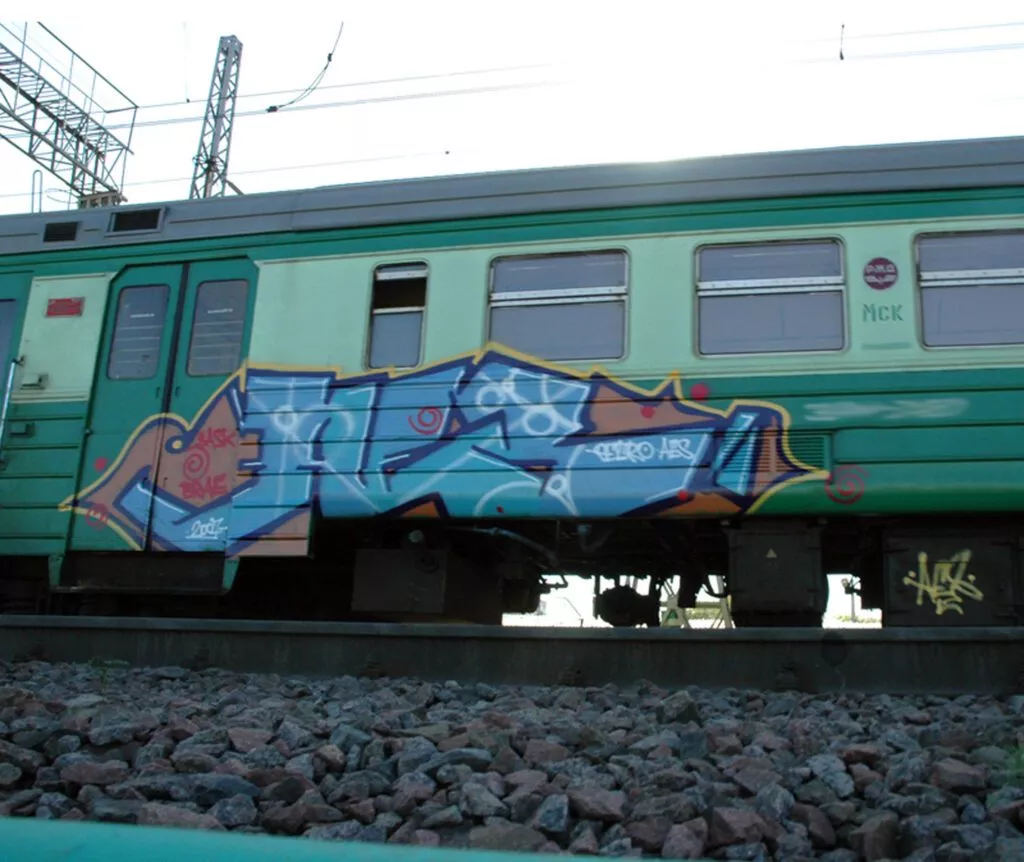
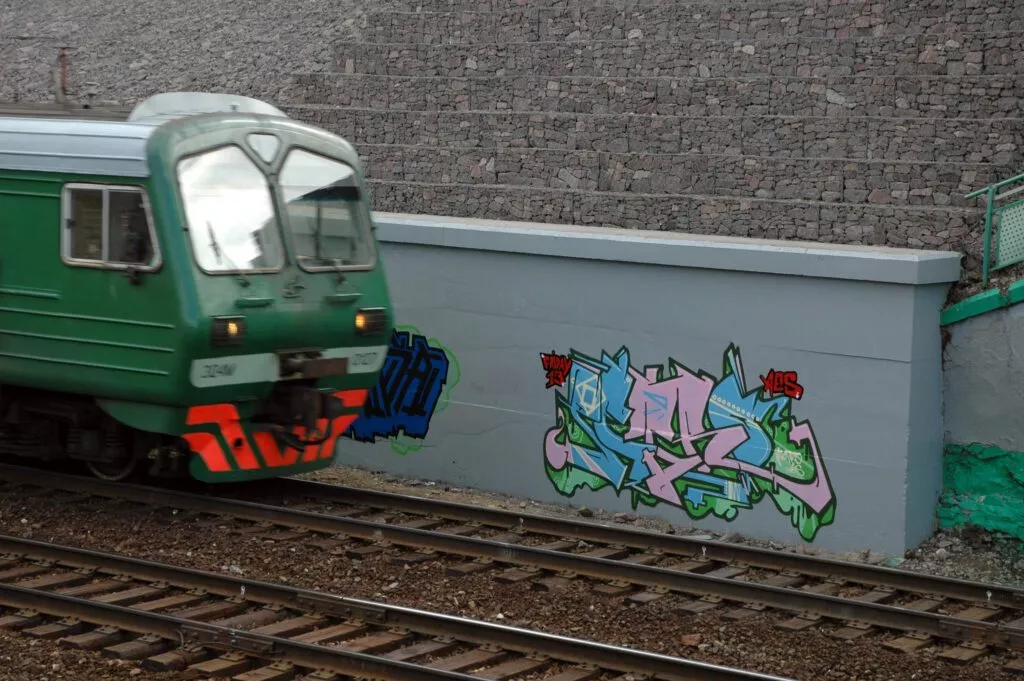
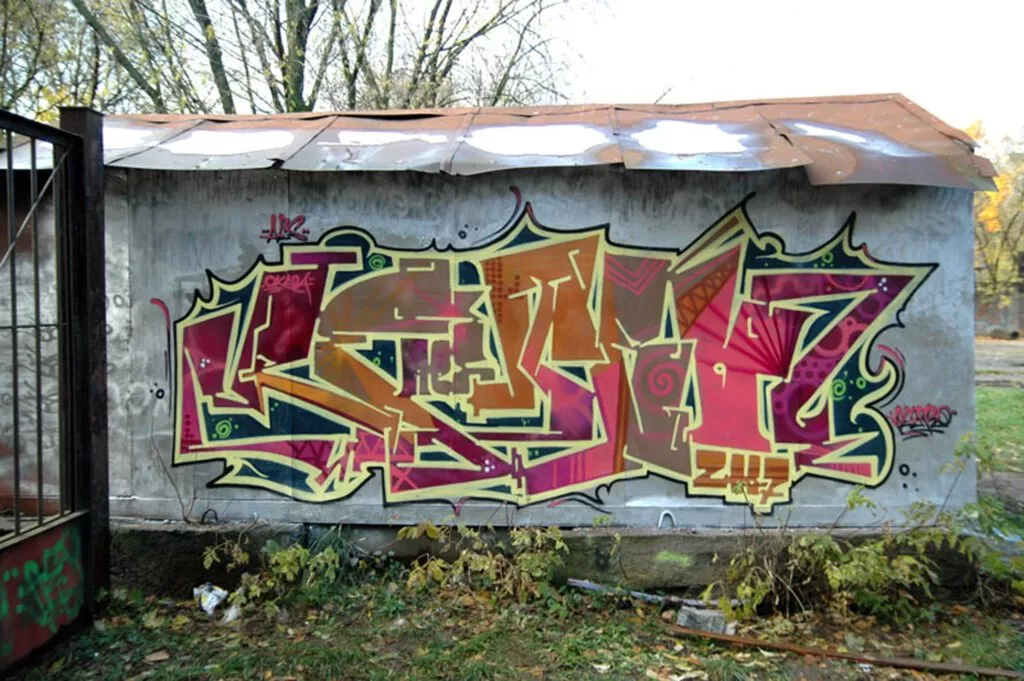
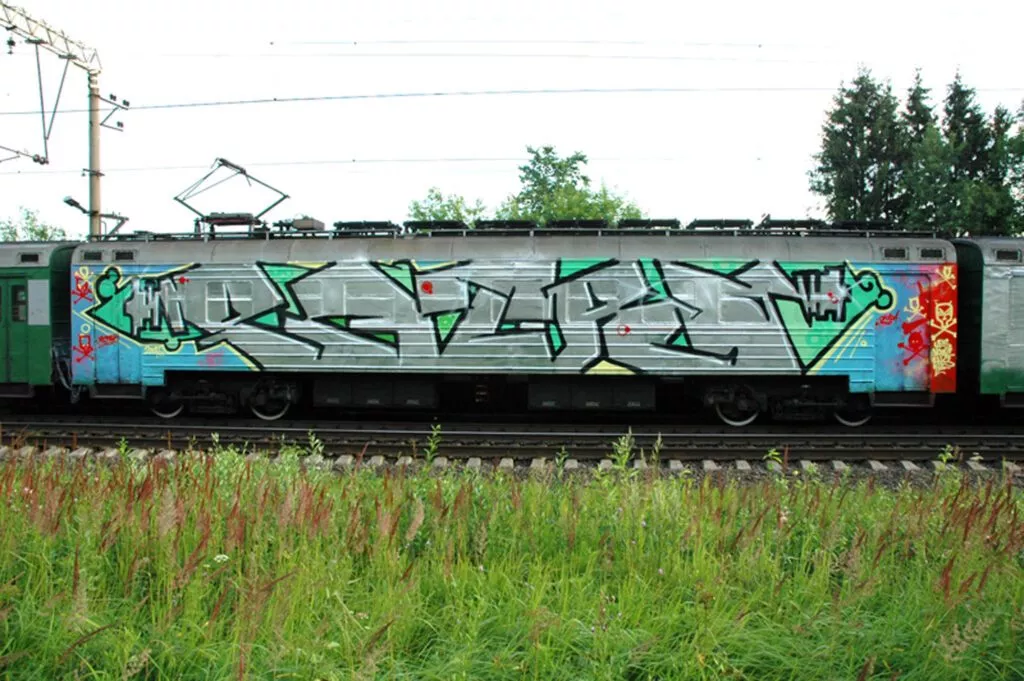
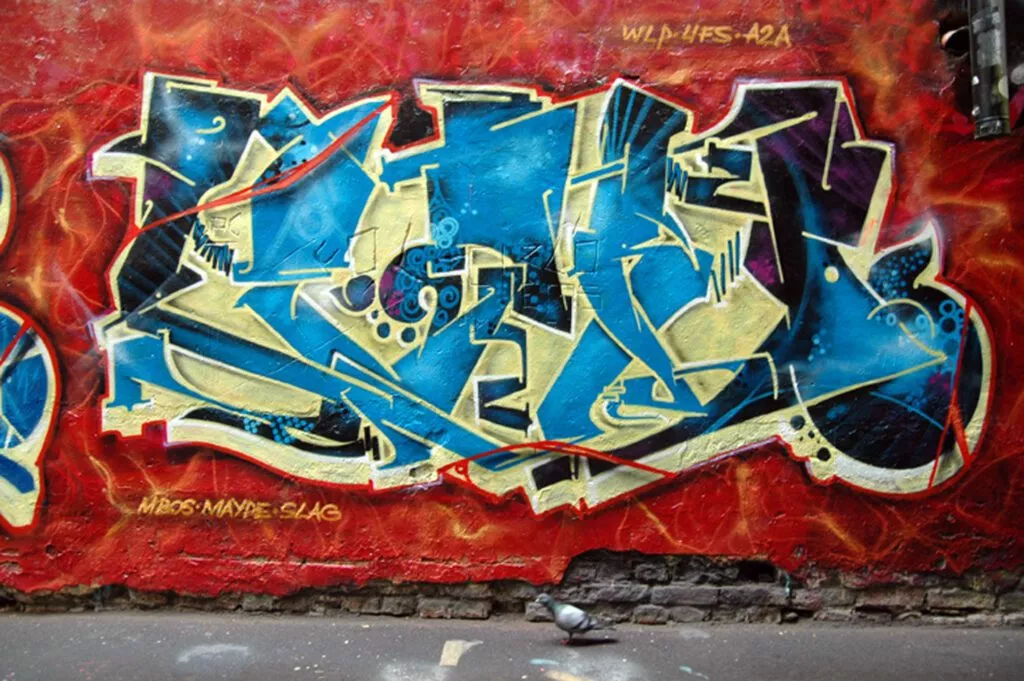
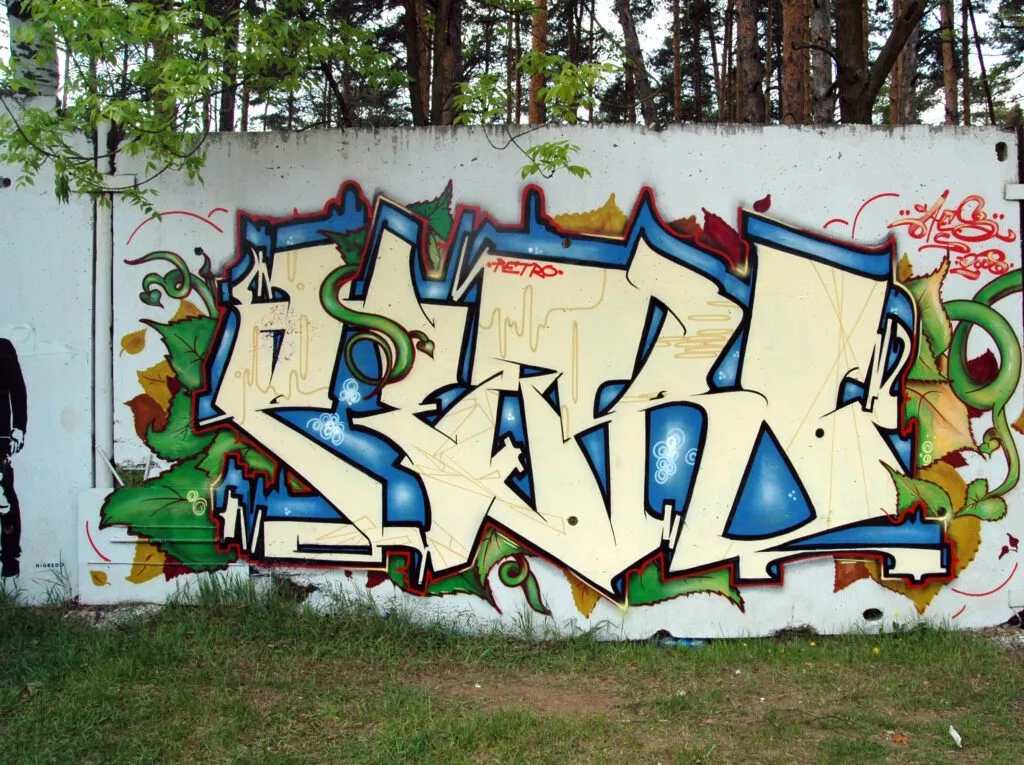
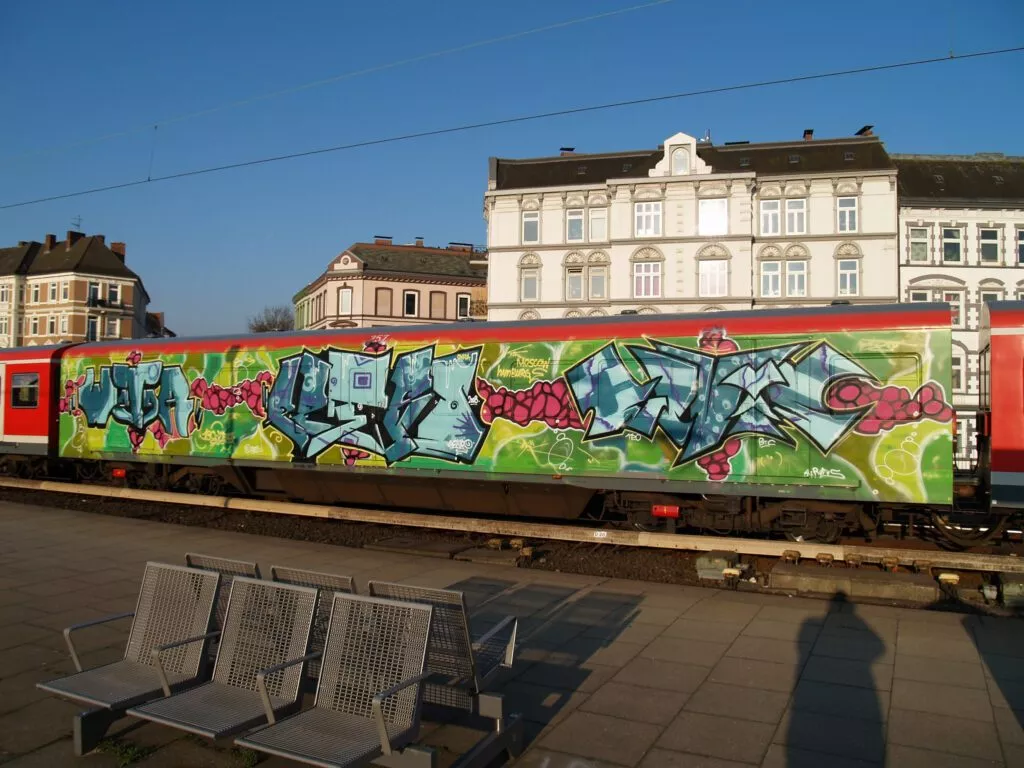
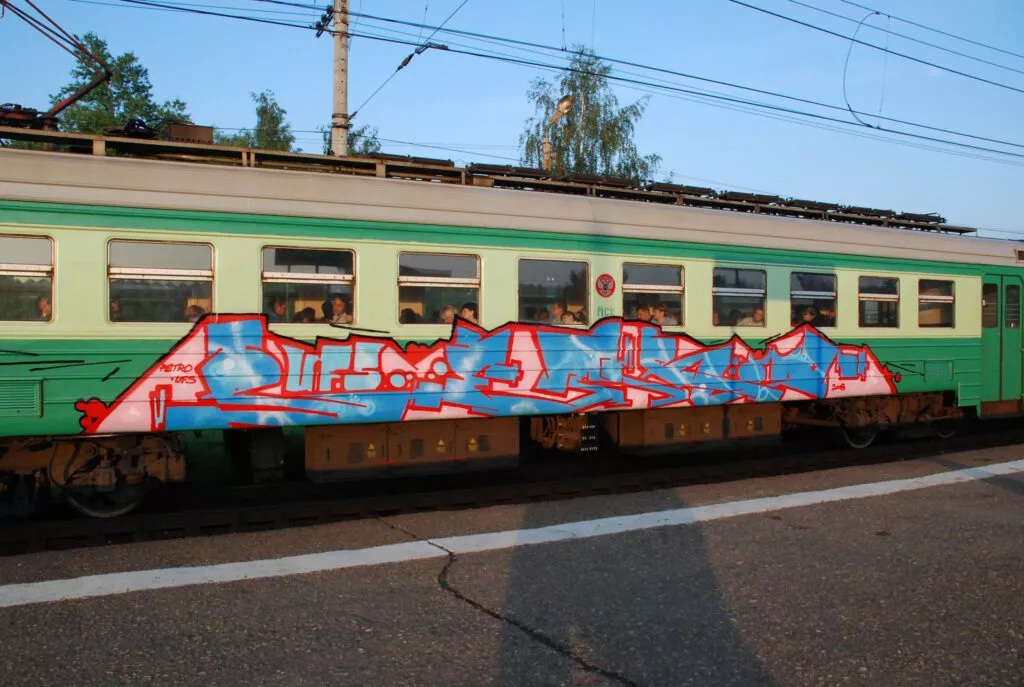
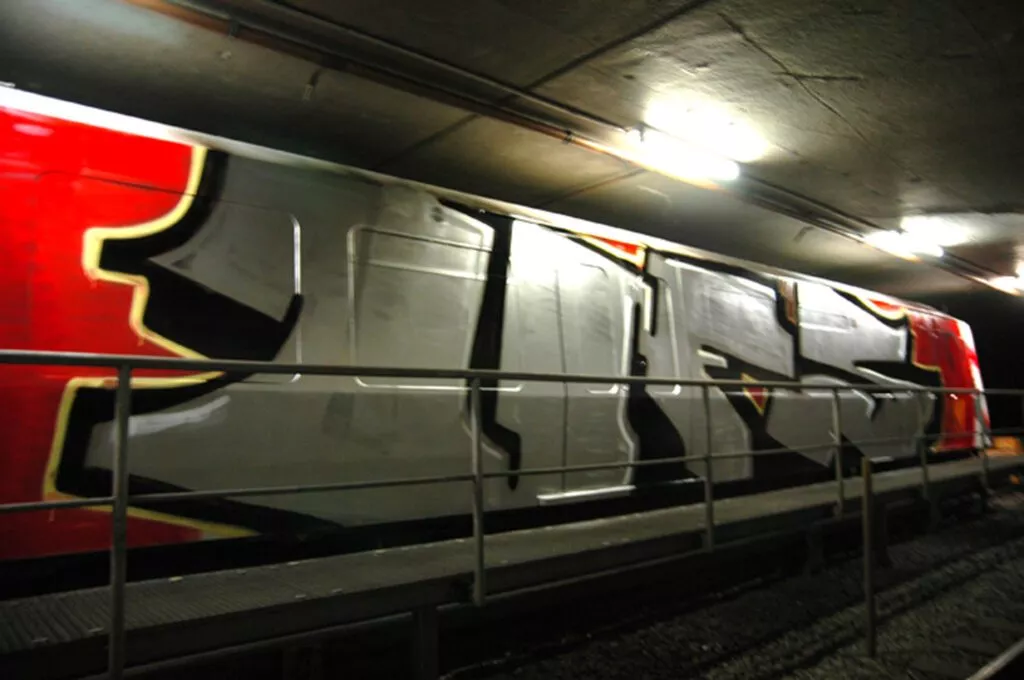
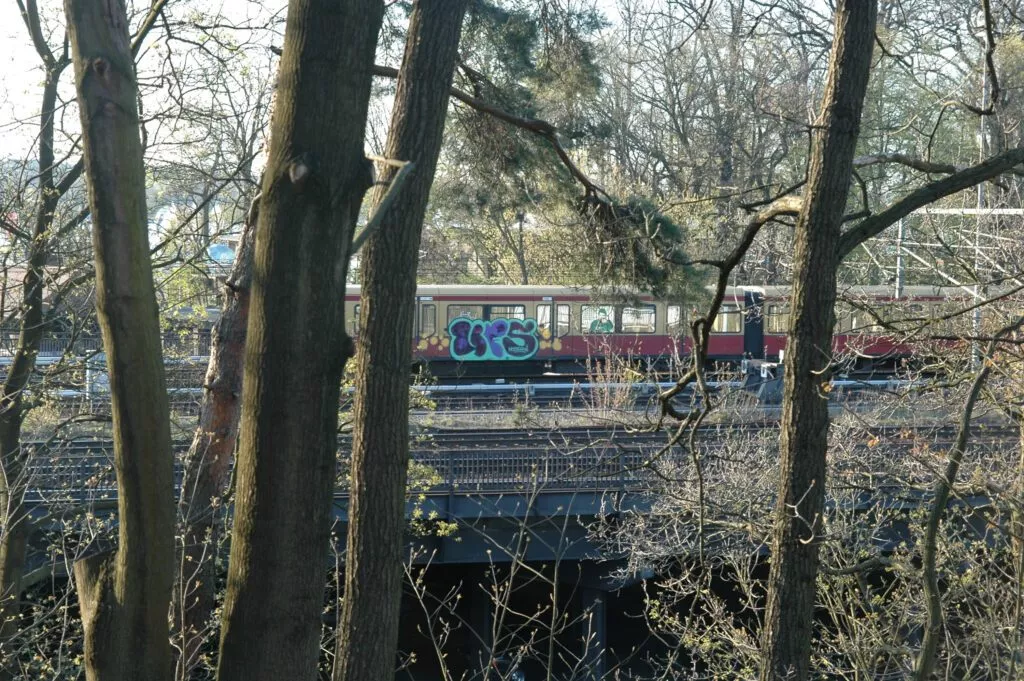
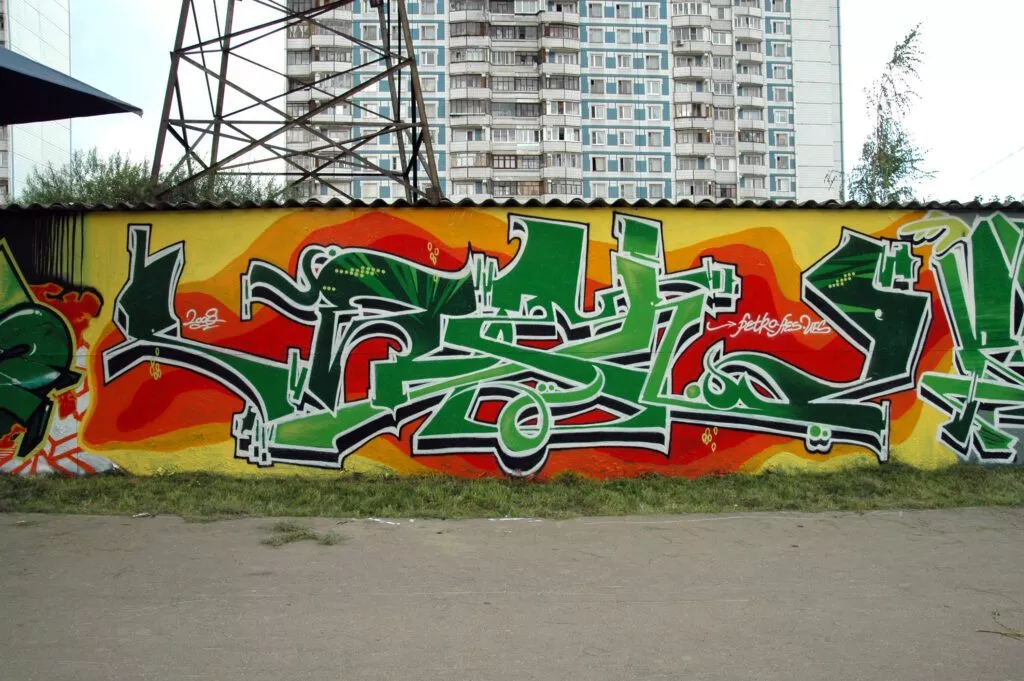
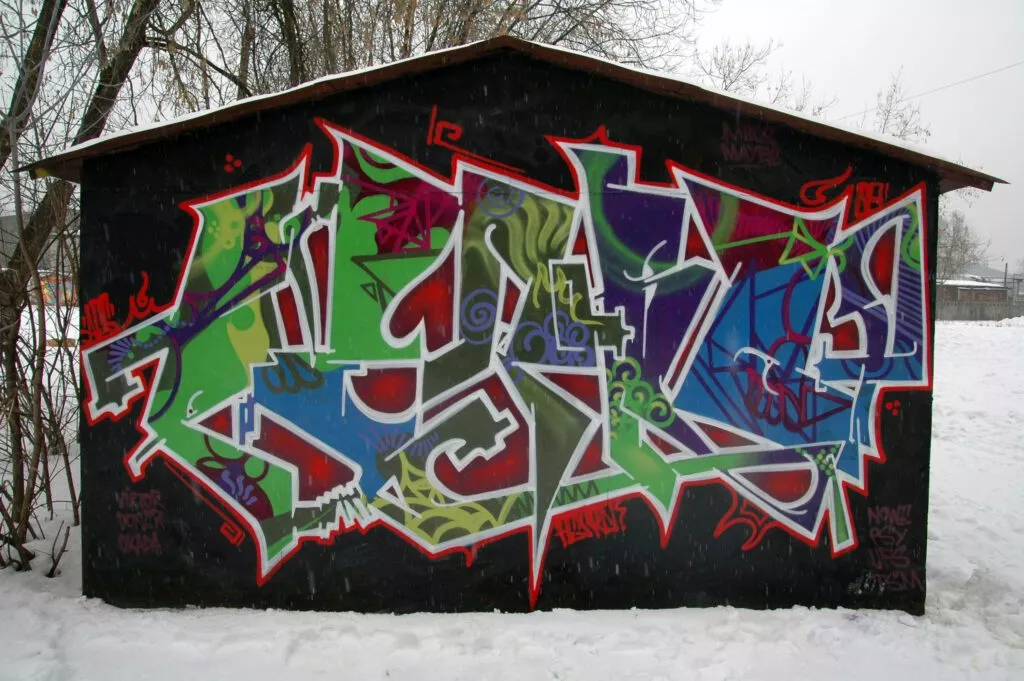
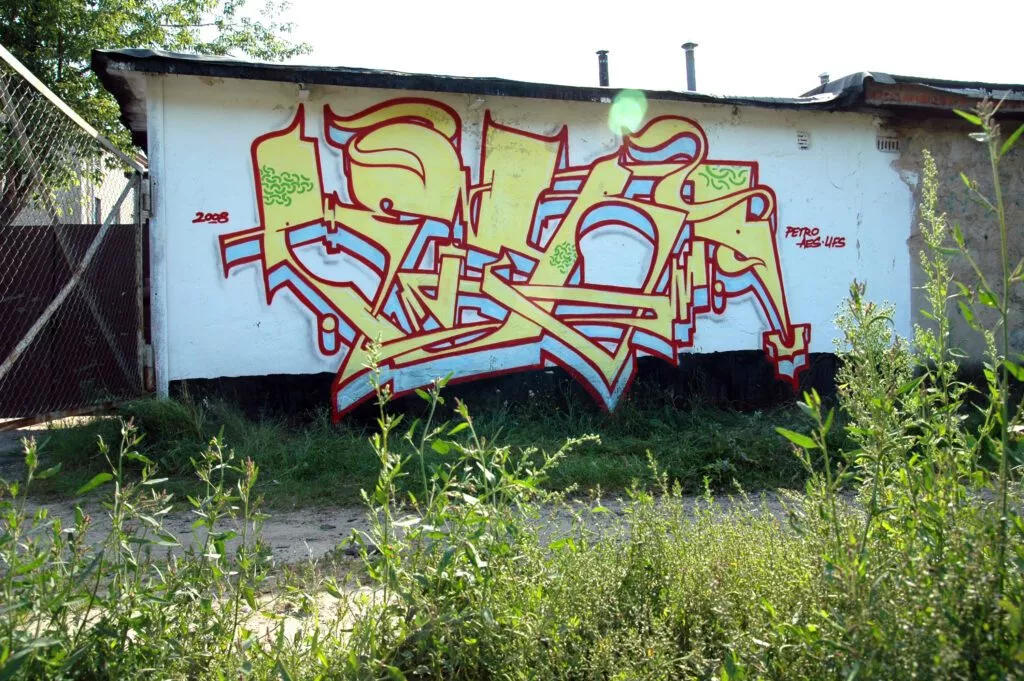
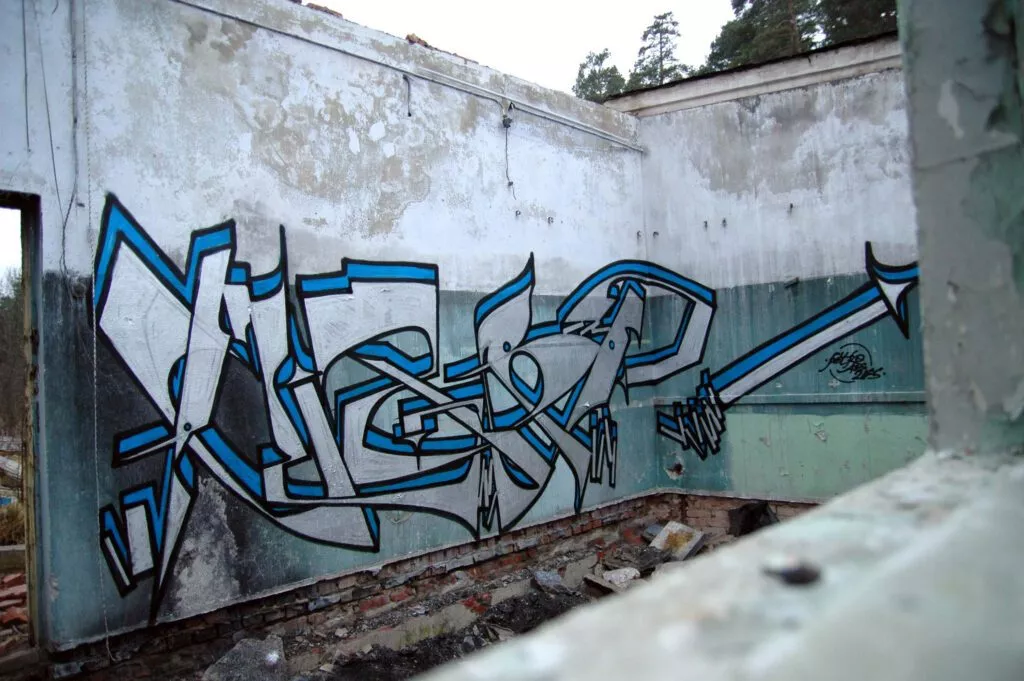
Post graffiti : Breaking the stereotype of graffiti and the shape of letters
In 2009, PETRO realized for himself that he had reached a good level in classical style writing, a standard approach to letters and compositions. So, consistently, and for some other reasons that did not suit, he stopped train writing. He started to put more emphasis on artistic development and new forms of expression and begun to understand that he wanted to break the stereotype of graffiti and the shape of letters into geometric abstraction. In 2010, he started to experiment in the field of abstract lettering, paying more attention to the development of a new visual language that anchors the new direction of the post-graffiti community at that time, documented on sites like “Graffuturism” and “l love graffiti“. That year he changed the name of his AES crew with a new semantic meaning : Aesthetics group, composed at that time by SLAK, SUGAR18, VEDRO and himself. In 2013 Aesthetics group becomes the actual duo with SLAK with the same taste and ideological component. This period and the fallowing years became for PETRO an important turning point in his career, because new interests and opportunities appeared like neo-muralism, urban objects, easel painting and digital illustrations. He developed his skills in abstraction, understanding that this was becoming a new “ceiling” for development and realized that figuration was not at all his visual language anymore. But he was still paying attention to the study of the skeleton of forms and still exposing the shape of the letters.
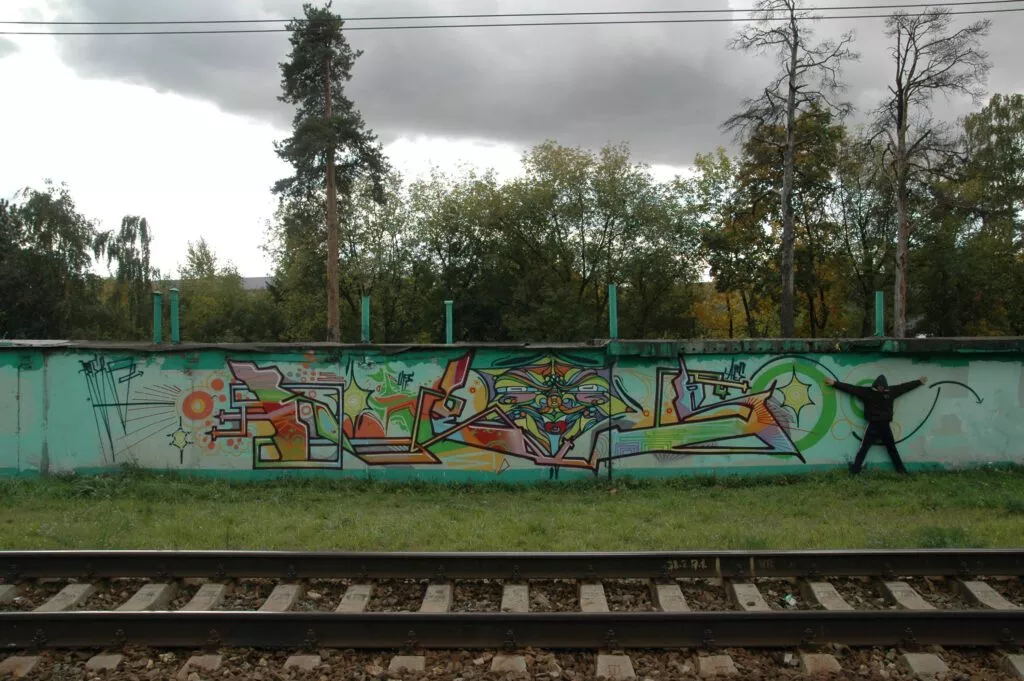
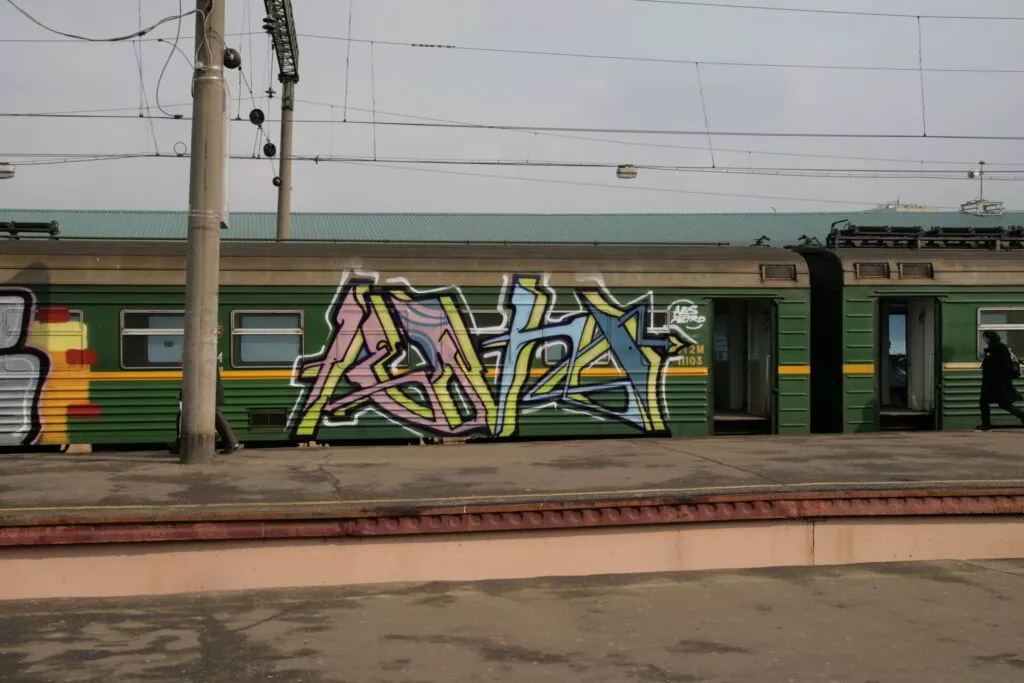
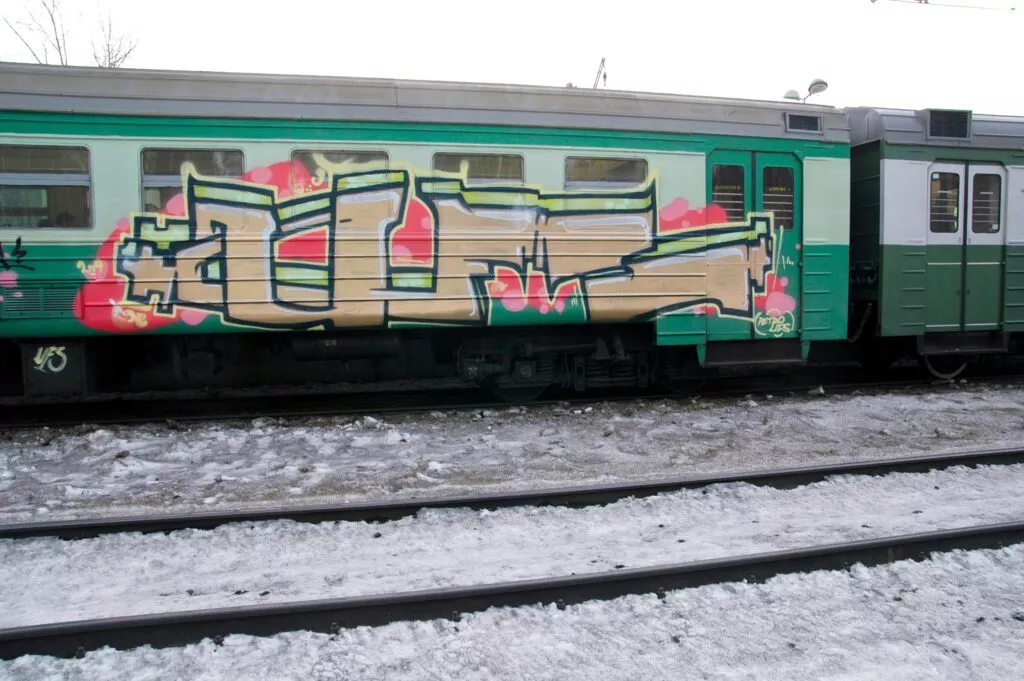
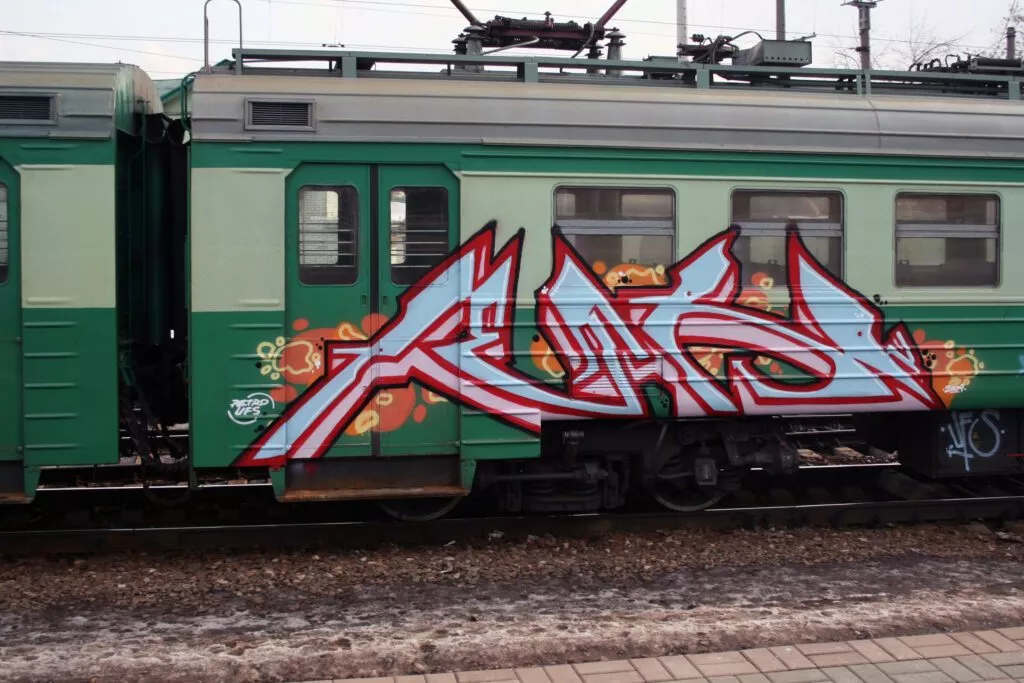
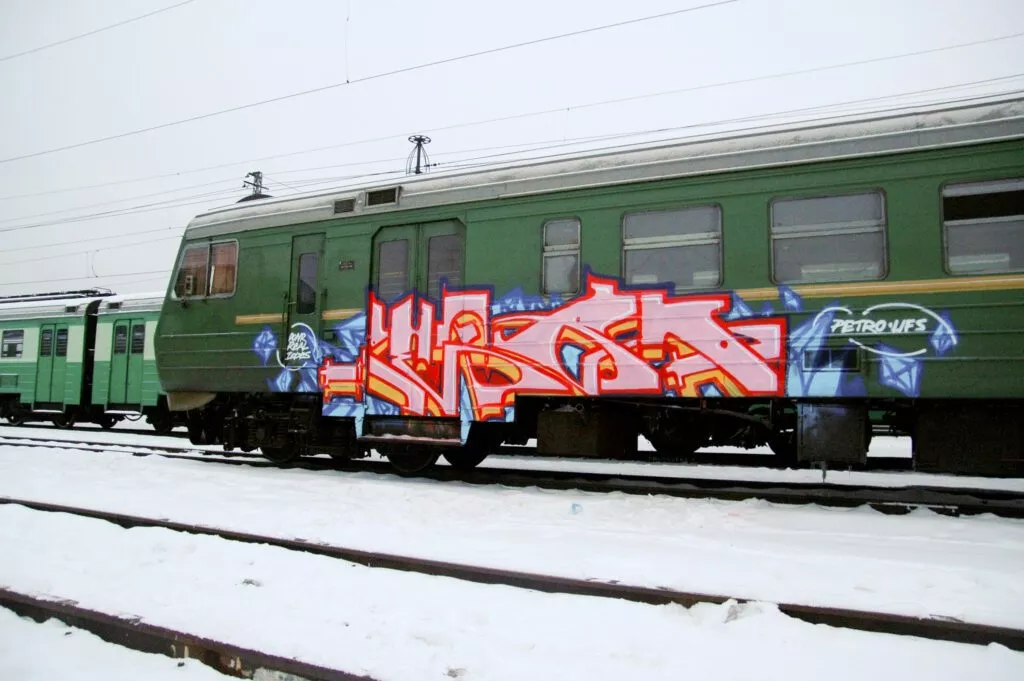
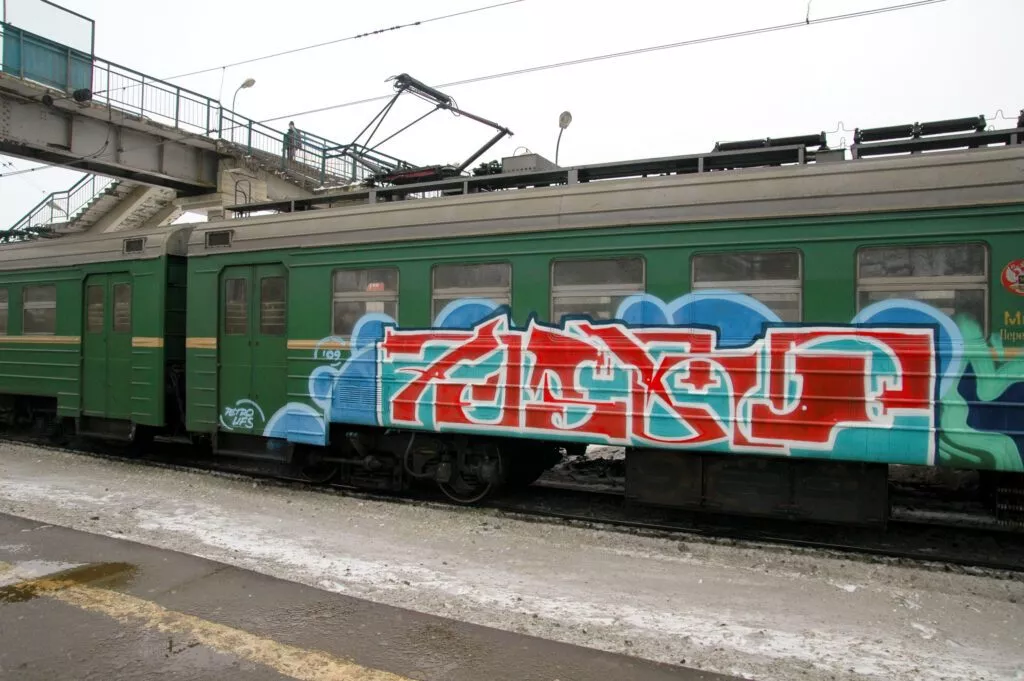
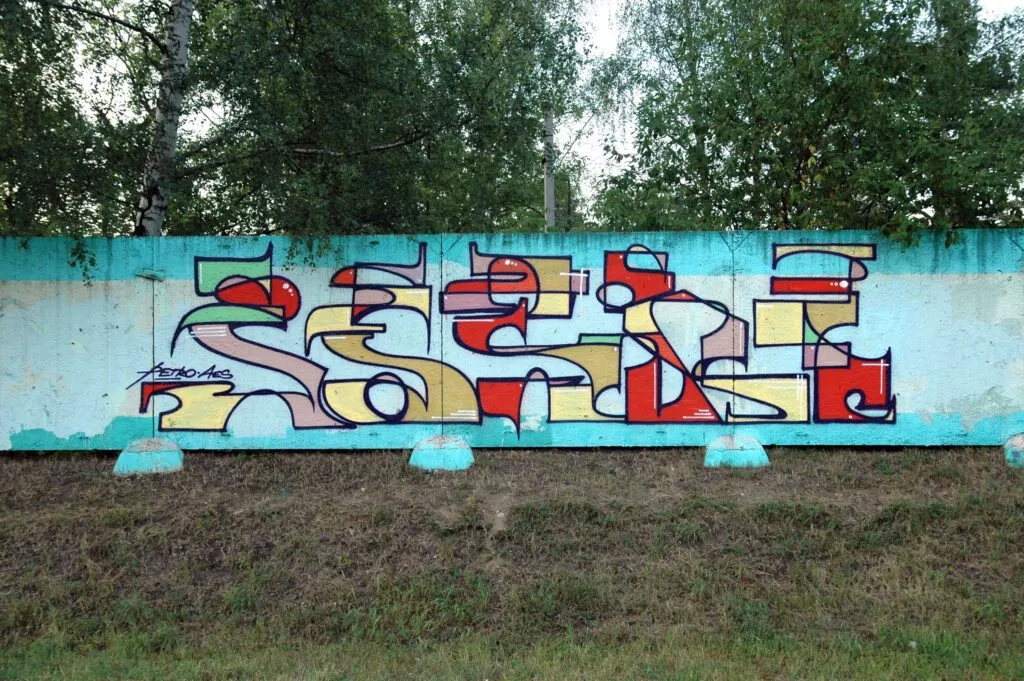
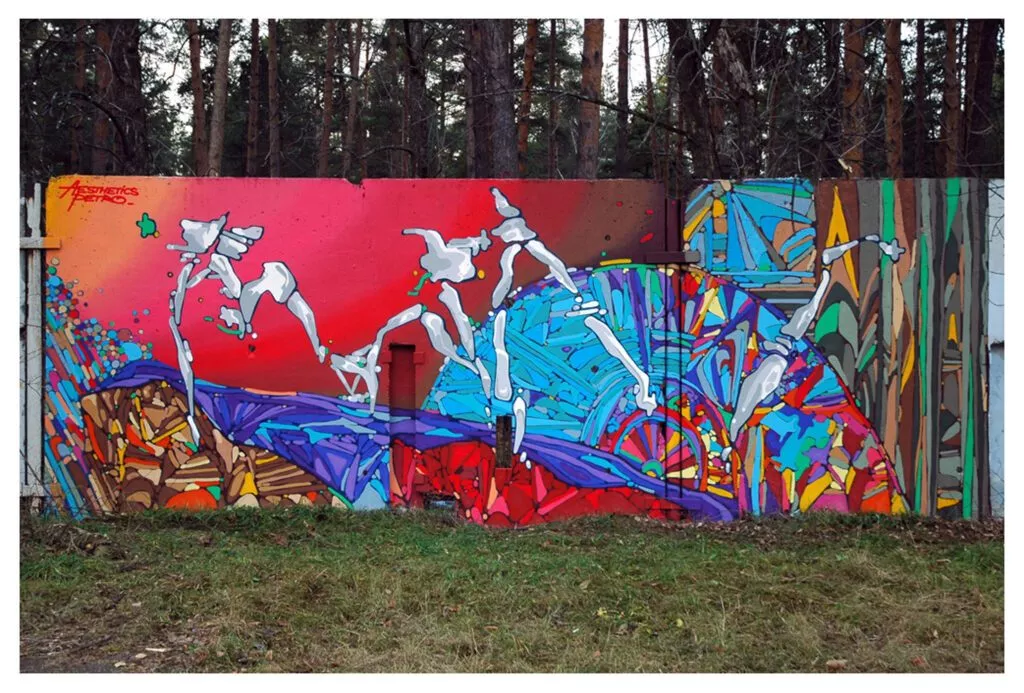
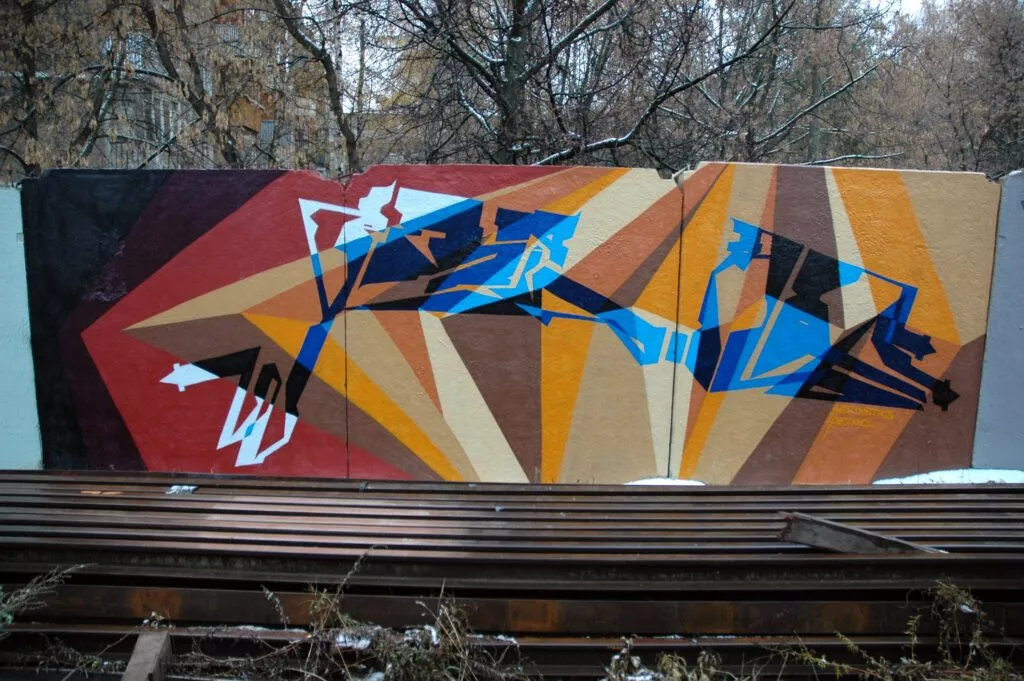
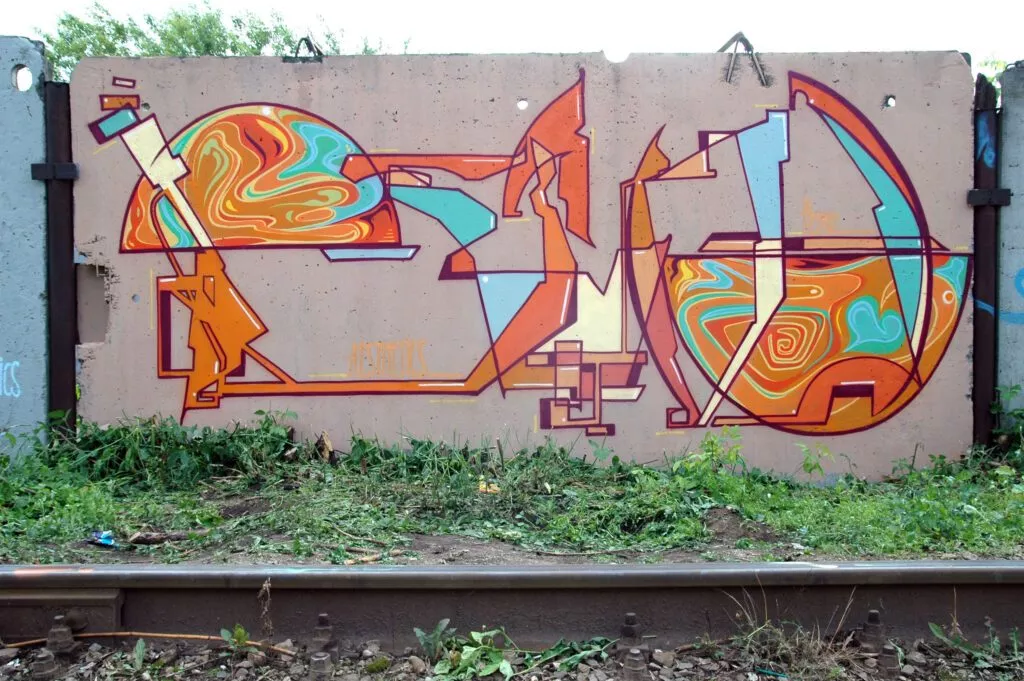
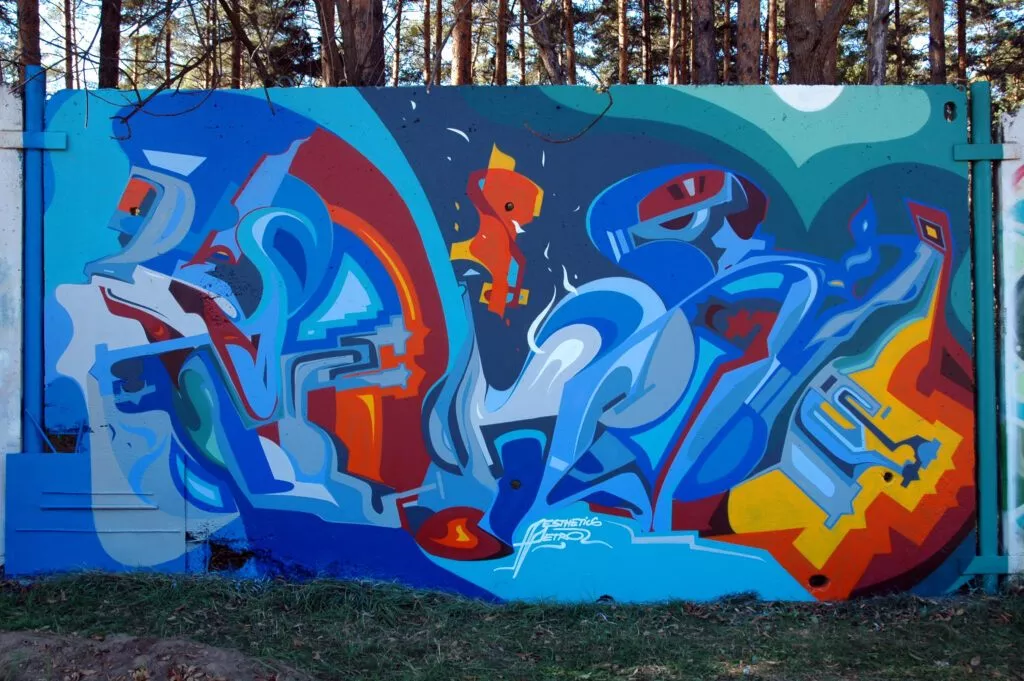
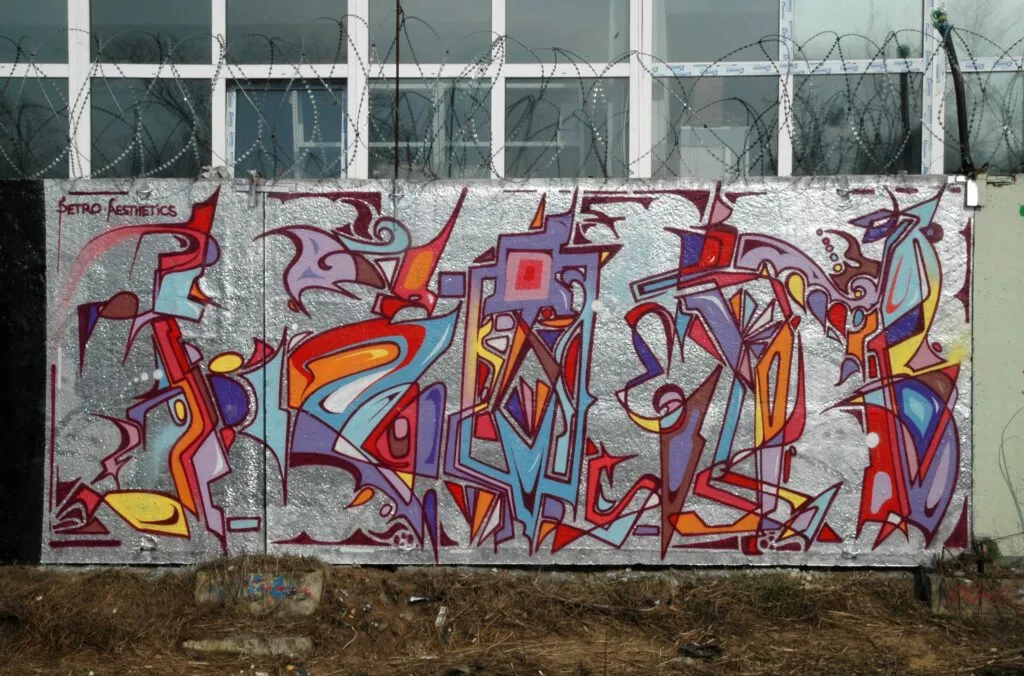
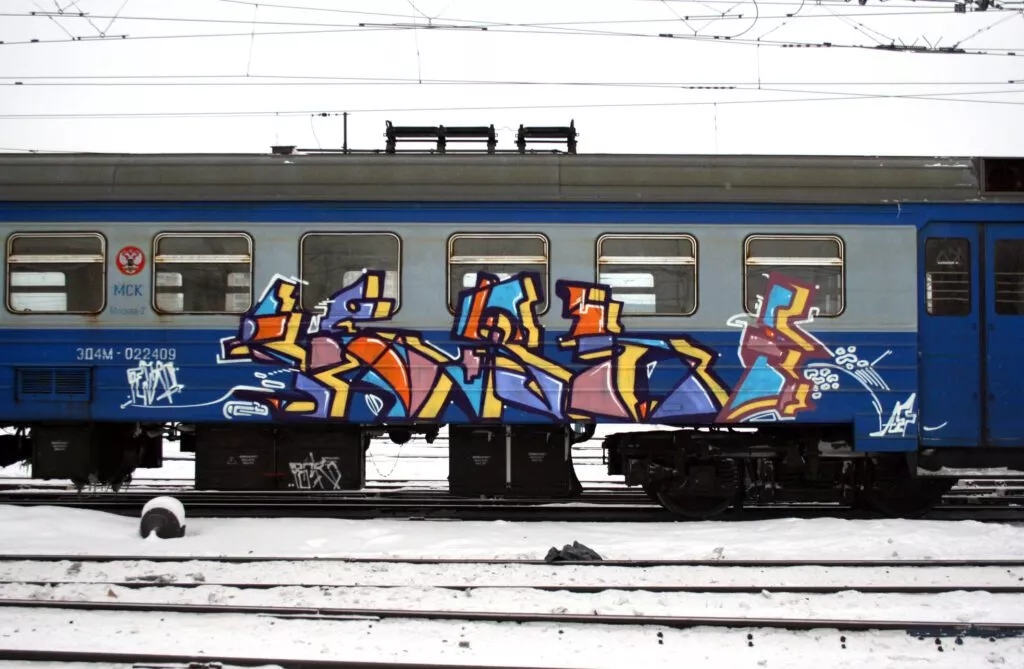
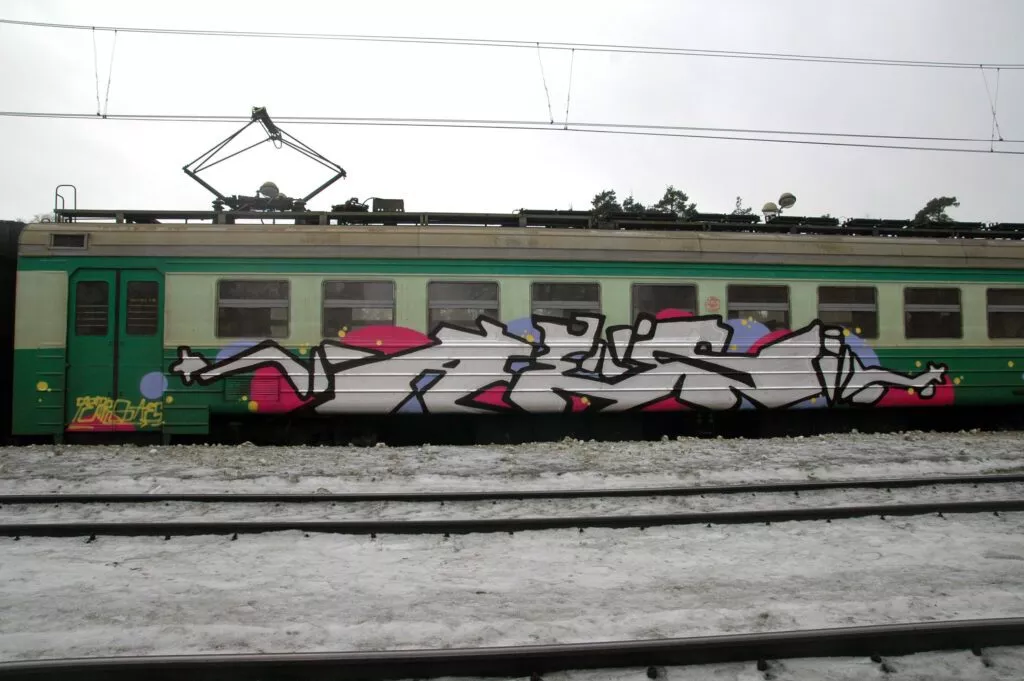
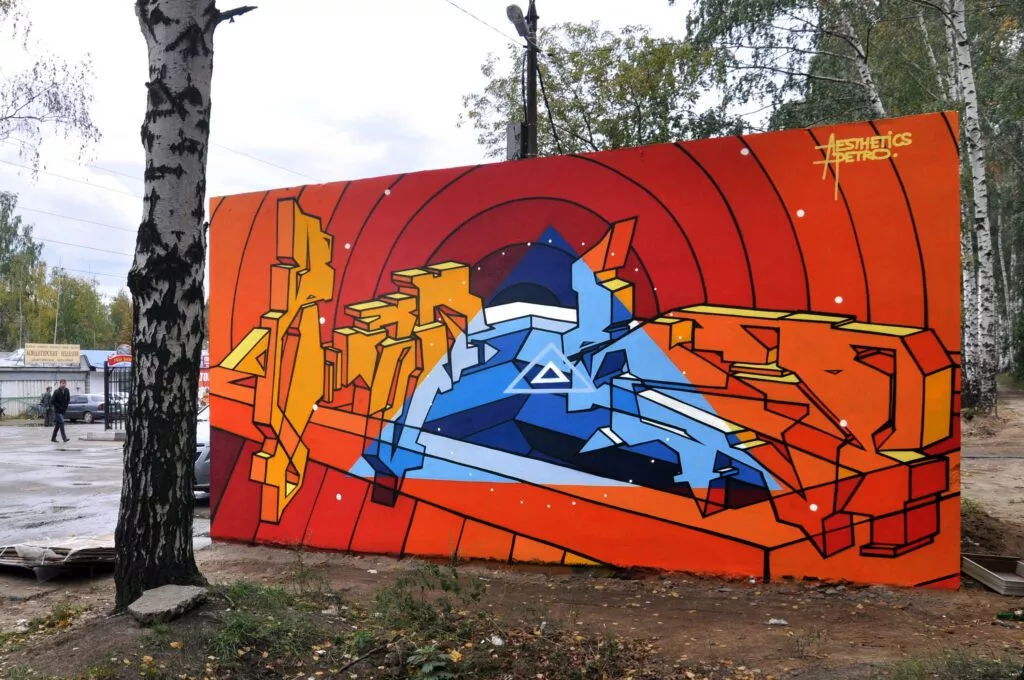
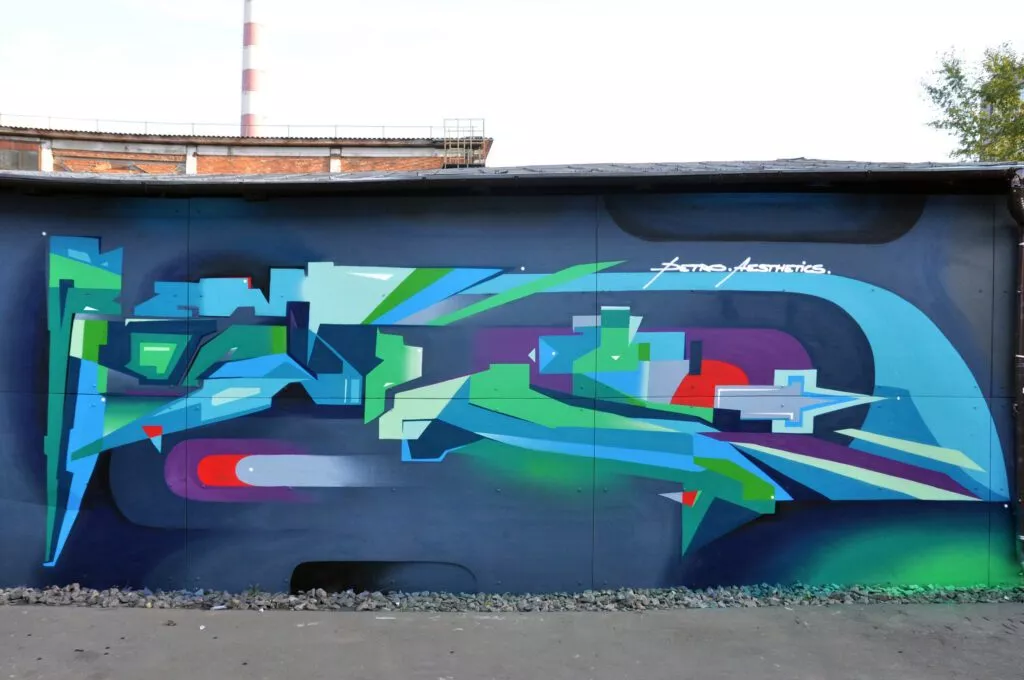
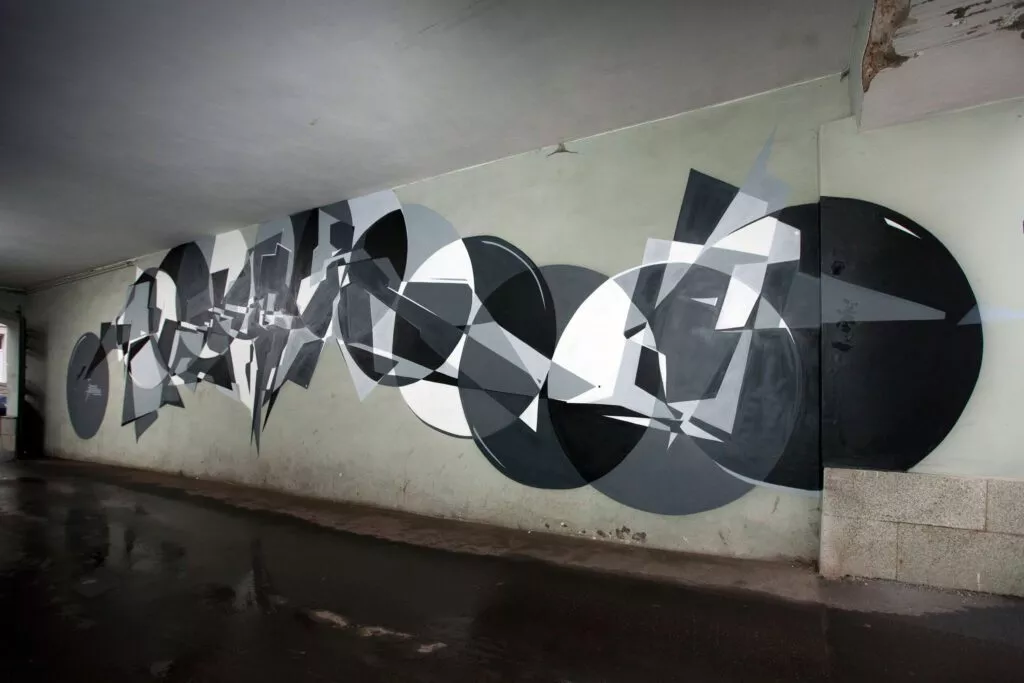
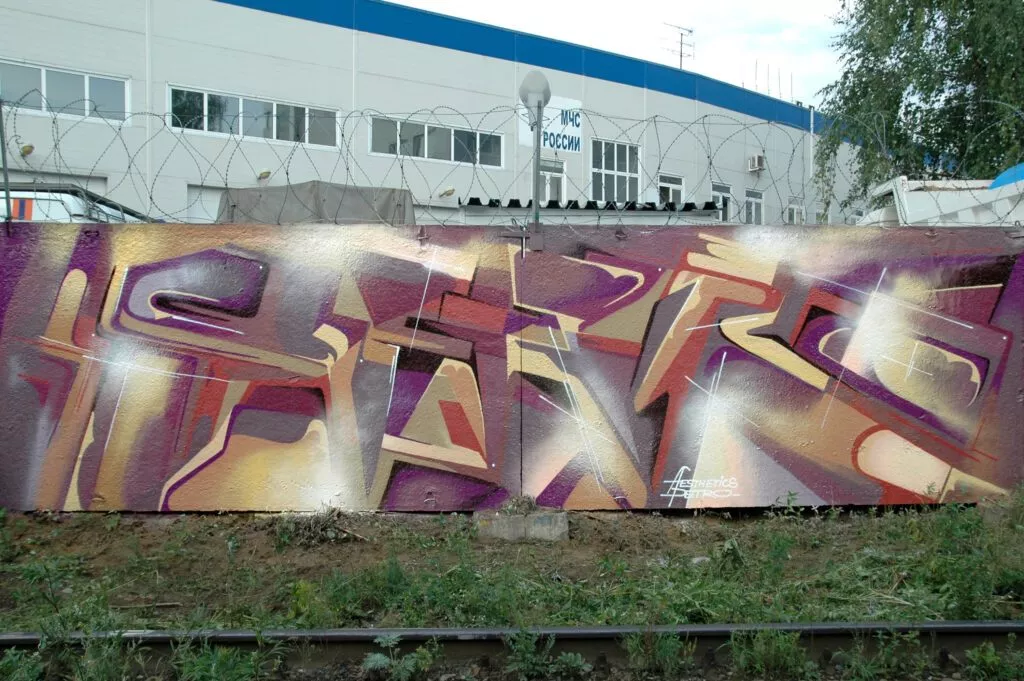
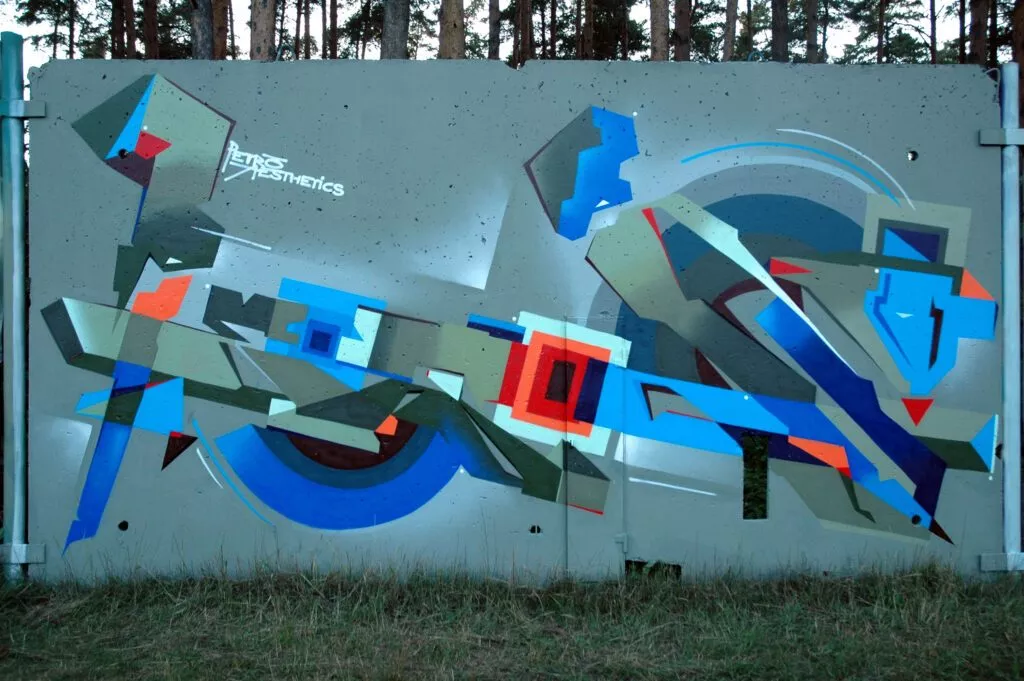
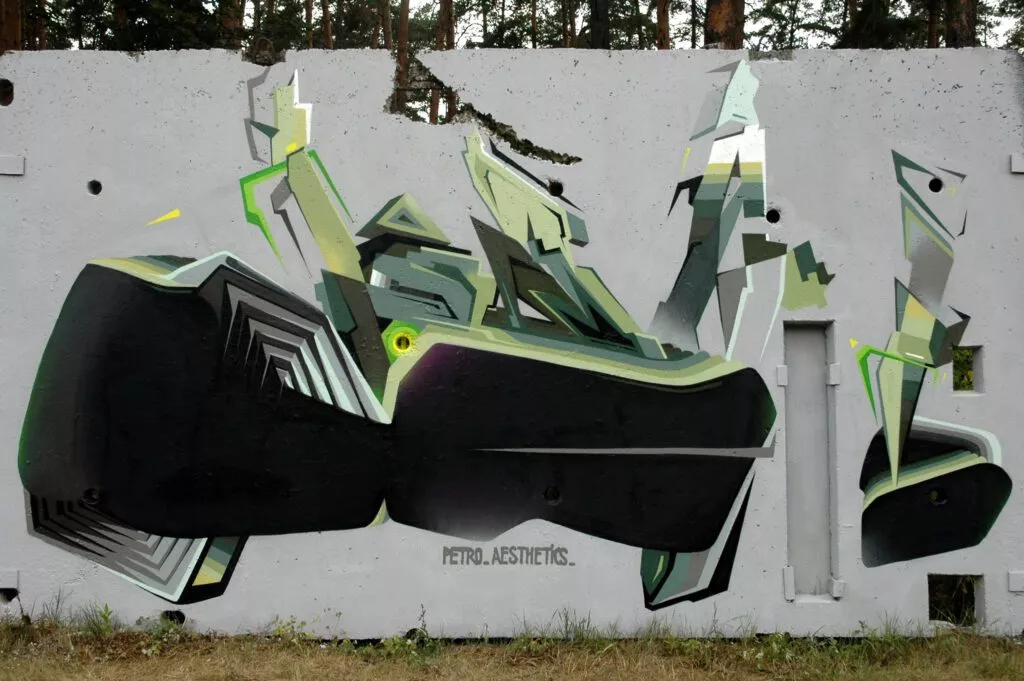
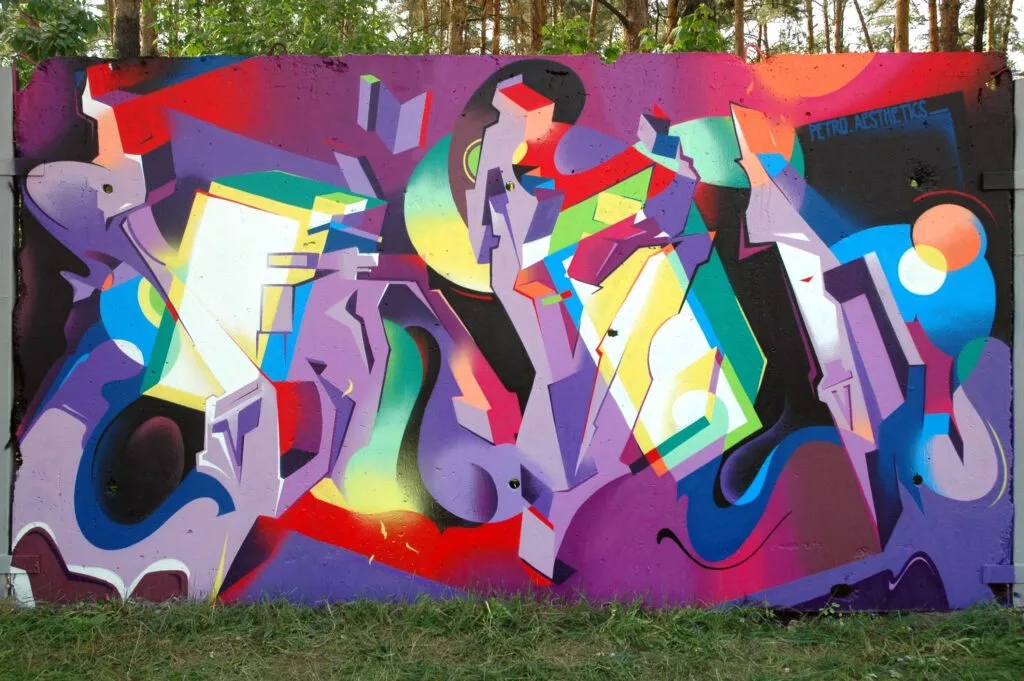
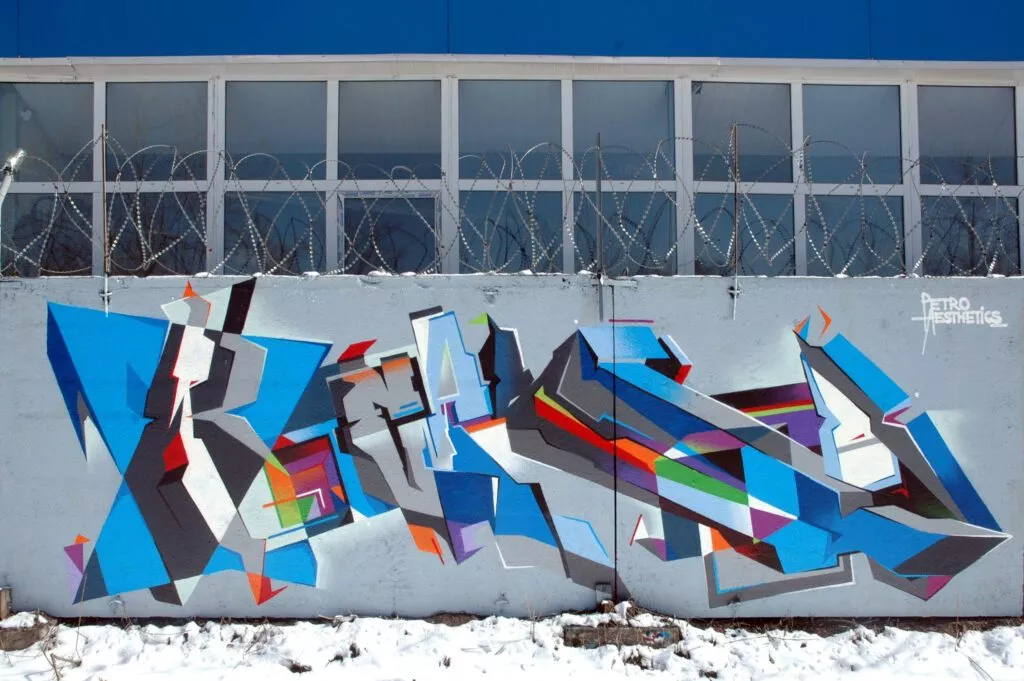
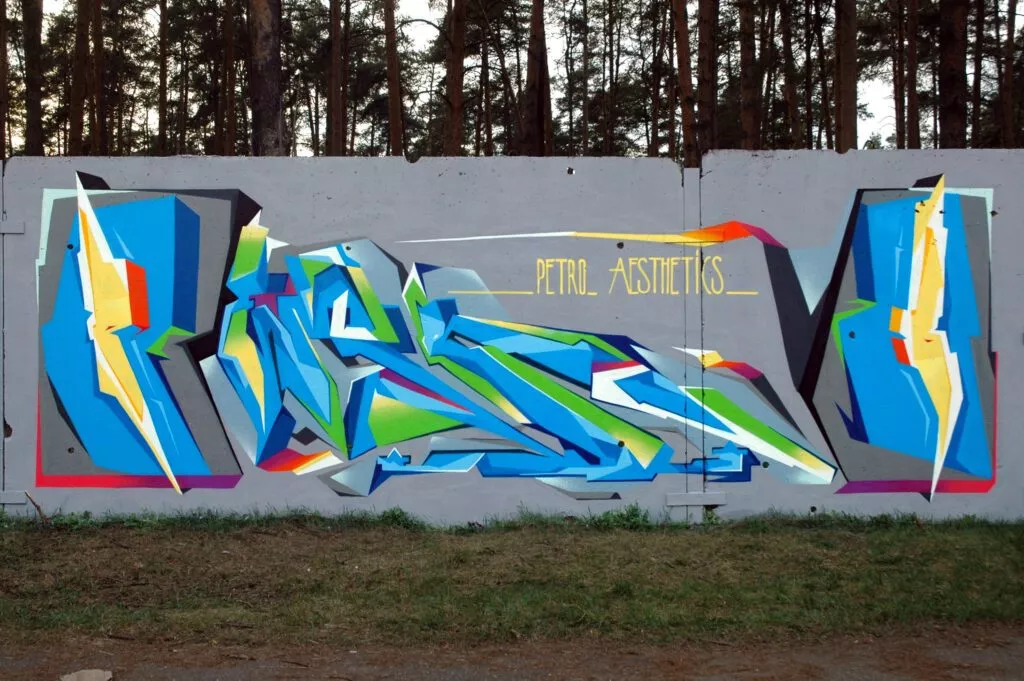
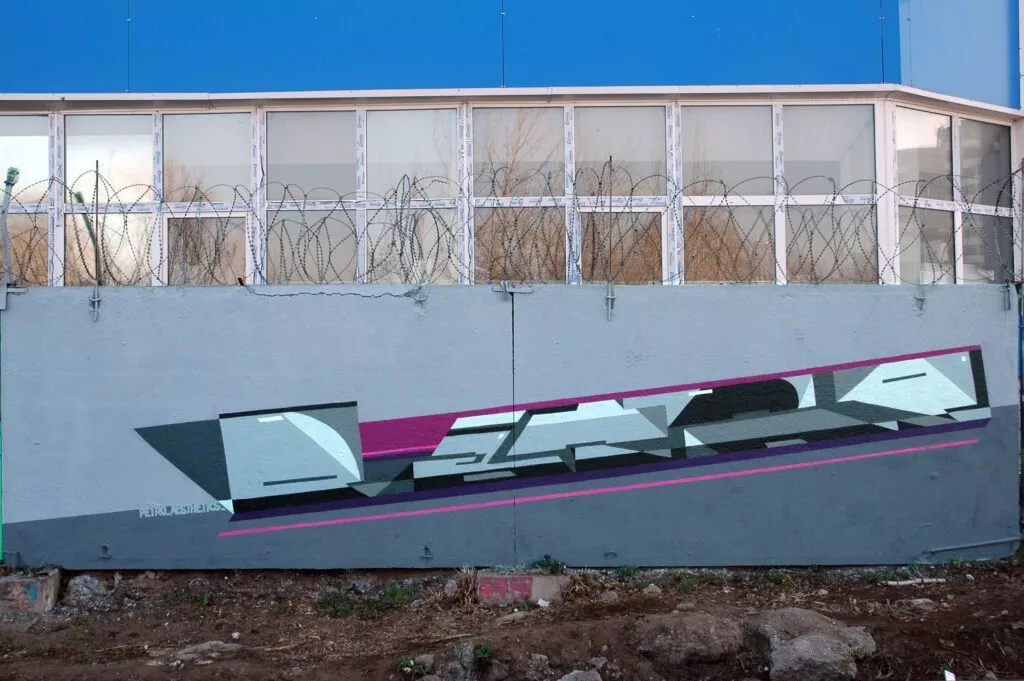
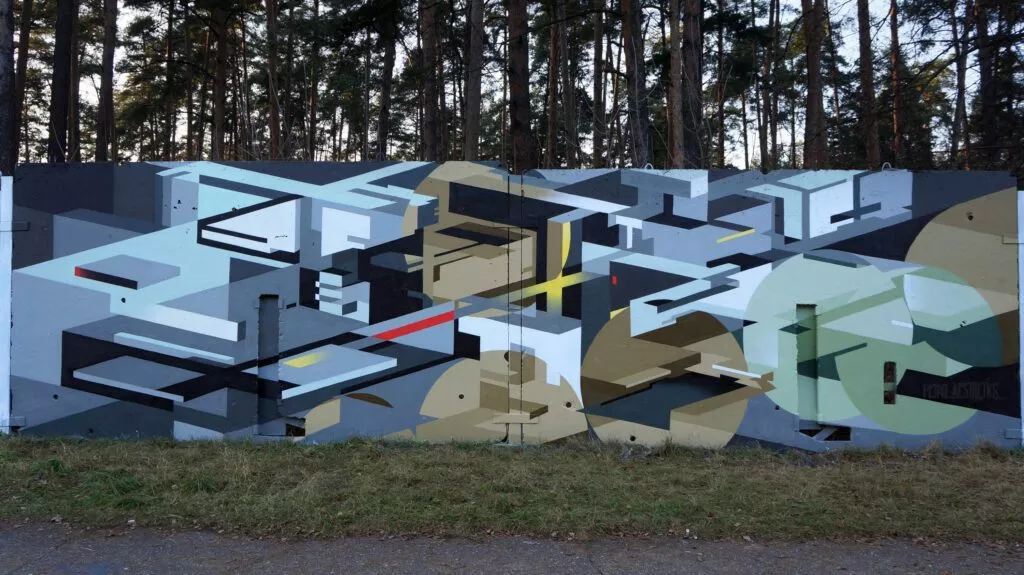
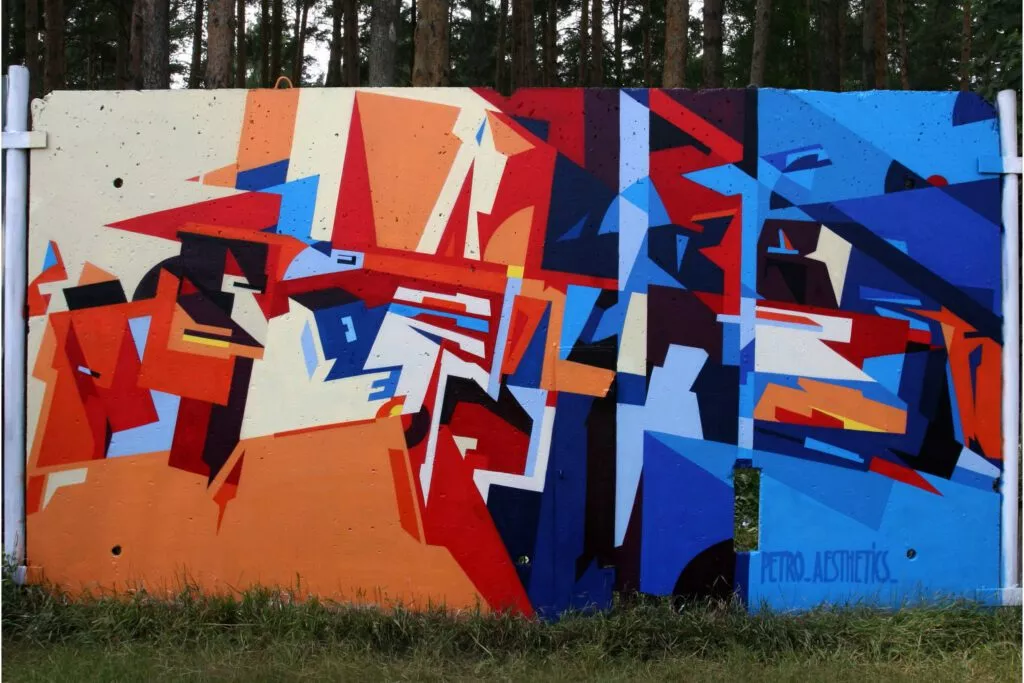
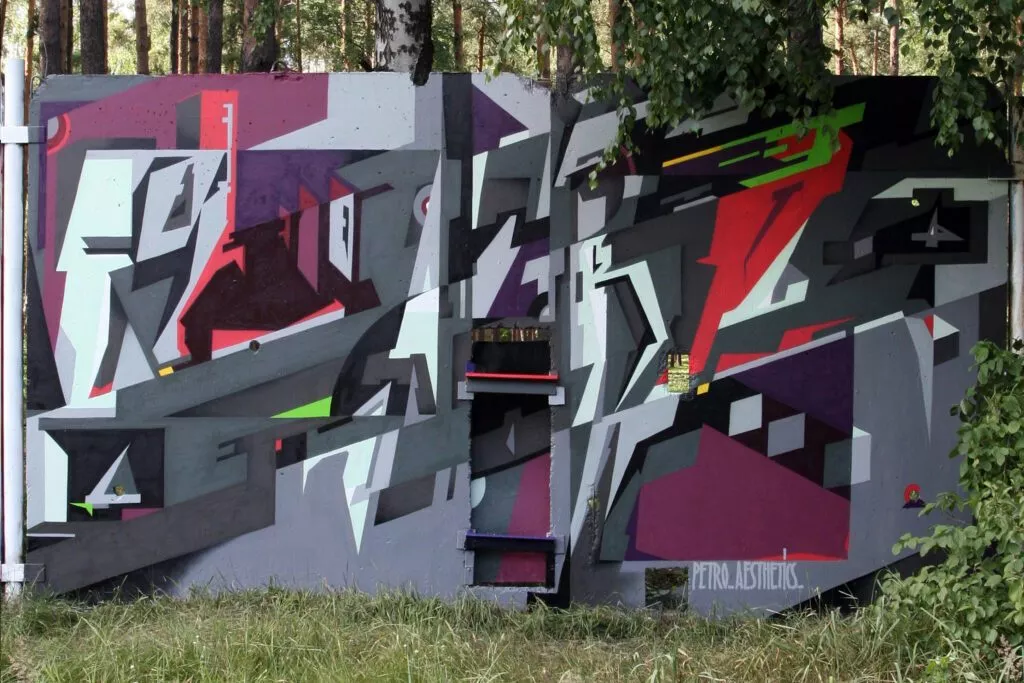
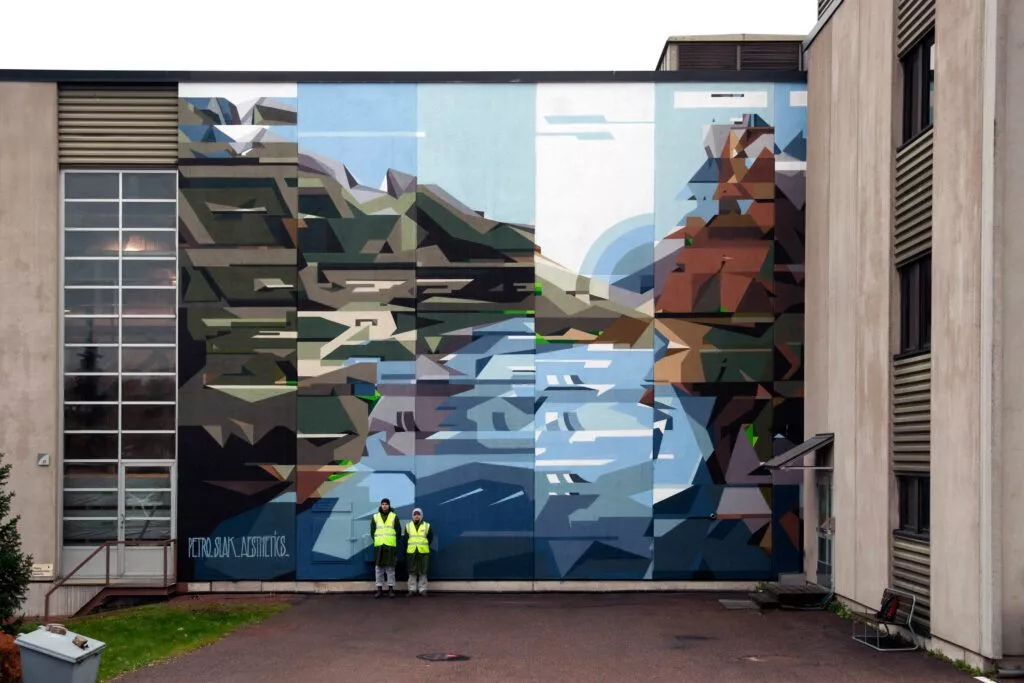
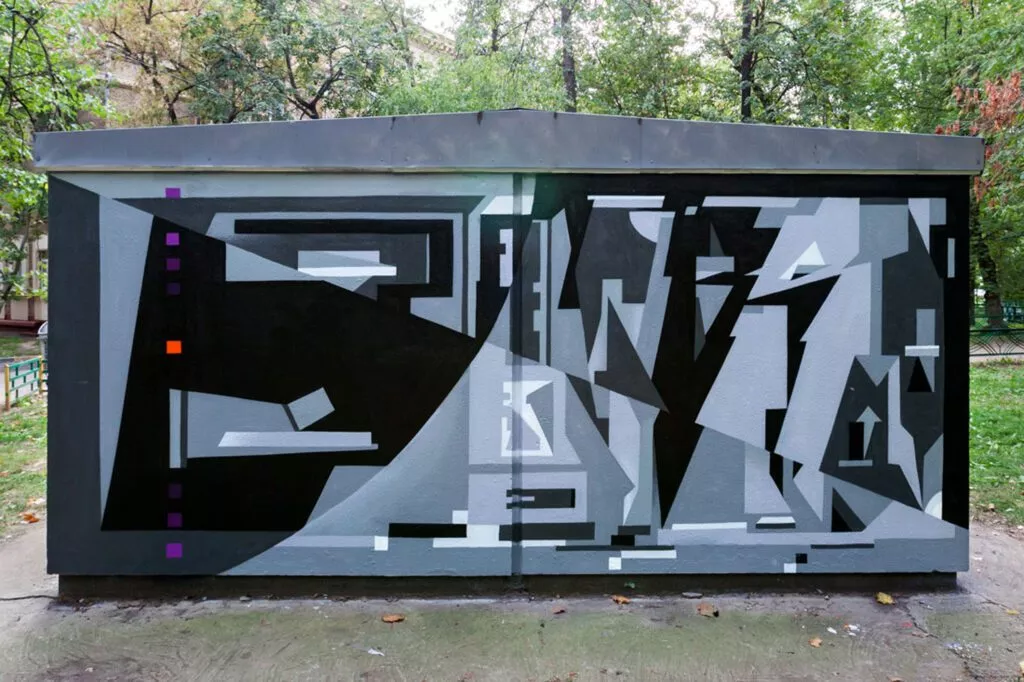
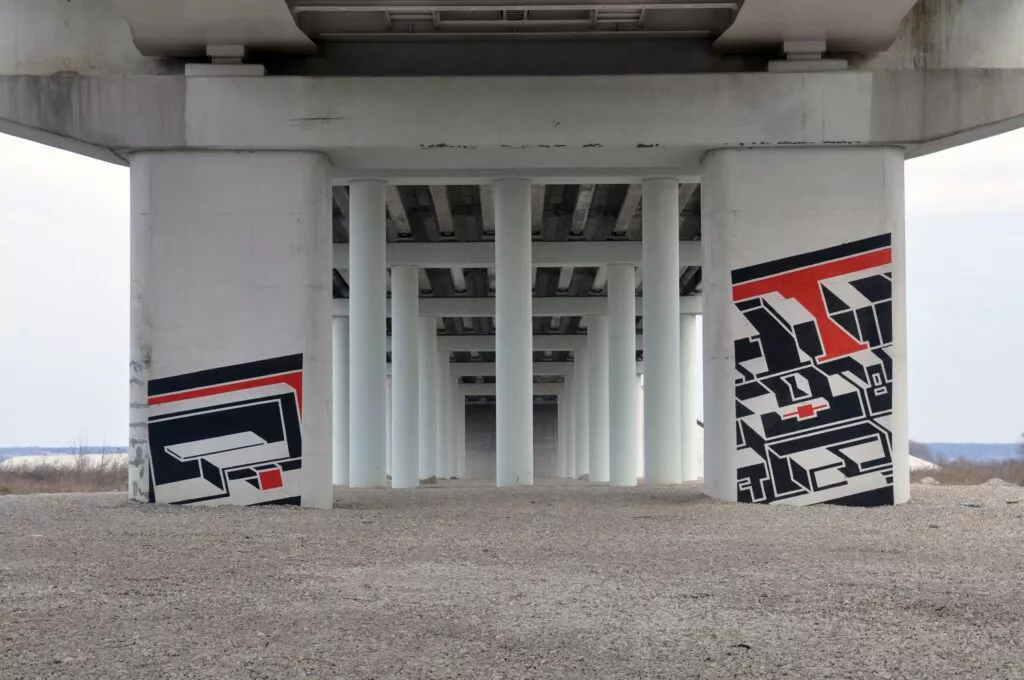
In 2016, PETRO began the practice complete abstraction, where the style and basic techniques taken from the previous 15 years of experience were also preserved. He moved away from lettering for a year to come back to it a year later, already with a different look at the aesthetics of forms and began to create works, abstract or with lettering, separating both styles. Also in the early 2010s, he began to devote himself more to art history, which certainly affected his work later on. He studied various directions in art, in architecture and in photography, visited exhibitions and read theoretical literature. The Russian avant-garde of the beginning of the 20th century, movements like constructivism and suprematism, impressed him a lot and still have a colossal energy flow in his opinion, which contain deep philosophical moments. By studying the work by Kandinsky, Malevich, El Lissitzky, Rodchenko, Klyun, and Tatlin, PETRO understood one thing for himself: that a person is able to create something new, and relying on the power of his mind, he can “fly”. In all this, according to the artist, the main thing is to find the key to yourself and the path of development in which you can open a new perception and approach to life. Kandinsky impressed PETRO with his ease and his understanding to work with intuition, with the energy of the hand and thought. The lasting impression of Malevich on PETRO is about how strict, confident, and verified he was in his knowledge, he made it clear how much any thought is material and capable of having a lot of weight. Besides the visual arts, architecture is also very important to PETRO for the study of scale and working with space. But his great interest was typography, writing and alphabets. In addition to Latin letters, PETRO also worked with the Cyrillic alphabet. According to him the emotional component and the acceptance of this traditional writing culture, technically and stylistically, it has its own history and certainly influences his approach and thinking of forms. But the Russian writer prefers to work in a more universal language for everybody until now: with the Latin alphabet.
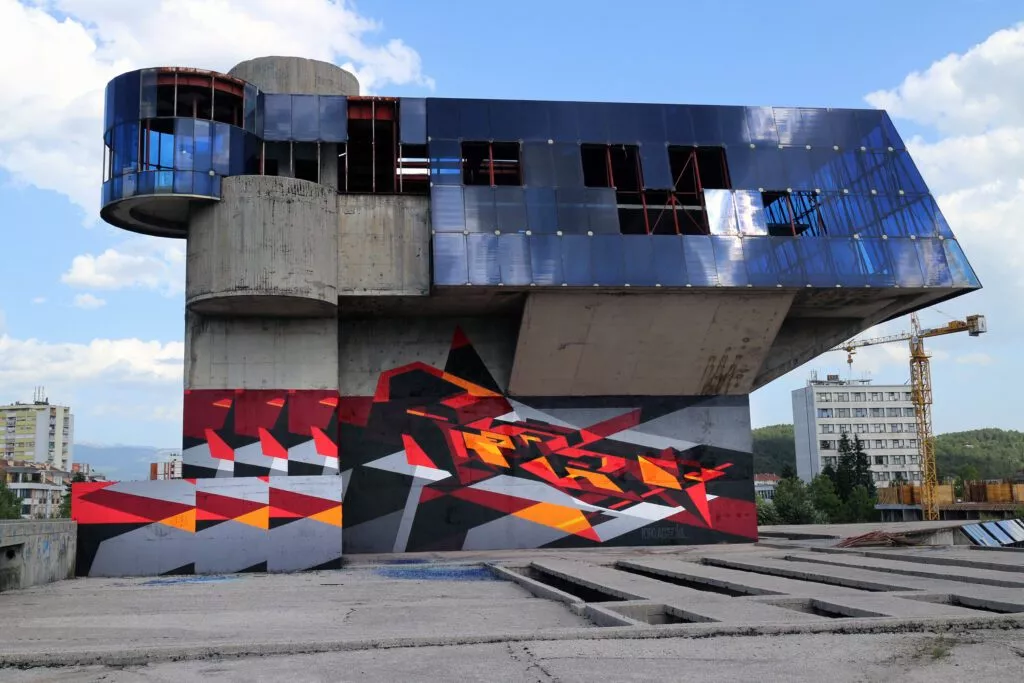
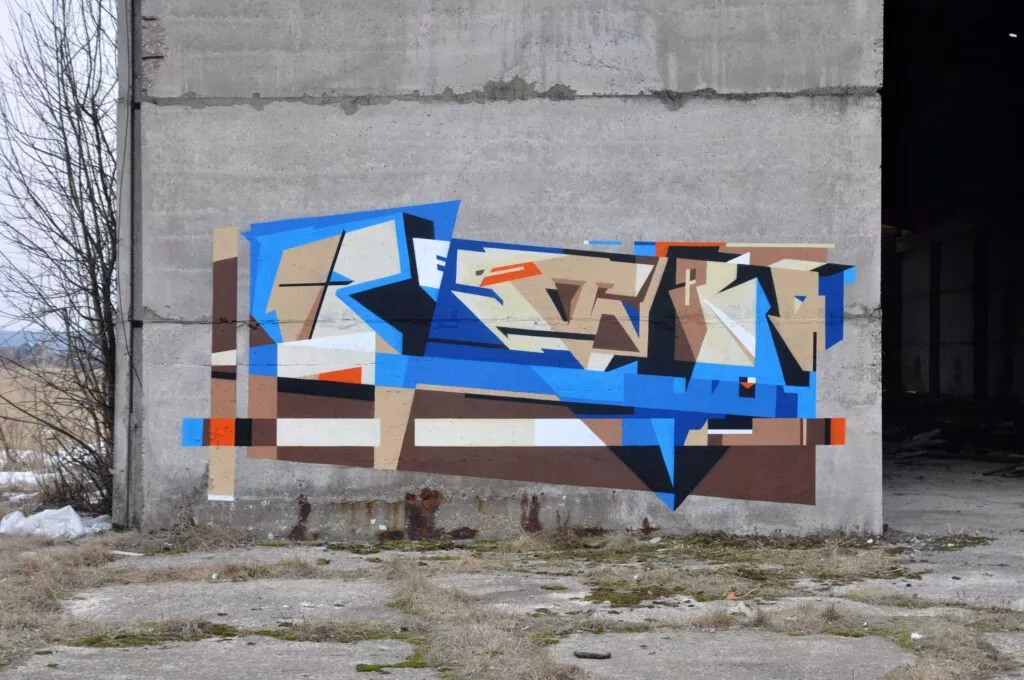
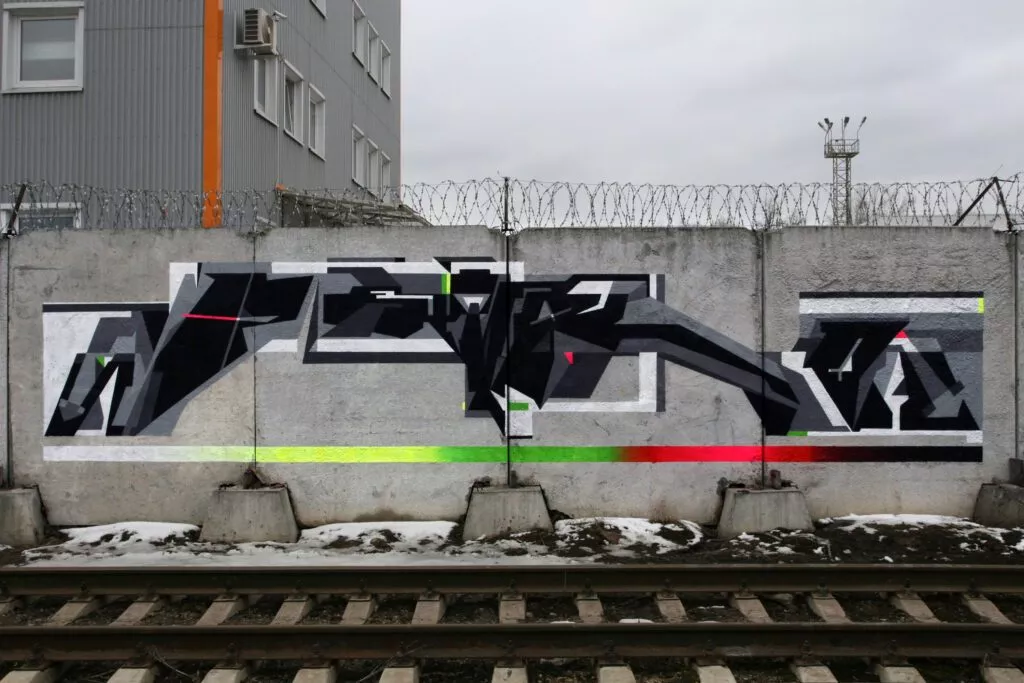
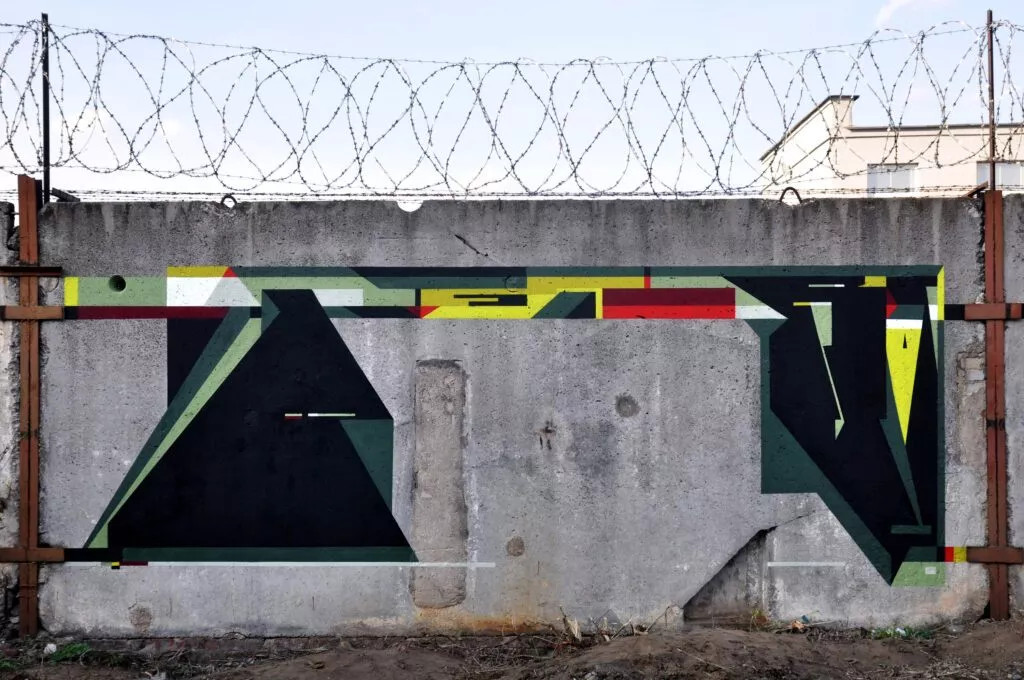
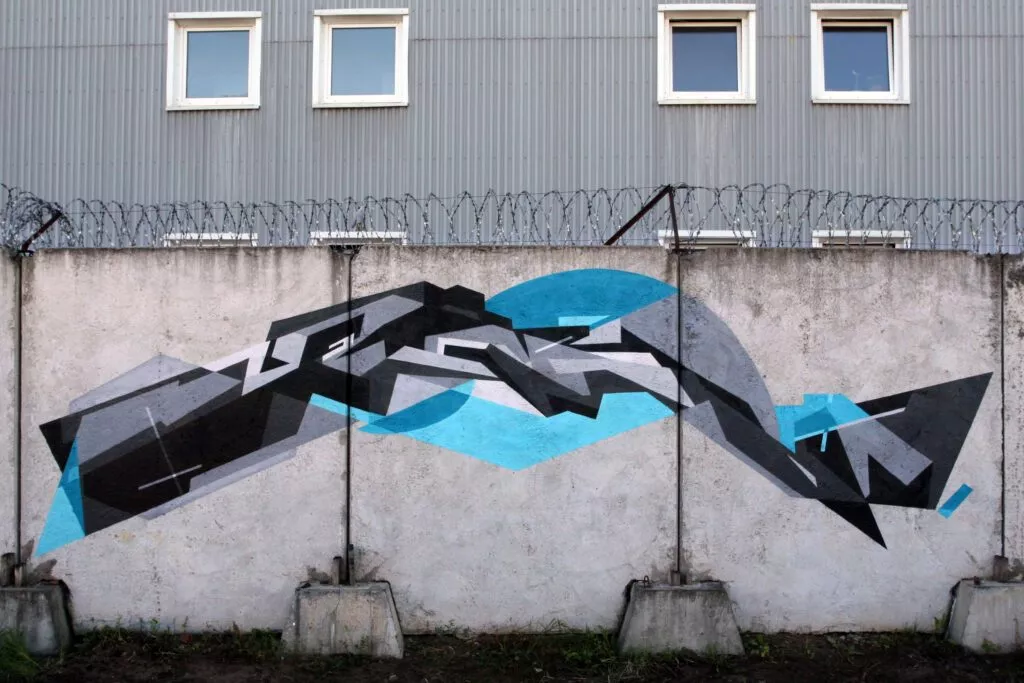
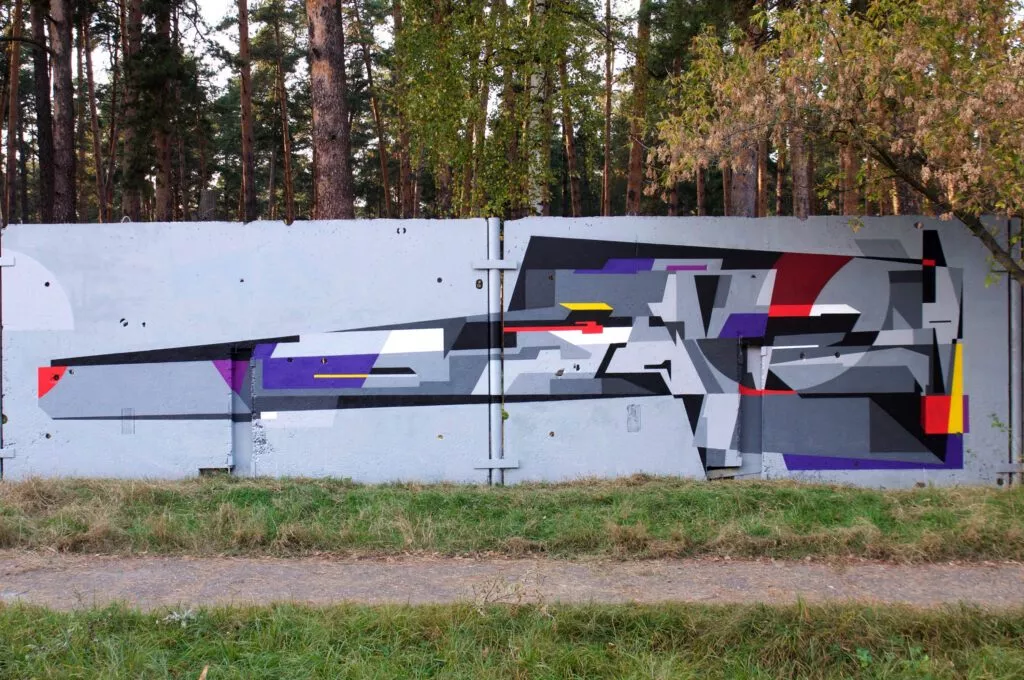
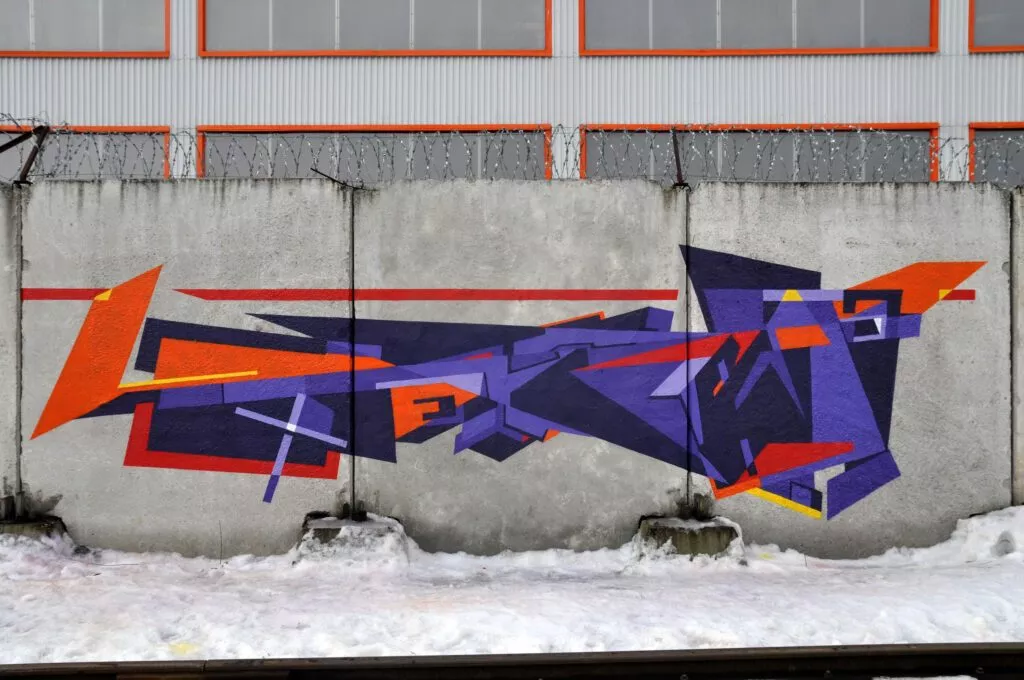
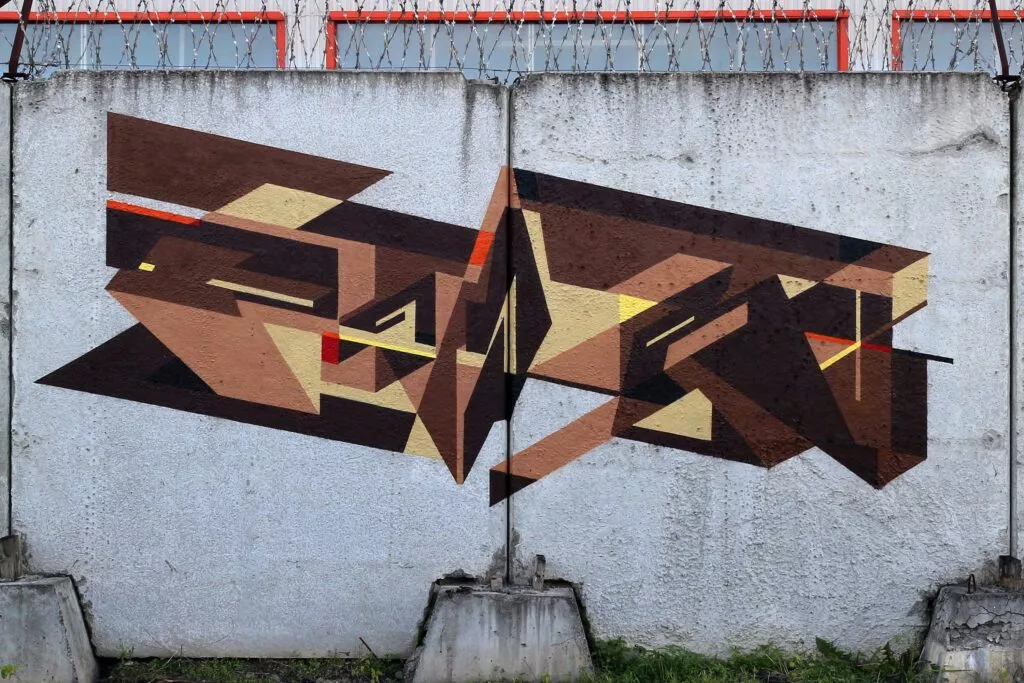

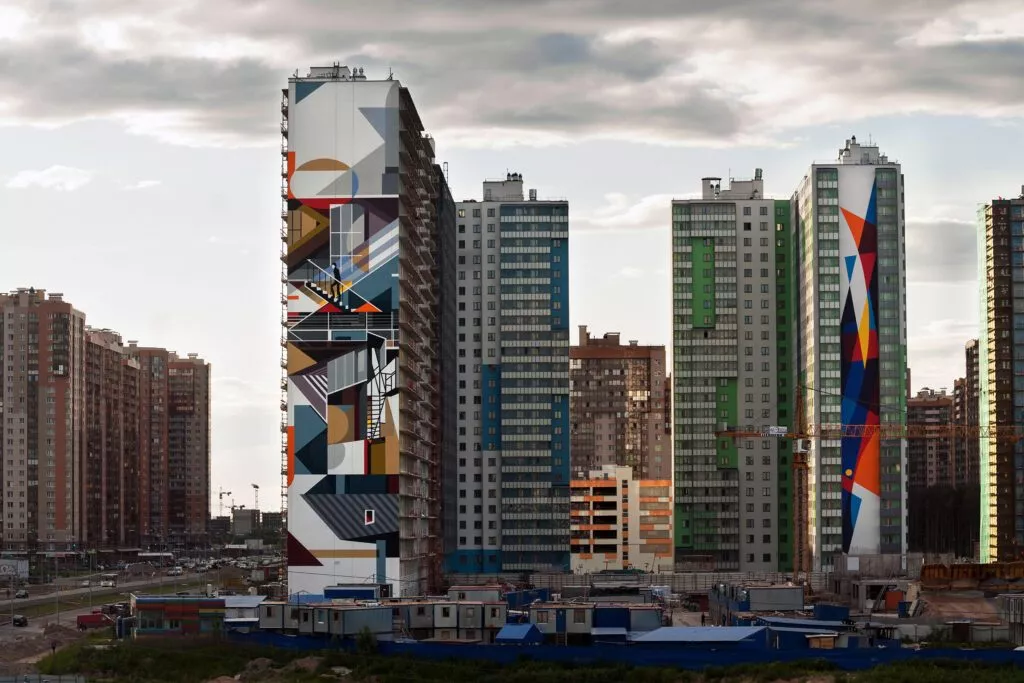
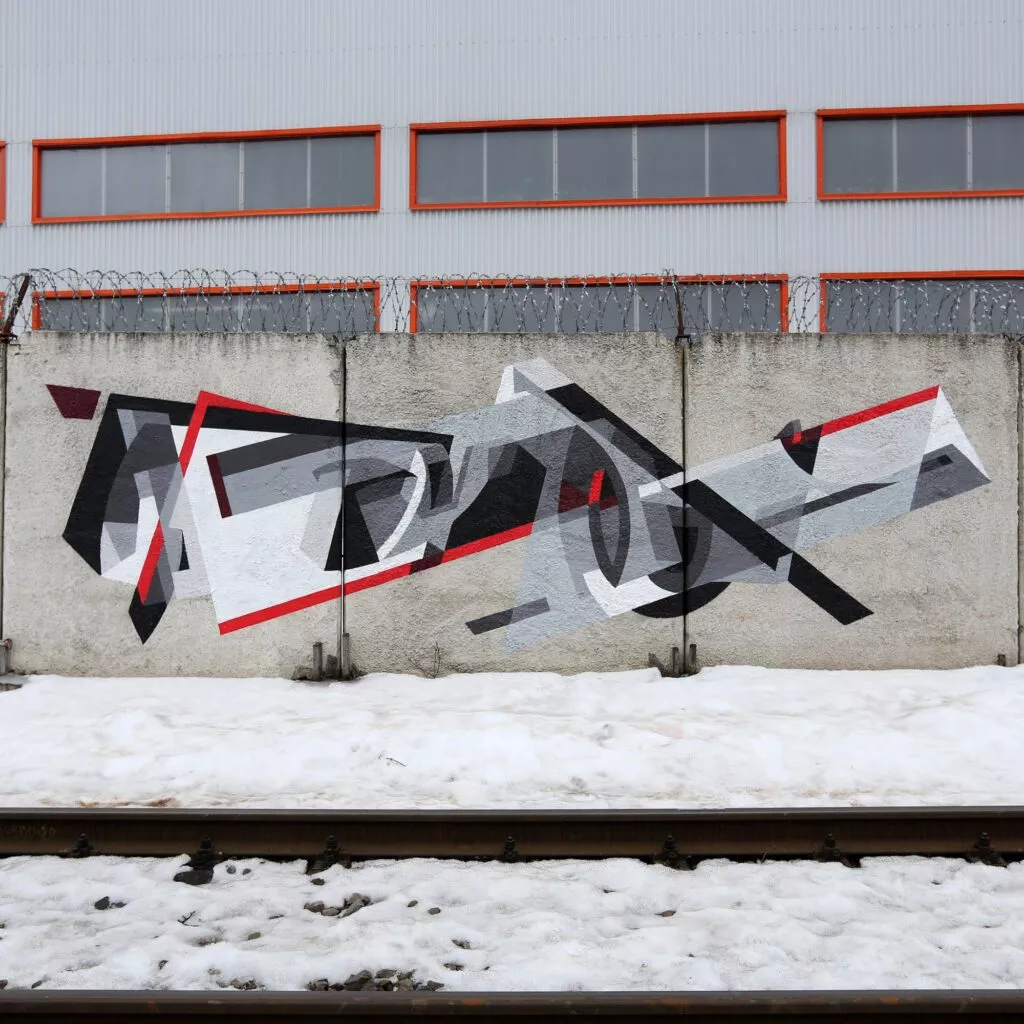
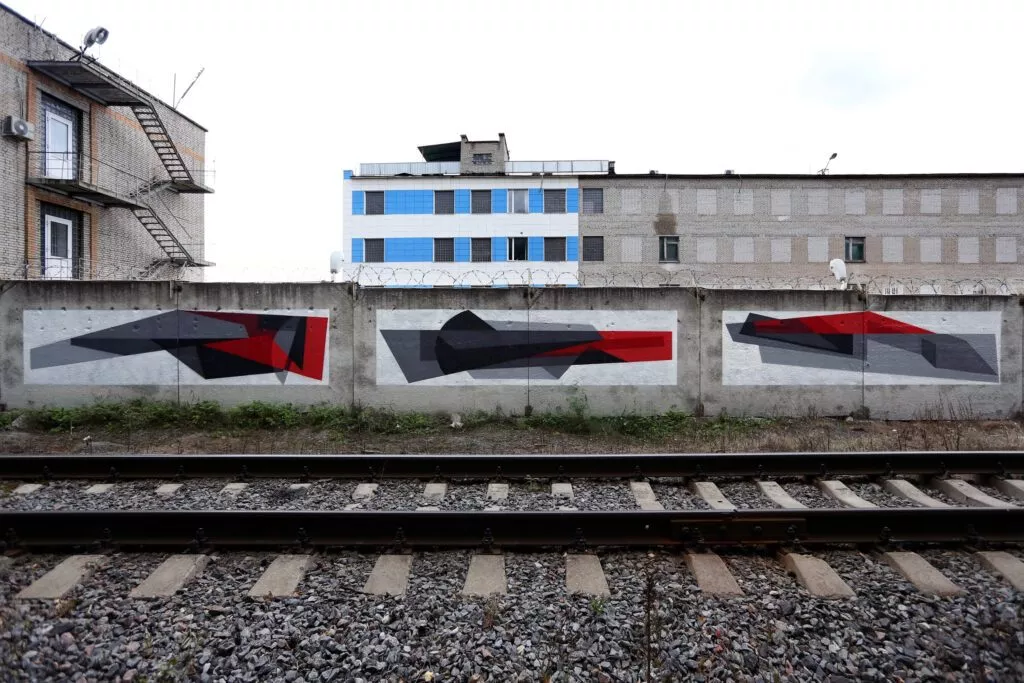
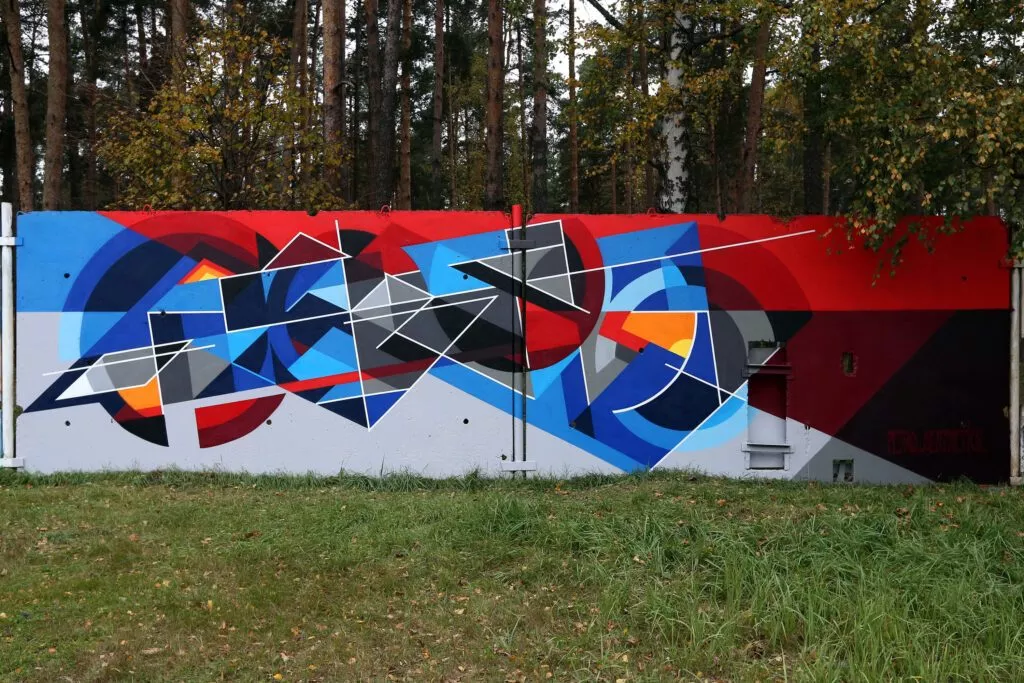
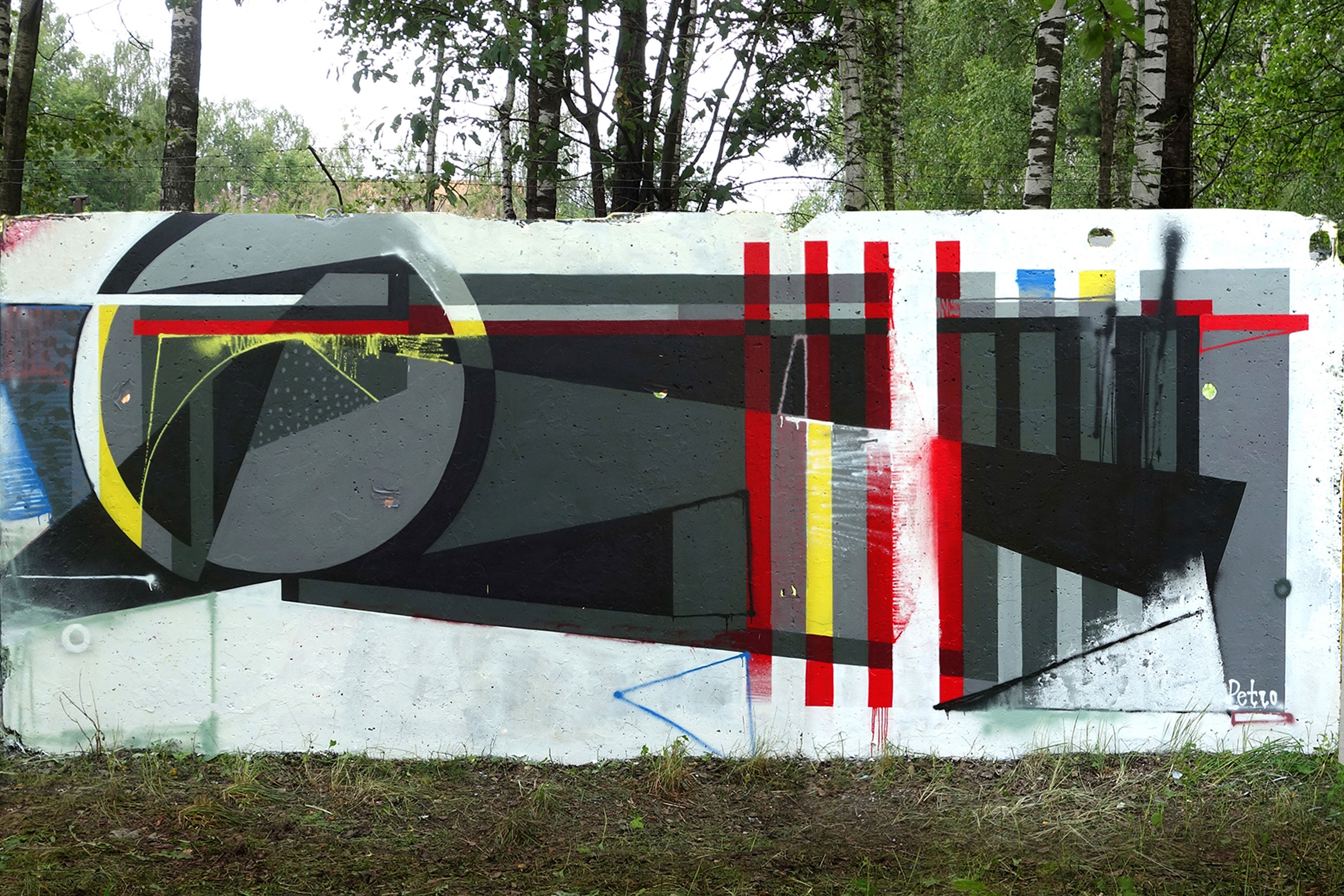
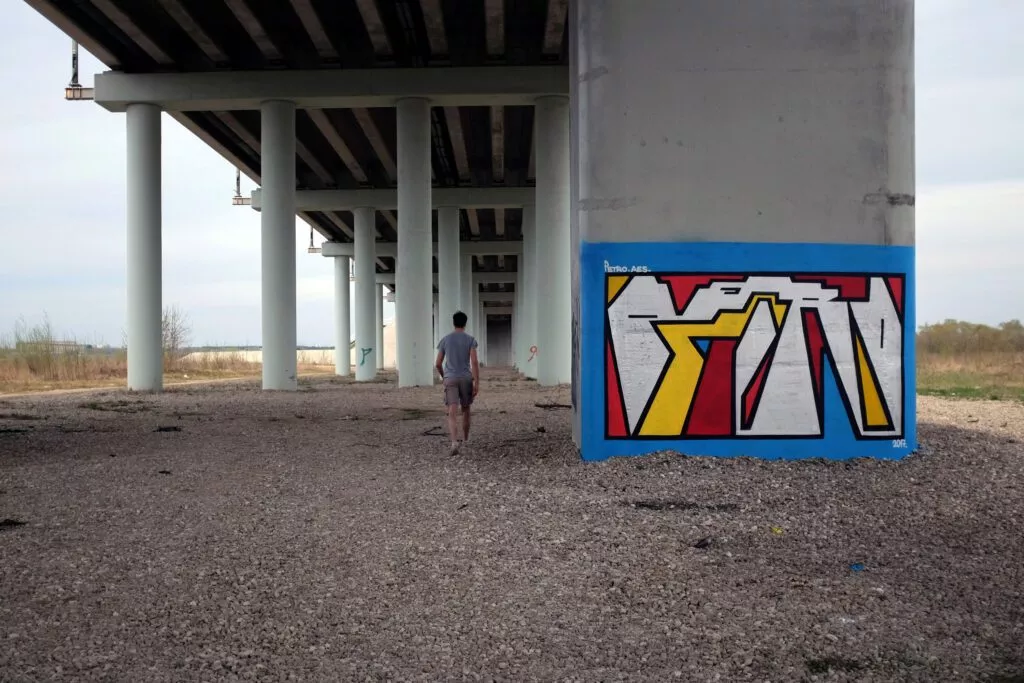
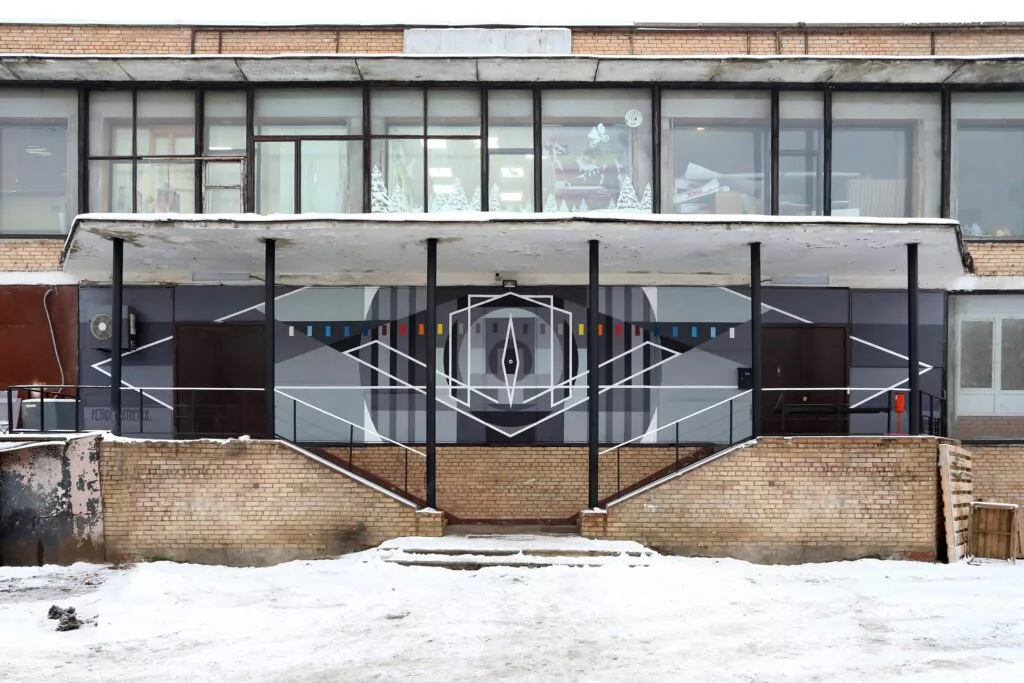

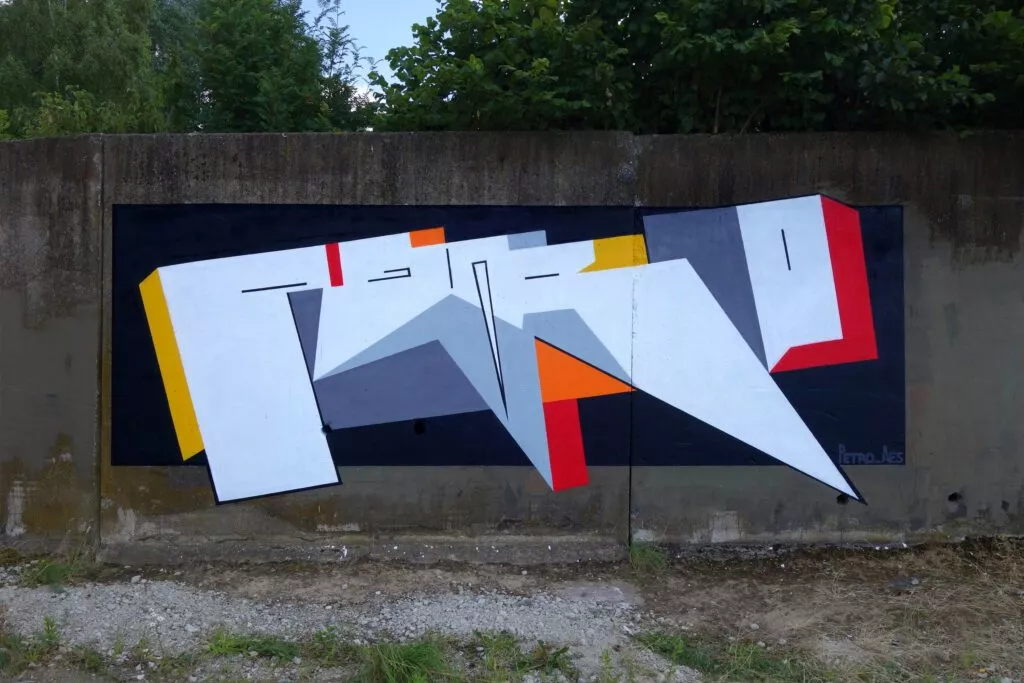
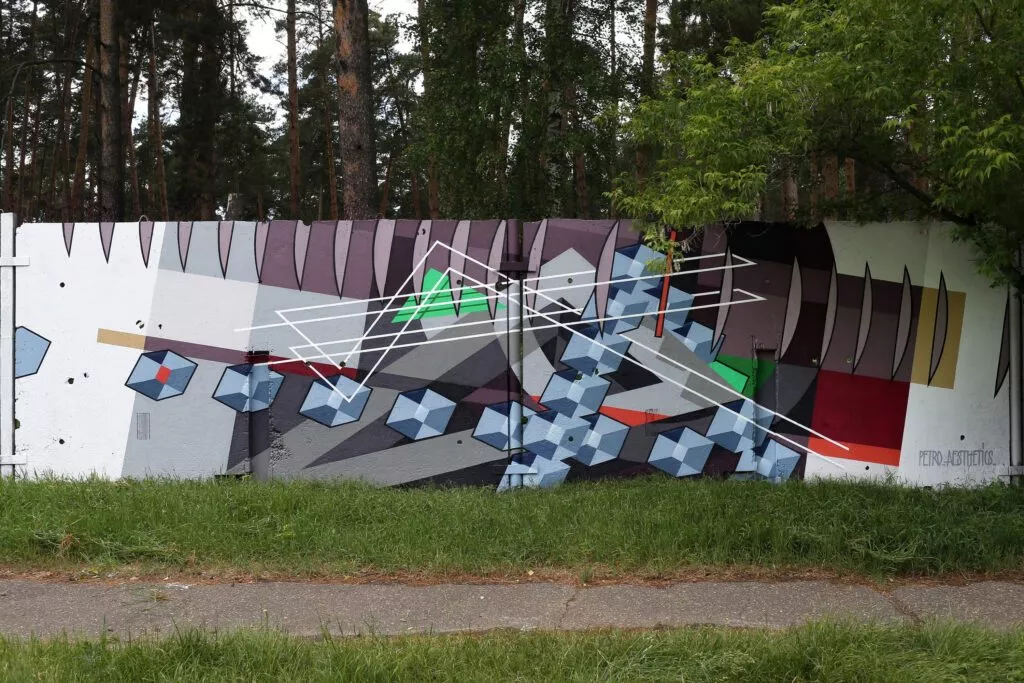
In this period he painted al lot with his duo Aesthetics group, they did joint exhibitions, realized commercial projects, and their exchange became closer and, of course, influenced them in spirit and aesthetics of their creativity. And this greatly influenced the visual language of both artists, which over time began to look similar to each other. After some time they understood that they had achieved what they wanted and it was necessary to make a decision to move to a more authors direction, to try more to express their individual qualities, but also preserving the aesthetic and ideological concepts of the artist duo. The skeleton of their common work is in a way constructivist and de-constructivist. But as PETRO says, it would be a mistake to say that their creativity is based on Suprematism. Their works are type compositions bordering geometric abstraction, in which, perhaps, the features of Cubism, Futurism, Constructivism or Suprematism sometimes slip through. They came to their own vision of creativity gradually through experiments, constantly rethinking their results for future projects. Regarding the name of the duo, he said: “The name of the duo implies a certain vision of graffiti from our author’s position. In general, all that remains of this art in our work is that we still put our names on the walls and build compositions around it. “Aesthetics” is the word that can be used to characterize our work: purely executed and thoughtful images with an abundance of clean colors and lines. And after all, the ultimate goal of our creativity is intellectual beauty. Or, in other words, aesthetics.“
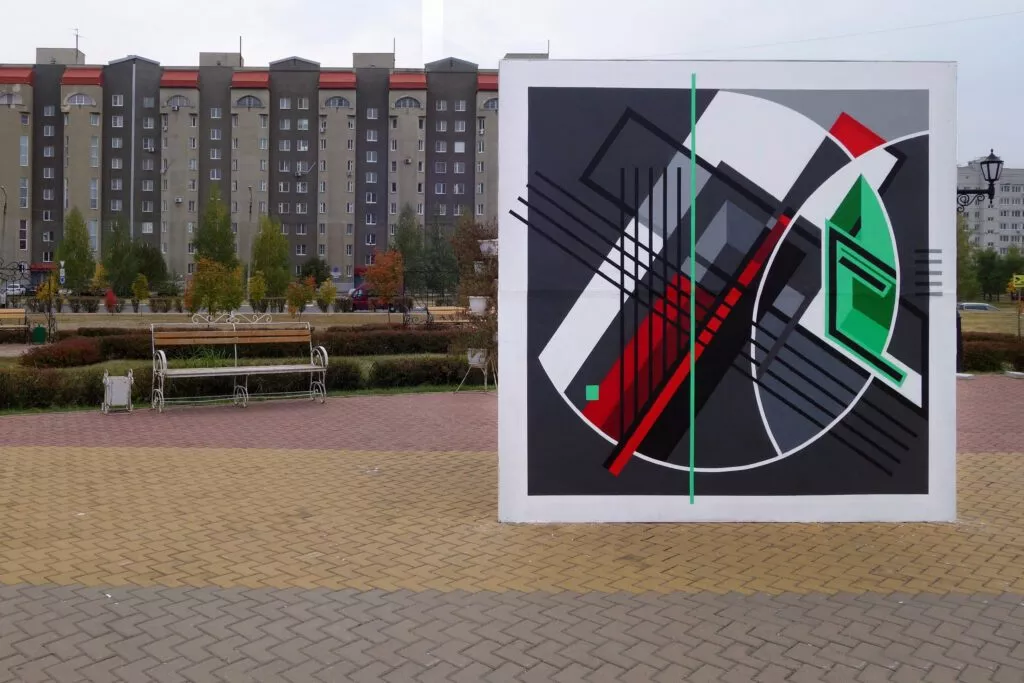
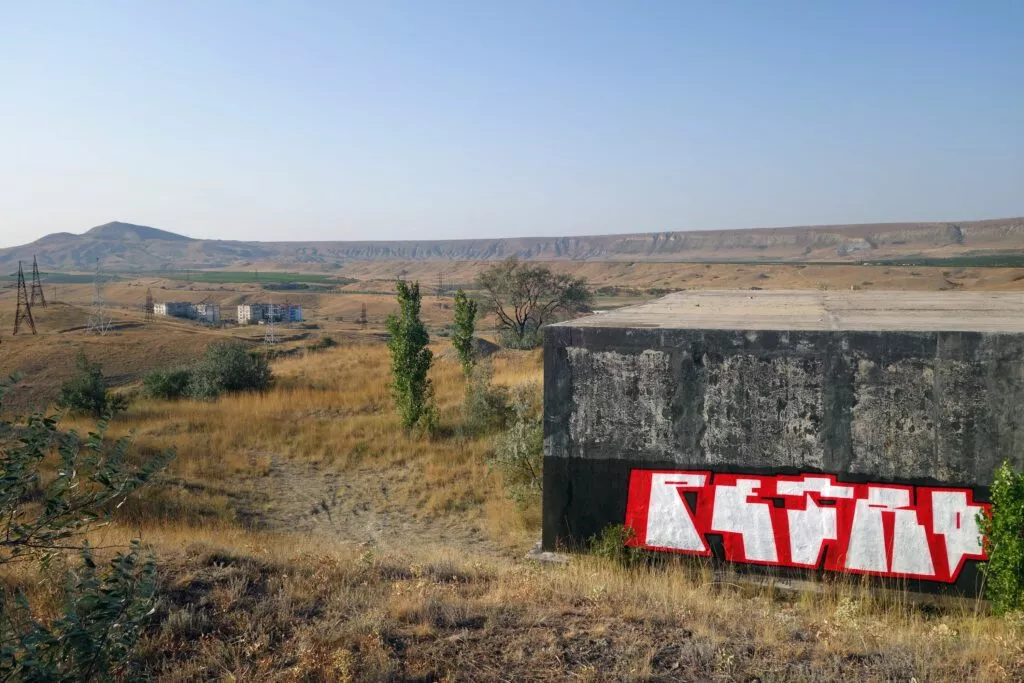
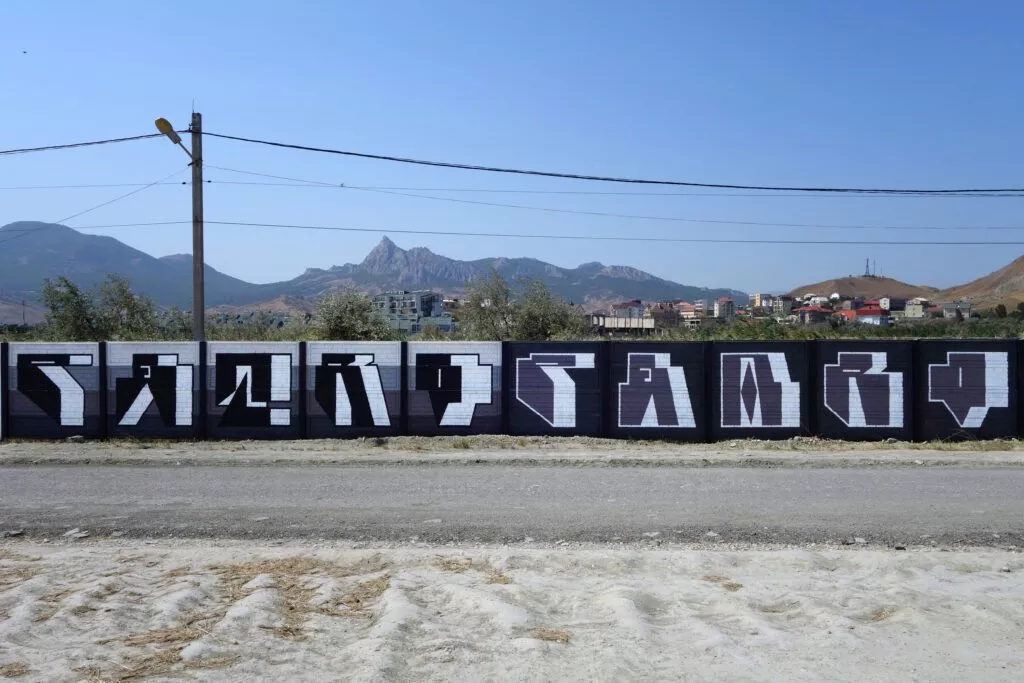
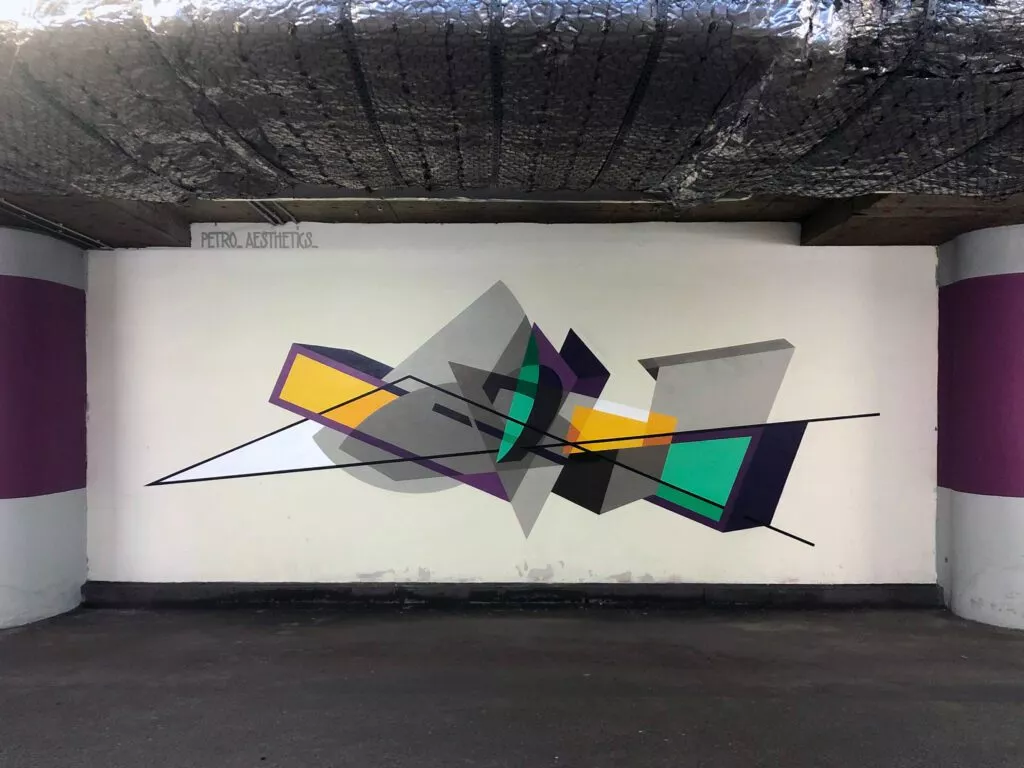
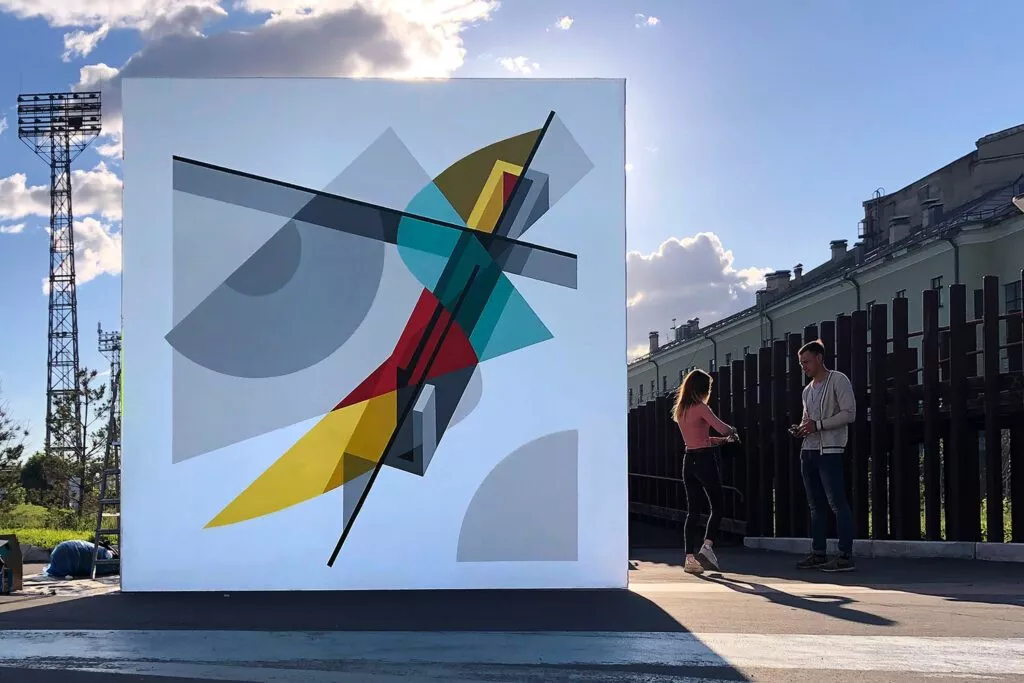
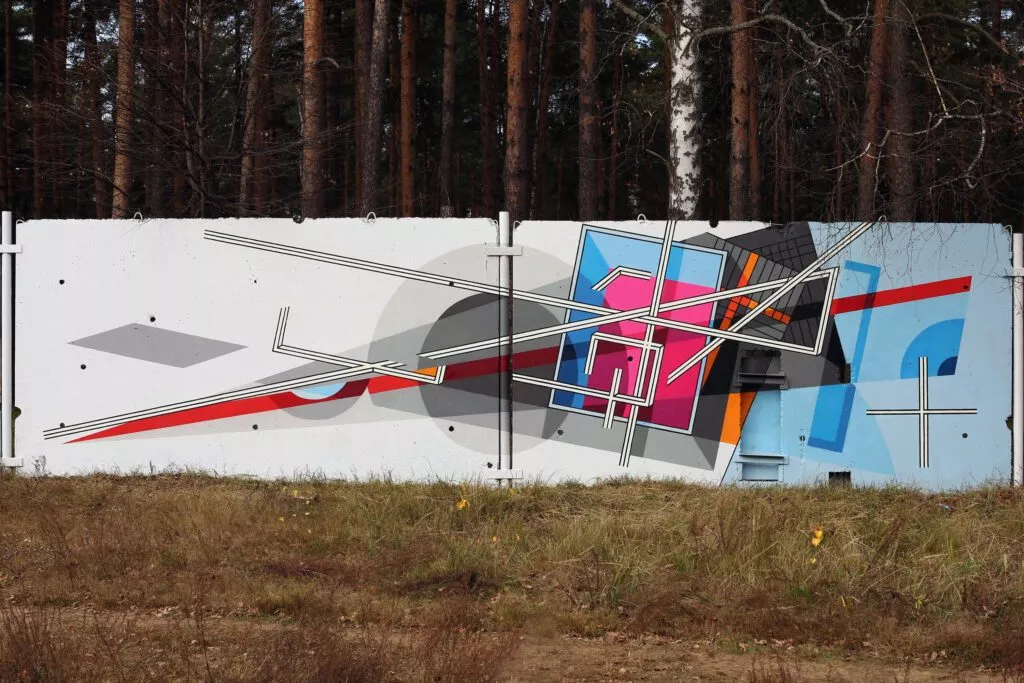
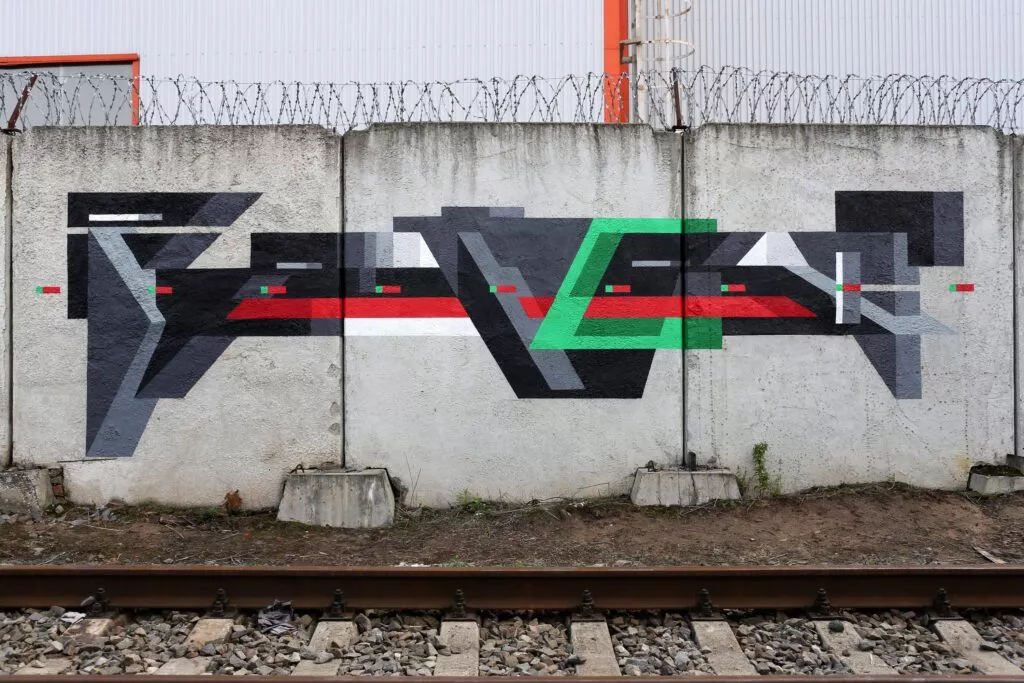
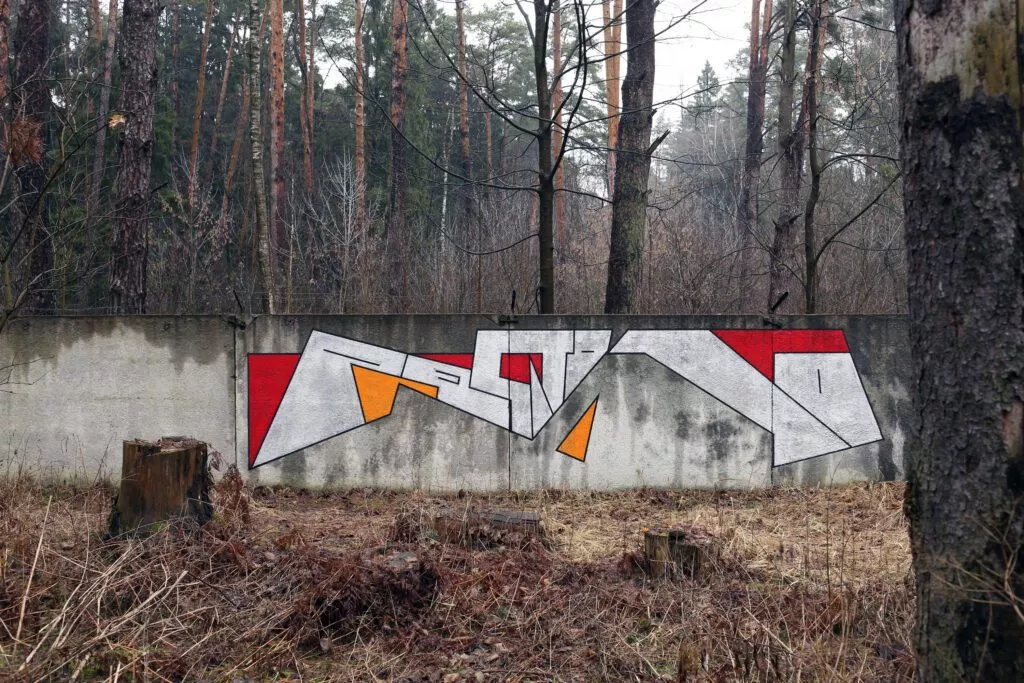
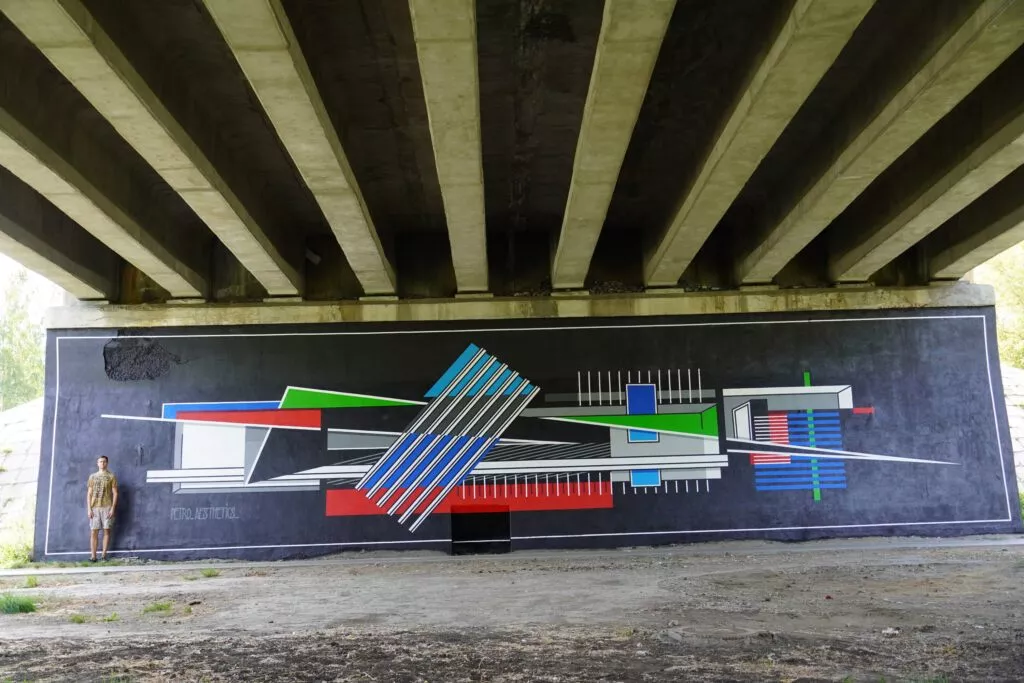
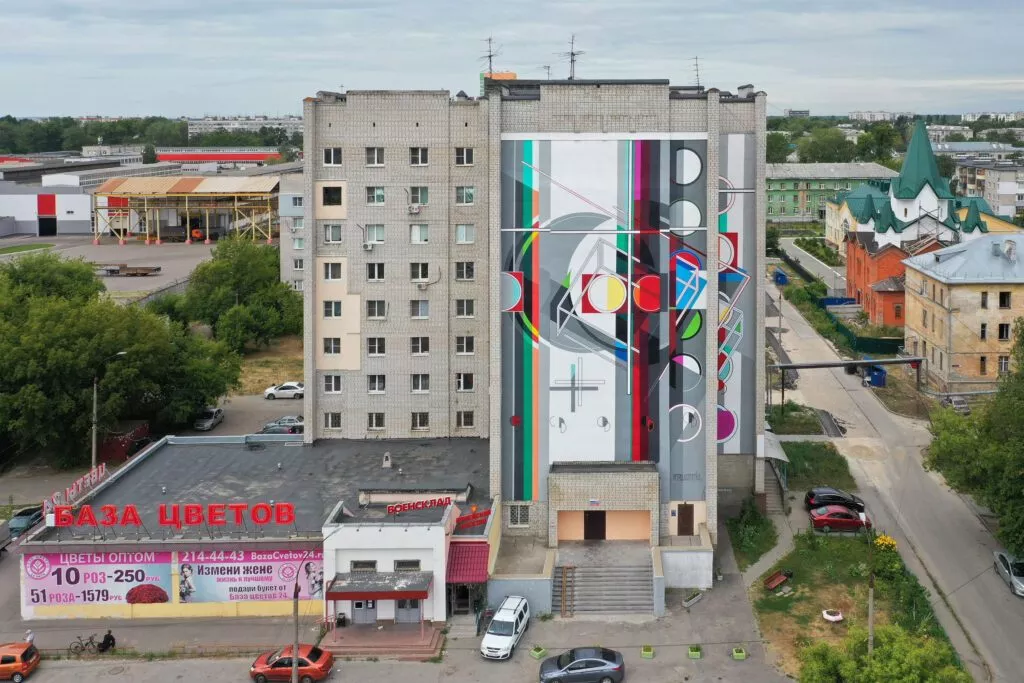
Mind settings and working methods
Starting with classical drawing in color, then sketching in black and white, acquiring the technique of spray paint and then acrylic paint, he was working freestyle for a couple of years. His pieces were created directly on the wall, the lines and the selection of colors were made by intuition. This gave him a big growth for his style development and especially in understanding how body and space work together. But, over time, he realized that this freestyle approach was no longer adequate for the final result he wanted, so he worked again with sketches for outdoors and inside works. But before, he examines the location (at least through a photograph), studies the format and tries to feel through his intuition what he wants to create, and set some kind of mood vectors in mind. When composing, he focuses on his inner sense of harmony, rhythm and relies on his intuition. Then he starts with small sketches on paper, in the form of the main composition in a rough shape, and by discovering interesting “moments” in the sketch, he chooses what he likes and brings it into a larger format, into a clean drawing. Then he starts doing small sketches on paper, in the form of the main composition and a rough shape, and by discovering interesting moments in the sketch, he selects what he likes and brings it into a slightly larger format, into a clean drawing. Afterwards, he creates an overlay on the object with photoshop and corrects if necessary. Then he translates into a vector drawing using graphics programs with outlines, and creating a color scheme for the picture. The choice of the colors is based on a reflection of his inner experiences. In the last few years, he often worked with a consistent range of achromatic and dirty tones, with elements of bright colors, creating a mood of restraint, deep and calm tone, an “adult look“, how he calls it. While transferring the work to the wall or on canvas, improvisational additions are still possible. PETRO mainly works with spray paint and sometimes acrylic paint for more complex tints and moods. His additional tools are tape measure, threads and masking tape of different widths. According to him, a rectangular standard format of 2.20 by 8 meters is ideal for his pieces on walls. For works with abstraction a larger size of 3 by 11 meters is better, more details can be revealed and more empty space is present for the composition. Concerning his studio works, canvas becomes more difficult to implement, technically. PETRO says: “There is a peculiarity that the background no longer exists, and you work more with the context of the idea itself, and not the surrounding space, as is the case with a work outdoors.“ He describes his actual studio works as flat and with pure colors, complemented by various shades. He likes the openness of forms and composition, when color and technique do not disturb the very essence of the work. In the last years, he has been working more on studio works, and realized projects related to urban objects like wallpaintings and murals.
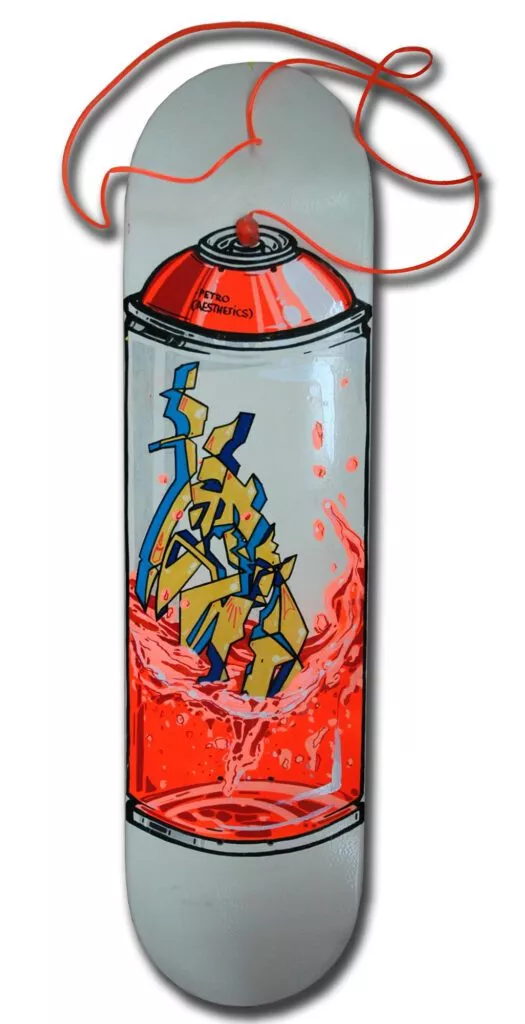
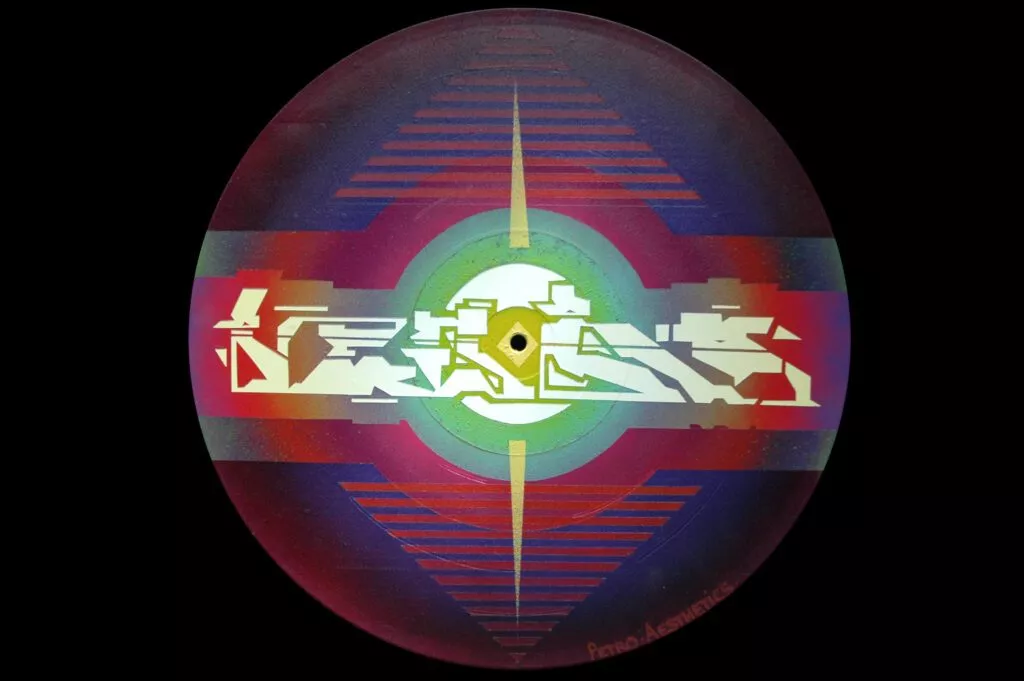
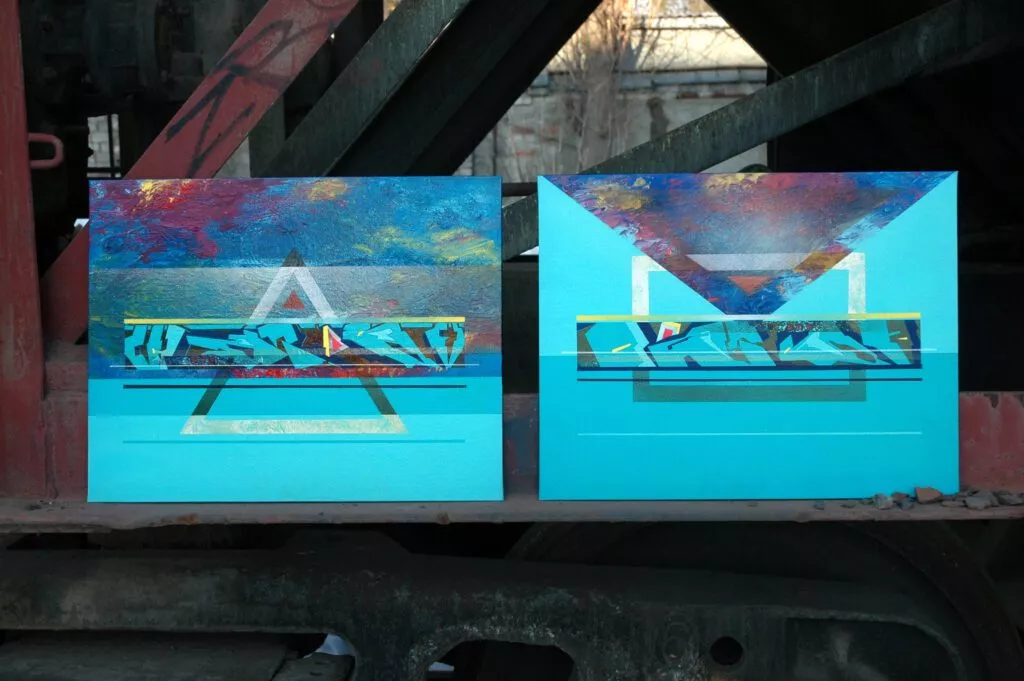
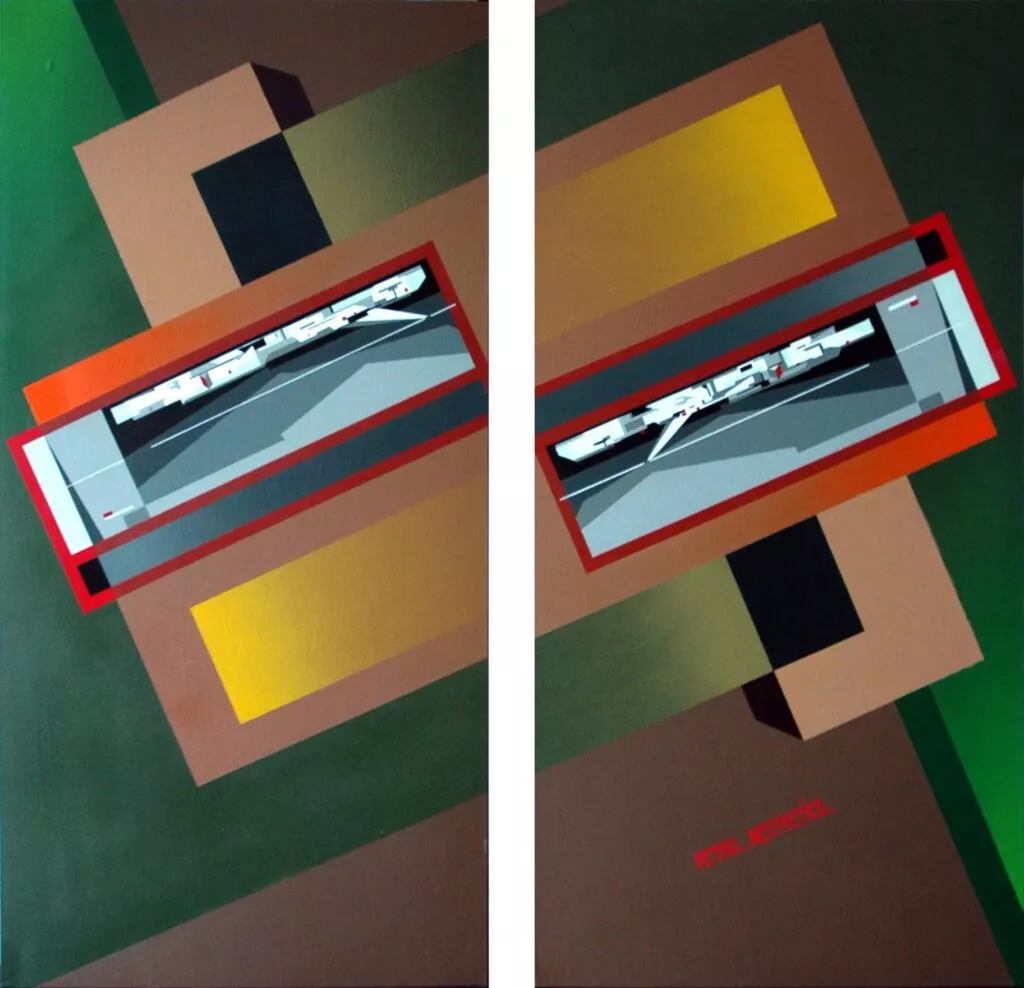
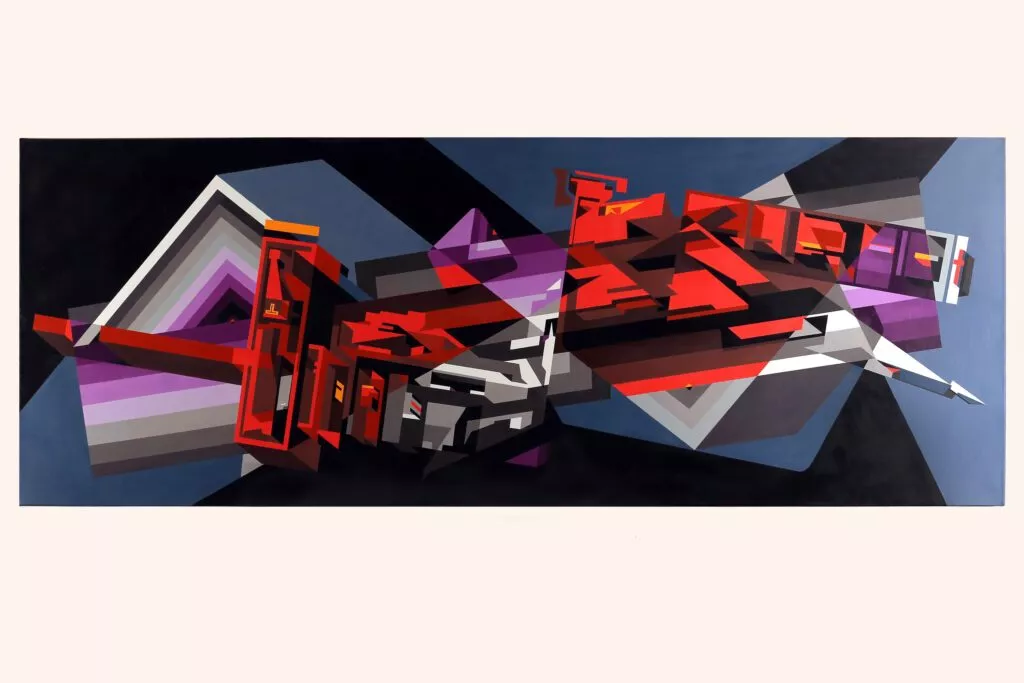
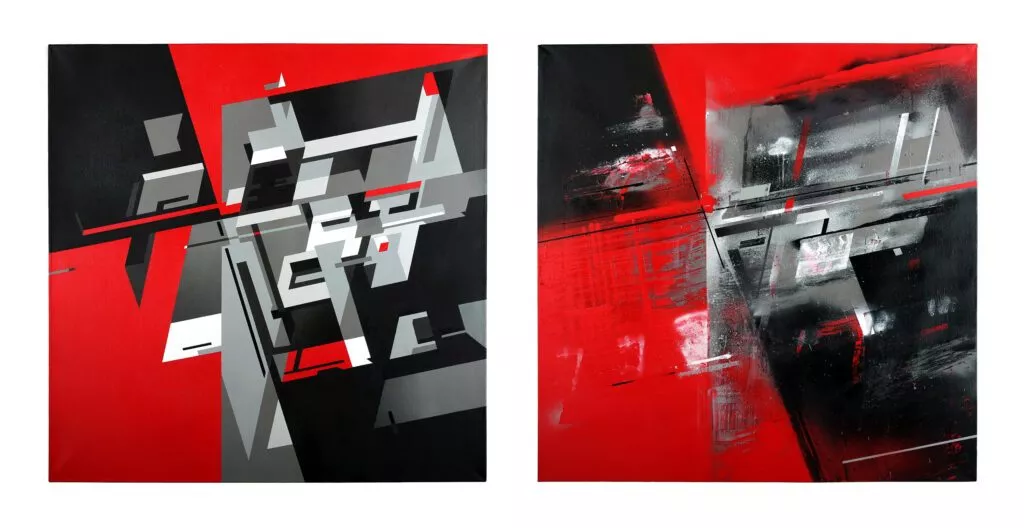
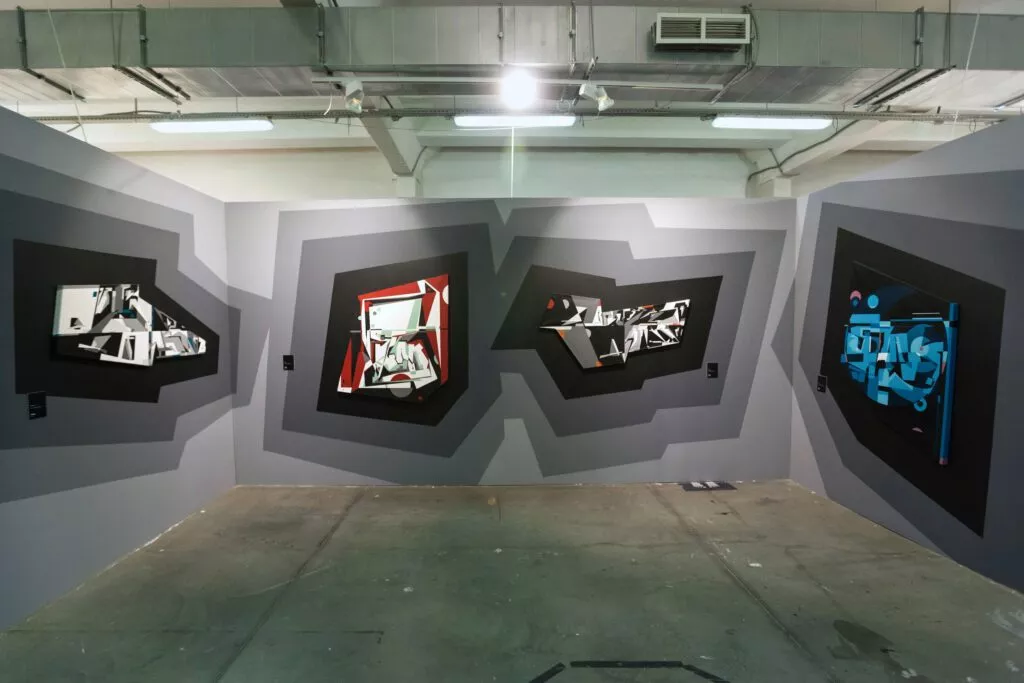
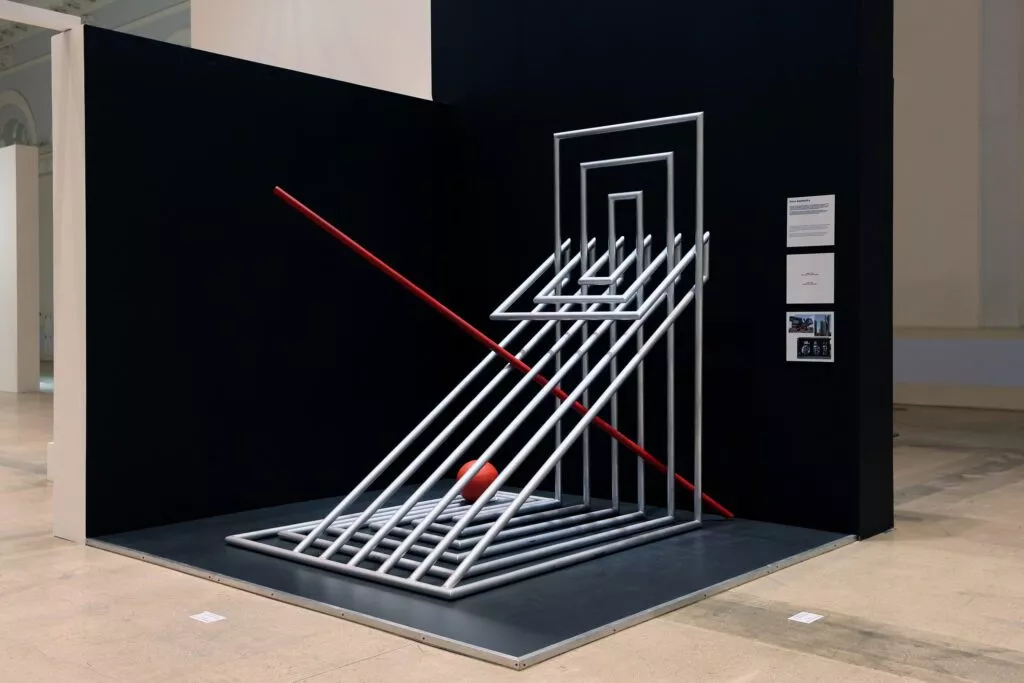
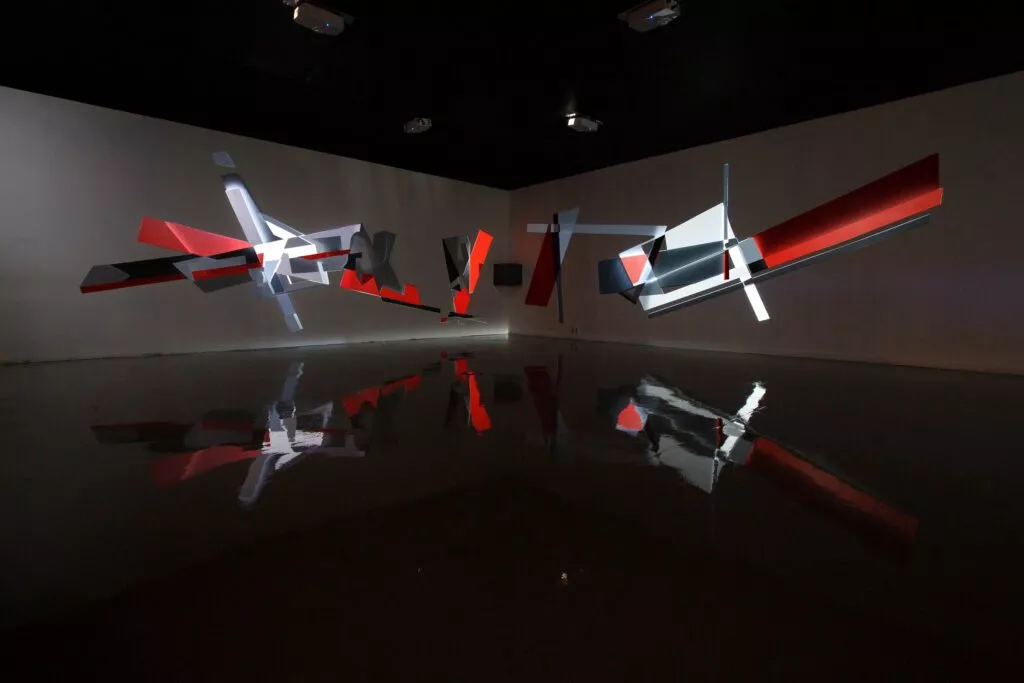
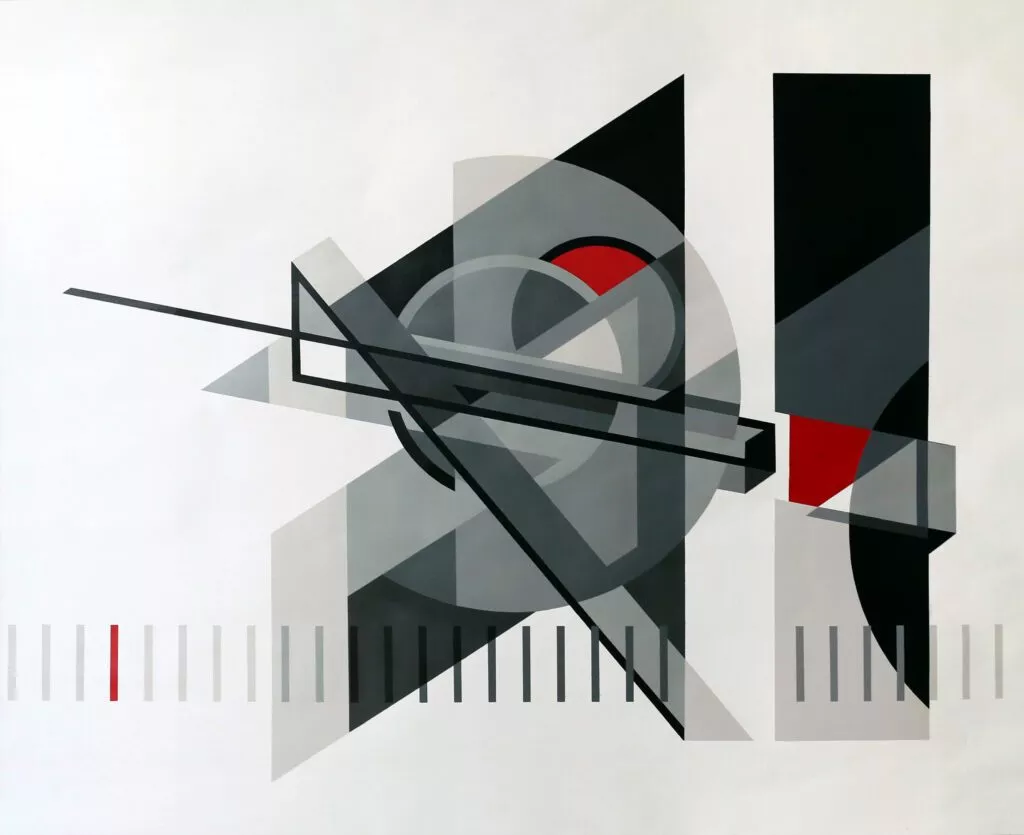
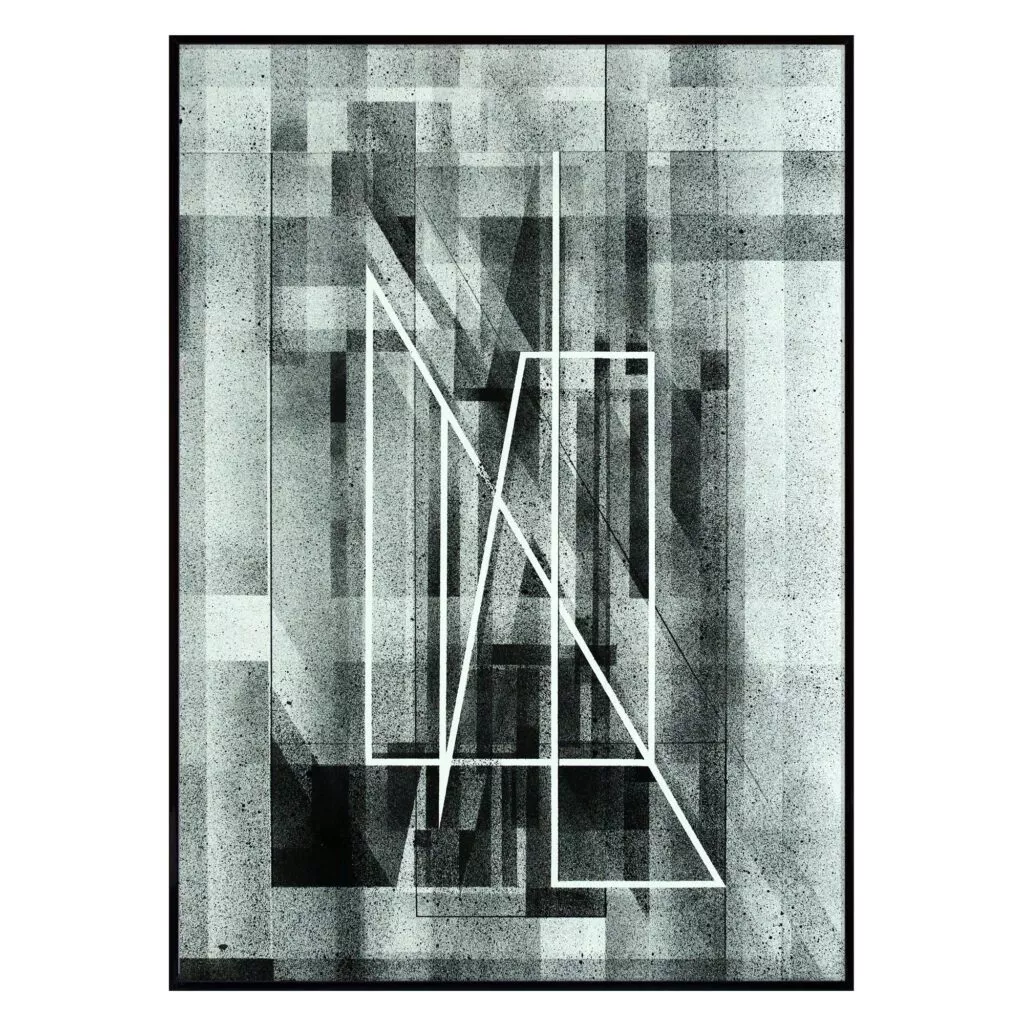
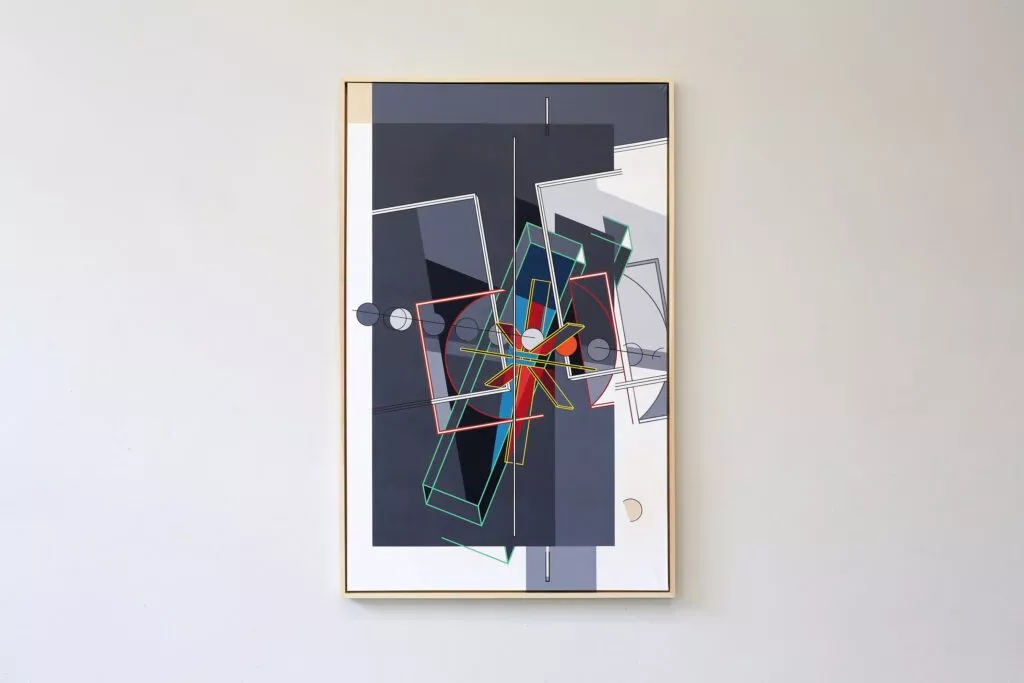
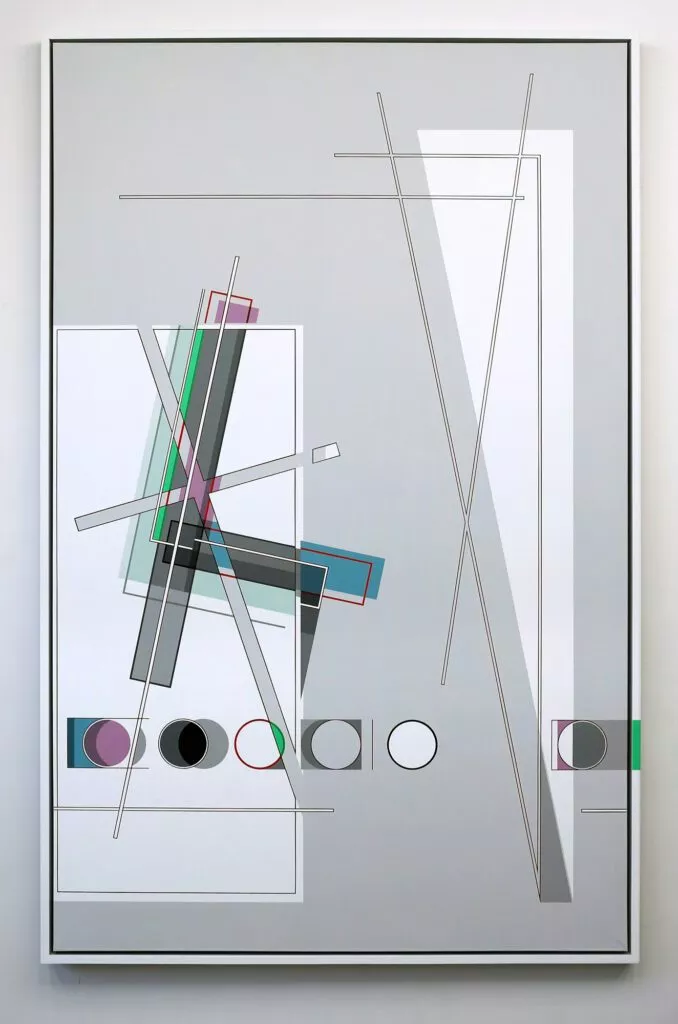
Nowadays he paints more rare free compositions on the walls of his city or other locations, and if he paints on his own walls, which were once “deaf” and became his personal open-air galleries. He is now more interested in the process and the result of the work than in the thrill. And walls give a lot in the formation and the artistic development to a writer, because the background becomes an additional element to the work itself, and creates an important atmosphere of perception of the art work in situ. For PETRO music is a big inspiration while he is working but silence necessary as well where concentration and calmness give full access to the inner channels of the soul and mind. Also, sitting at the table, he likes to interrupt his work for small physical exercises, thereby dispersing the blood and frozen thoughts, to continue to work with a fresh look, as he says. Every action and work, is a reflection of oneself, one’s qualities and acquired life experience, according to him:. „If you are honest with your self-expression, then in your works there is truth, and the energy that we get from the works is a direct dialogue with the artist’s inner world, even if it is abstract. Any form, color, or composition is the addition of all those qualities that every artist finds inside himself, answering every time new questions about life and its taste – thus development takes place. I think that the connection that passes through creativity is a mirror of my inner qualities and feelings, but this cannot always been said, for instance, in relation to other things. Therefore, any development is a two-sided moment, when the internal and external walk at the same step.“.
In 20 years of practice, PETRO tried different approaches, techniques and different media to express himself. He is one of the main protagonists of graffiti writing in Russia and a recognized multidisciplinary artist, has taken part in countless festivals and exhibitions, has been a curator, participated in art residencies, received various awards and his art works are represented in private and public collections.
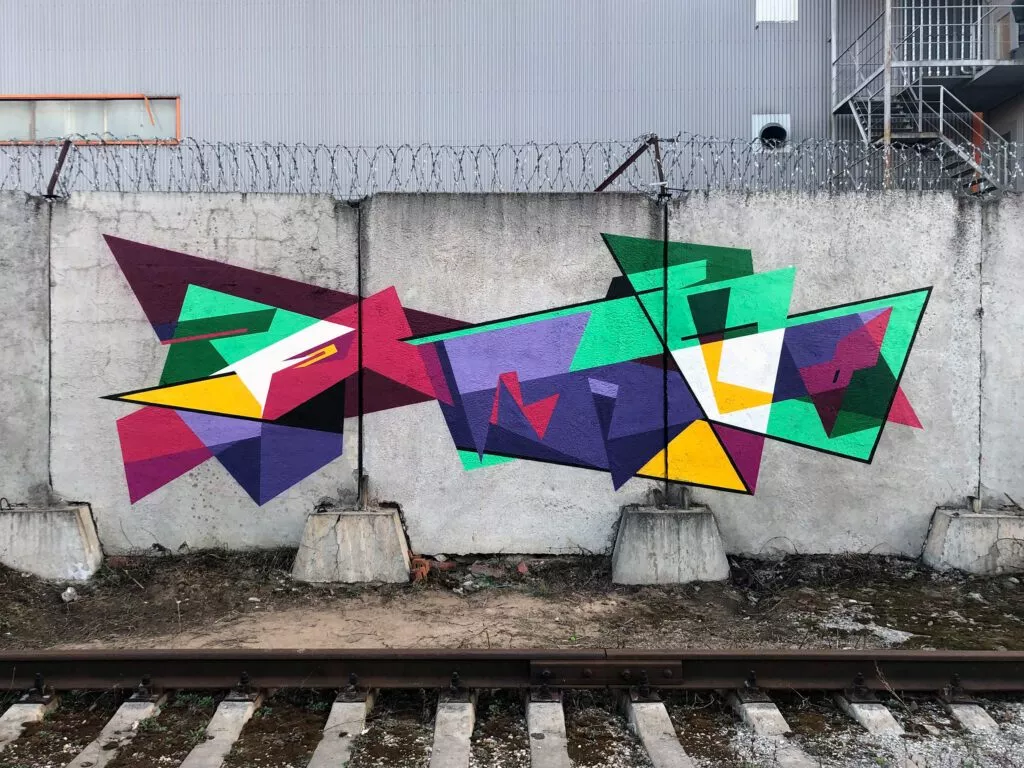
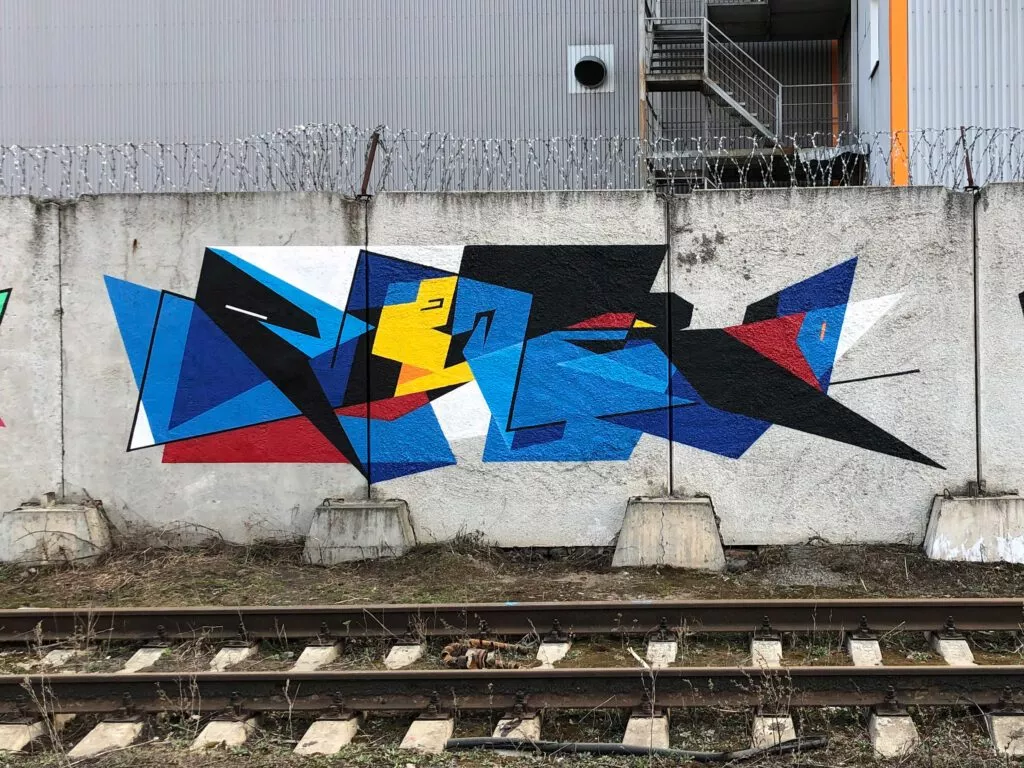
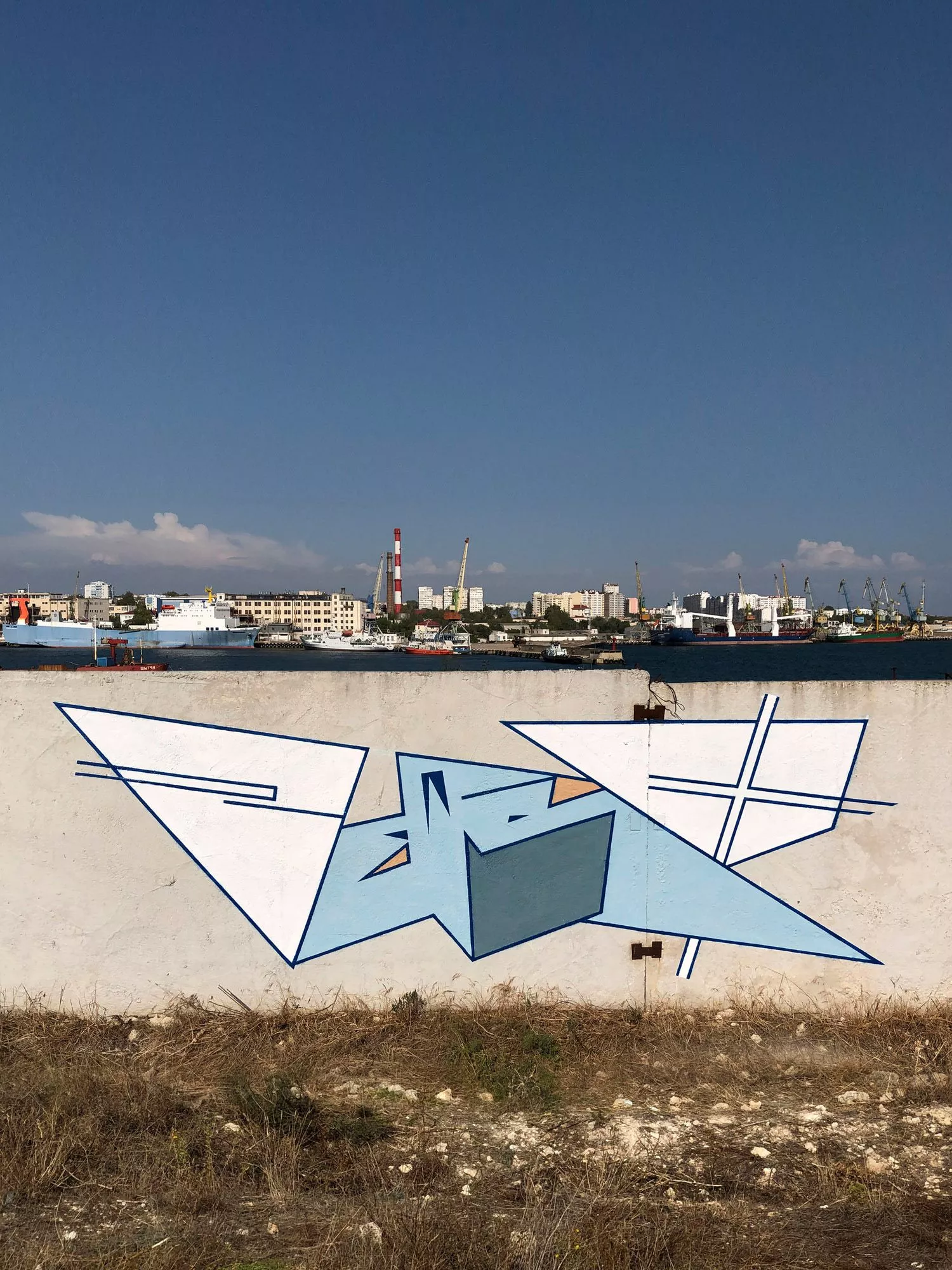
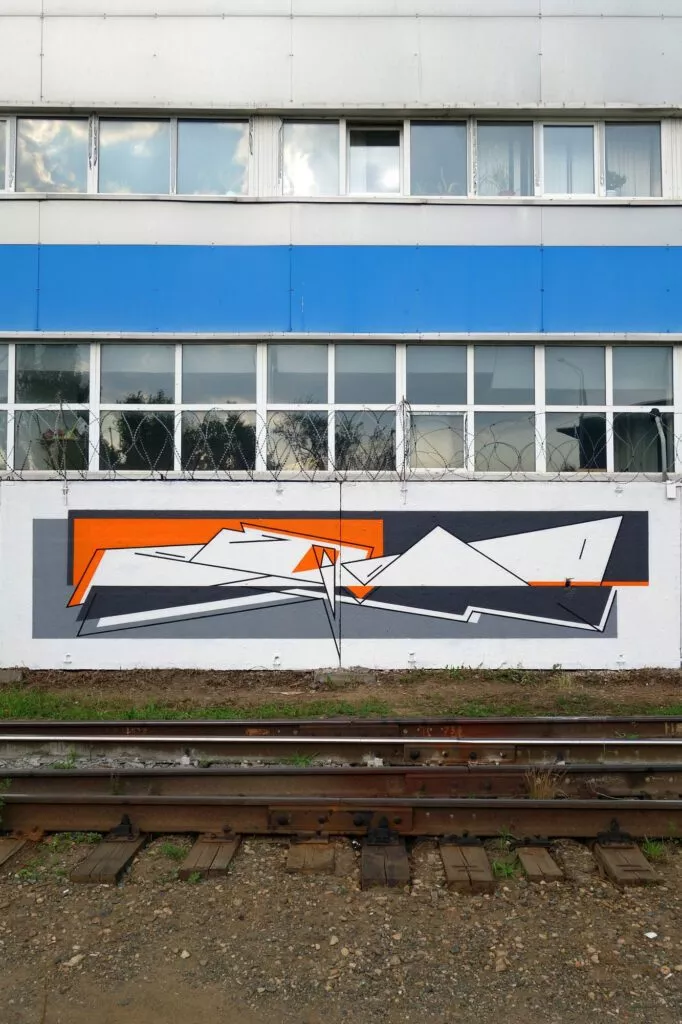
975 views
Categories
Tags:

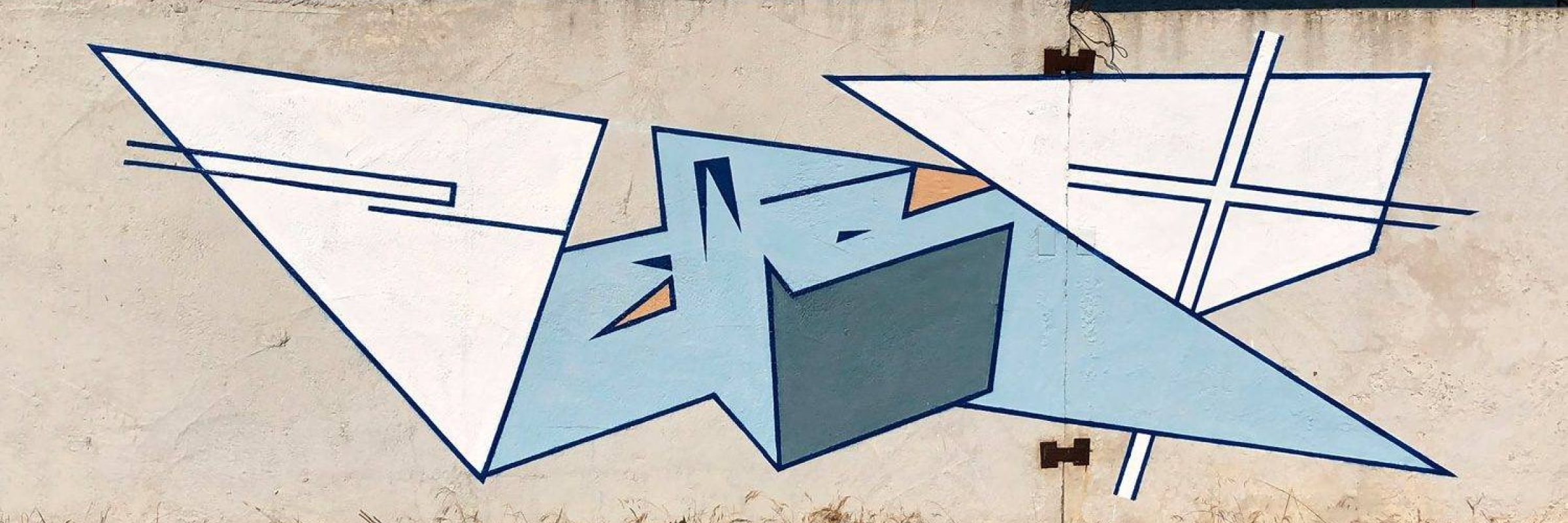

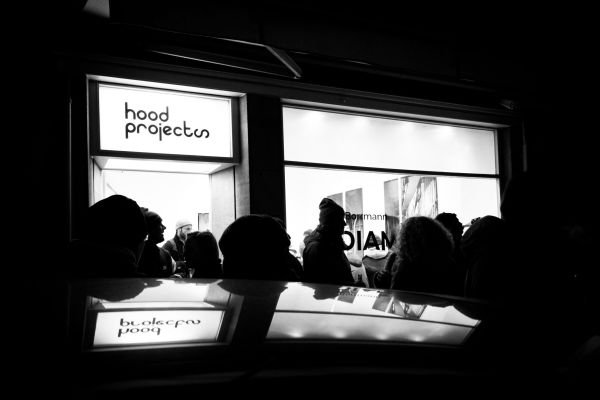
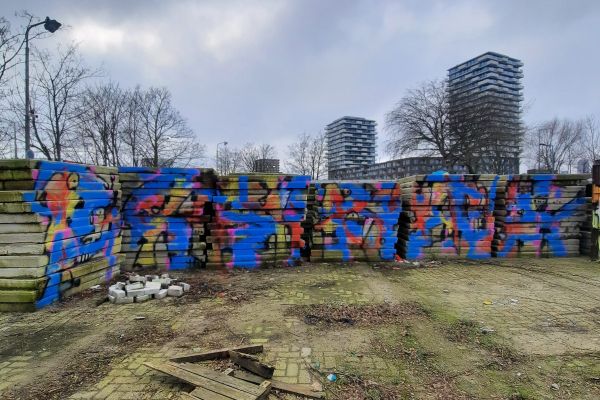
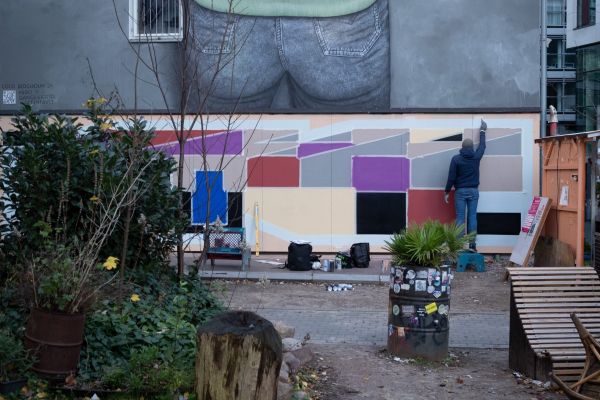
Leave a Reply